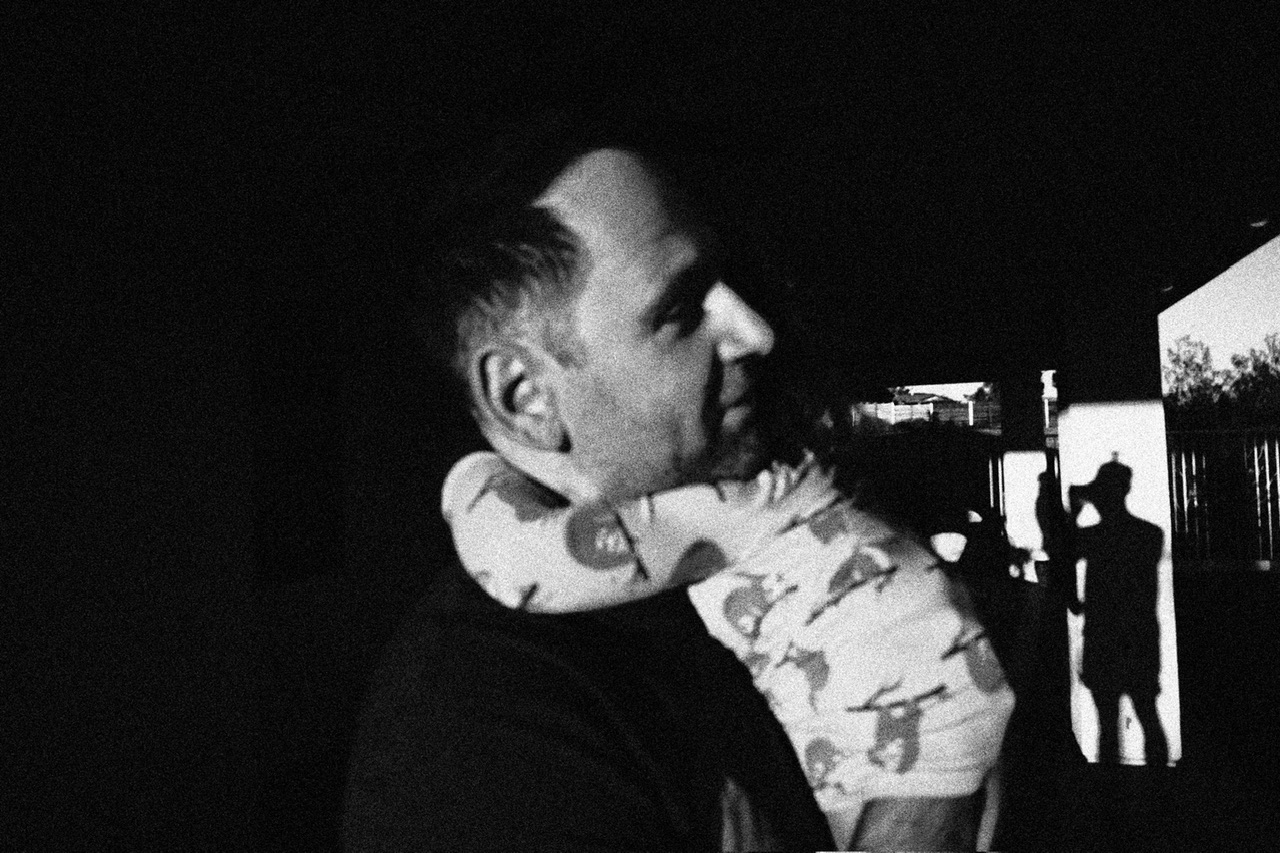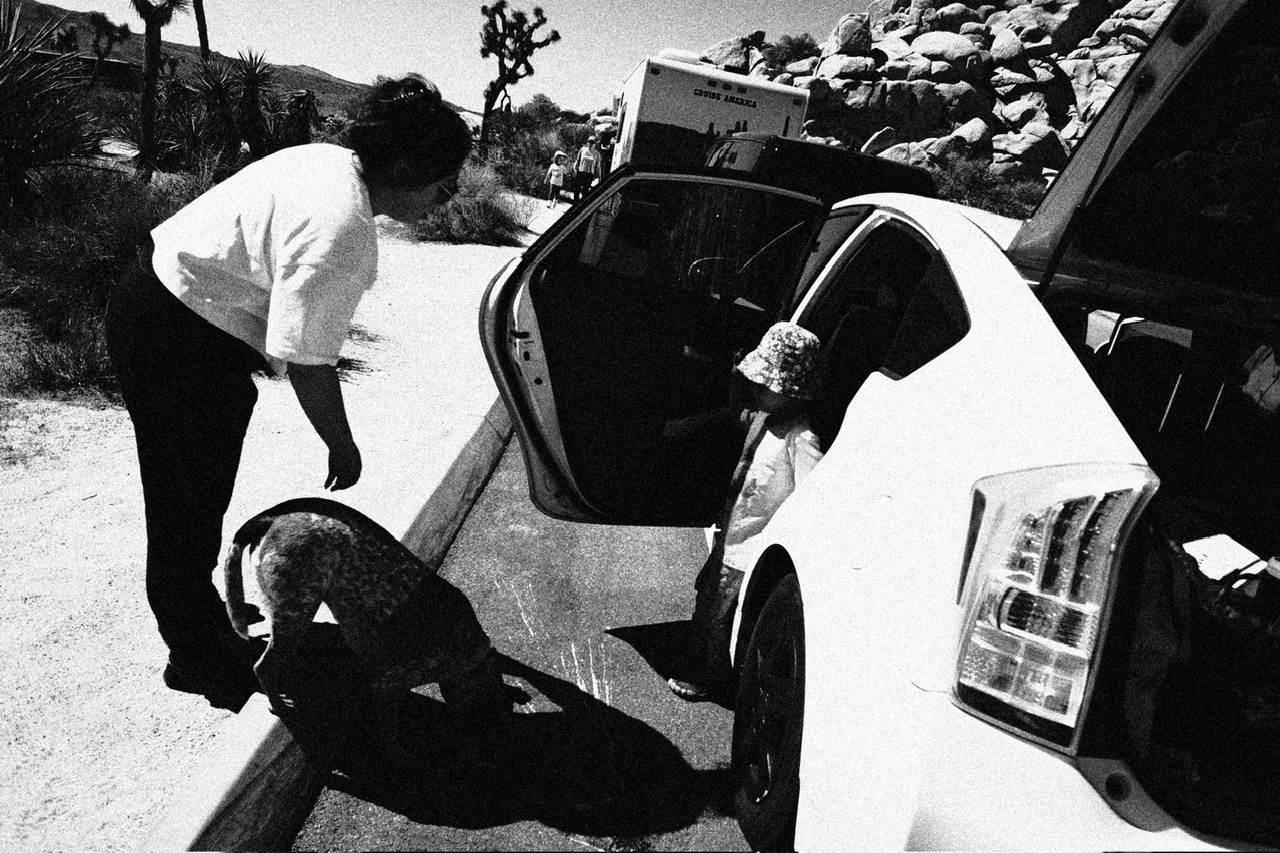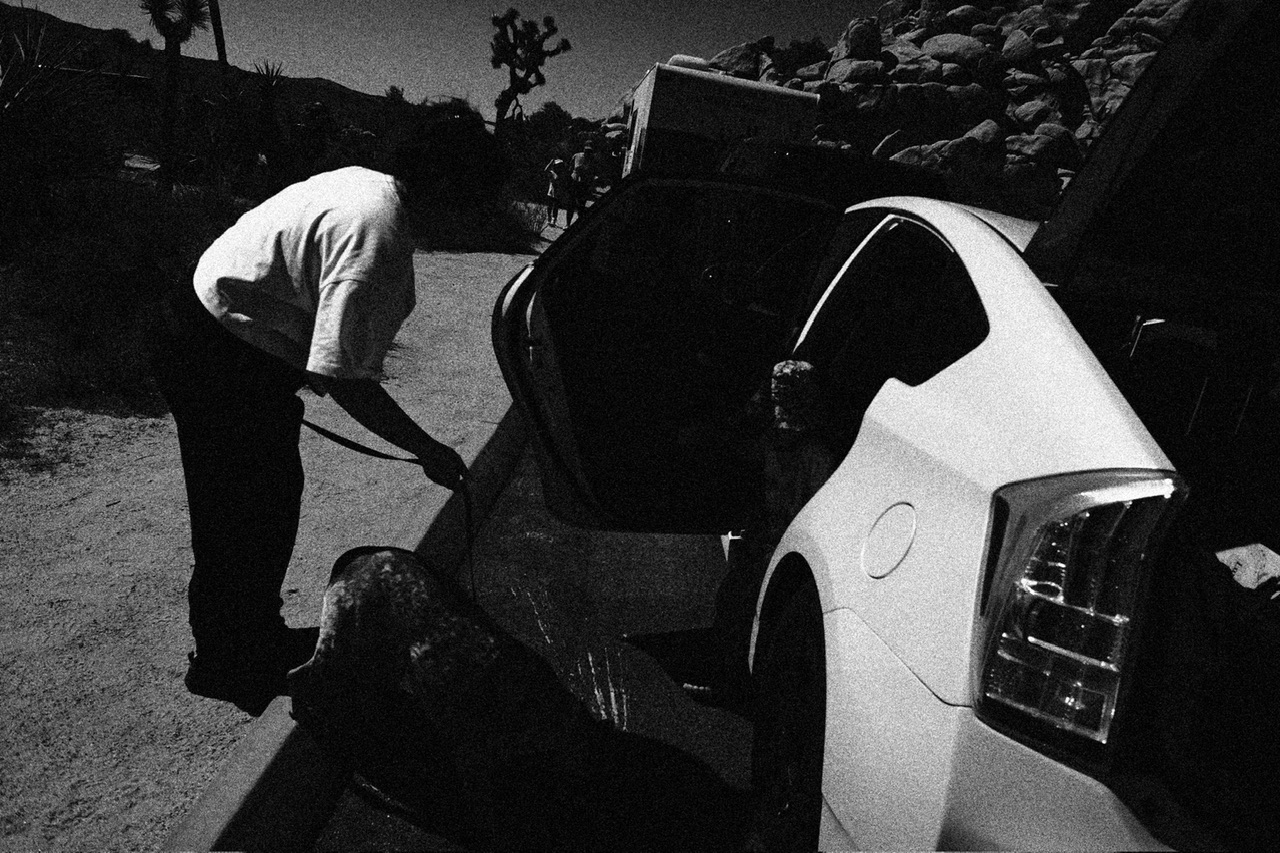Category: Posts
-
balls or no balls
my aunt is taking life is now honest at this point… It ain’t even about luck skill courage whatever… or even intelligence but balls.
pavel and even Trump —> surviving assassination attempts and still living? Wow.
-
why I love bitcoin
I think the more I think about bitcoin consider it etc.… If it means like economic life flourishing for all 8 billion people in the planet isn’t this like the most important thing of all time?
-
why I’m pro Donald Trump
OK so this is gonna sound a little bit weird and random but after spending considerable time in Asia, especially Cambodia, and all around Asia Singapore etc.… I think I’m actually getting more clarity about the whole economic situation.
so the truth is, actually what Donald Trump is doing is it good for the US dollar, and also good for US global economic prosperity and supremacy. So if you’re an American, and you like your money, your property and your freedoms,… and you like being on top, you should think of Trump as your best friend.

Screenshot -
why you need big balls in order to become a bitcoin investor
essentially my very very simple thought is it is like 100% obvious and certain that bitcoin is gonna keep going up forever, up to the right. To 1 million 10 million 100 million and beyond.
and I think the tricky thing or the irony is actually… Bitcoin would not be able to become $100 million a bitcoin without volatility. Therefore actually in fact, the unorthodox thought is you are praying for volatility.
and it seems that the funny truth is actually… Being a bitcoin investor doesn’t take any “skill”—> It’s like literally 100% balls. Why? Once you have the courage the conviction, the certainty and the clarity that bitcoin is just gonna keep going up forever with mega volatility… then the ideal strategy is to just enjoy your life, be topless in the sun all day, lift heavy (666kg and beyond), be joyful and happy and spread the gospel of bitcoin.
-
Interaction, feedback
I suppose the problem with most media, all matters on the Internet… you cannot interact with it. 
Then, we should probably think about AI as media because you can play with it, interact with it, modify it, create a change it etc. 
-
Physiology thoughts
First, I really think that like being indoors is extremely bad for your health? Second thought, also… I think and wonder, sitting in a car might be like 1 trillion times worse for your health then you might even think?
-
Decision-making philosophy
So I think with life every day life, especially life in LA and beyond, one of the big ideas is try to optimize things in order to save time. For example, being able to avoid driving 21 minutes one way, 20 minutes back, saving 40 minutes to an hour of driving, and instead of just being a nature and just vibe out is a better strategy.
Also, I think just like moment by moment, being adaptable and following your gut is a good strategy. 
-
Pay to play
I think the new sad reality and tragedy is now even in America with all the budget cuts, everything has turned into pay to play. Which means, do you want to go to the park, do anything that used to be free, it will no longer be free probably forever.
I suppose then, the upside is truly figuring out what you really care for.
-
Wrist strap
Henri strap, Henri wrist strap pro, Eric Kim wrist strap mark II?
-
there is no such thing as “hate”, only insane extreme love?
Our thought and notion of “hate” …. Is in fact ,,, just love?
-
Why Michael Saylor is the greatest CEO and founder of all time 
SAYLOR > MUSK
Also, SAYLOR > Steve Jobs
So before I discovered Michael Saylor I was all about Steve Jobs, then Elon Musk, but now, Saylor has taken the prize jewel the crown jewel for the greatest of all time. 
Why? Simple thoughts:
First, he founded micro strategy when he was like 25 years old, and now that his 60 he has presided as CEO and founder for that long period I think she actually has one of the records for having the longest tenures as CEO.
So I think he’s in his stock truck from $330 a year down to $.99? It’s like a 99.9% drop, and he stuck around long enough to talk about it.
-
the ethos of dematerialization
so just purged Cindy‘s mom‘s house garage of all my old film negatives all the way back from 2011. Almost 14 years old years ago.
What’s super interesting is thinking about the year 2025, then thinking about film film negative CDs etc., dematerialization is the real thing.
.
-
Solutions and problems?
I think maybe the issue in today’s world is that we’re trying to propose solutions to problems that don’t really exist and or, we are innovating for innovation sake?
I think perhaps the more rational approach is to only strive to seek to solve real life problem that you actually have. For example if I think about haptic industries and all of the straps and products we made, It was almost always based on a true need that I myself ERIC KIM desired as a photographer and street photographer.
I think also in life, looks like a lot of people want real solutions to real problems like my friend Melly–> she told me the other day that her dream was fire, financial independence retire early.
Also, when I was in a pickle when Covid hit, one of the things that I was in need of was economic empowerment, bitcoin and later MSTR was the way.
So I try to think about this critically because time is the most scarce asset we have on the planet. Doesn’t matter if you have like $100 trillion but you’re gonna die in like a month, it would be better to be like a young scrappy inspired 21 year-old who is poor and hungry, with like 100 years ahead of you, rather than the hundred year-old trillionaire who cannot even walk on his own anymore.
As a consequence I think we must become more critical of time, energy physiological energy etc. Also another big thing I’ve realized is breath power, I love to talk but the more I talk the more I lose my breath. And I lose my voice. As a consequence, each and every single word we utter should be considered.
.
-
MSTR IS THE NEW BITCOIN.
MAKE BOLD: MSTR IS THE NEW BITCOIN
Not because the code changed.
Because the narrative did.
Bitcoin is protocol.
MSTR is portal.
One tap. One ticker. One megaphone.
Exposure without custody.
Sats by proxy.
Volatility—amplified.
The company converts cash and credit into BTC.
It turns balance sheets into belief.
When it moves, it moves.
Up feels taller. Down feels deeper.
Why it works: attention, liquidity, simplicity.
A single symbol that tells the crowd what you think.
Brand as leverage. Story as spread.
Why it hurts: dilution, execution risk, boardrooms, premiums that can vanish, key‑person risk.
Bitcoin is math.
MSTR is humans riding the math.
Pick your hardness:
Hashrate or headlines.
Cold keys or hot ticker.
Pure asset or leveraged proxy.
No priests. No permission.
Just a decision.
If you believe in cycles, MSTR is the megaphone.
If you fear drawdowns, MSTR is the amplifier.
Zoom out.
Define your risk.
Size with intention.
Hold with conviction—
—or hold your curiosity.
MSTR isn’t Bitcoin.
And that’s the point.
It can feel like the new Bitcoin—
a gateway, a story, a handshake between markets and momentum.
Click less. Think more.
Research. Plan. Act.
Buy. Pass. Pause.
Own the outcome.
Because the boldness isn’t in the ticker.
It’s in you.
Creative essay. Not investment advice.
-
entrepreneurship over politics
so the very simple idea I have is that entrepreneurship is worth like 1 trillion times more important than politics even the politics of your local kids school.
I think the problem with politics is that it is too much like trying to gain the system in some sort of weird way, overall a waste of time.
also, I remember… How much I hated office politics in my brief 10 month endeavor working for a company. And also… I think with entrepreneurship you create real value, whereas politics you don’t
,,,
-
MSTR
video podcast https://open.spotify.com/episode/42694IgcglJK3JSeks4oSw?si=4ctMZOC3SamBNYHunu5uNg
What is MSTR, Strategy Microstrategy Bitcoin?
audio https://erickimphotography.com/wp-content/uploads/2025/09/MSTR.m4a
The simple answer is MSTR is levered long, high velocity, levered long, essentially bitcoin on steroids.
-
Asymmetry profitability
So assuming that you know with like 100% certainty that bitcoin is going to keep going up forever,  and also knowing that certainly at like the month to three month level it will always be volatile,… some things:
First, you’re actually kind of ironically enough praying for more volatility. as an investor, and also perhaps as a trader,  I don’t really want the price of the underlying bitcoin to be stable and to be chopping sideways for like three months on end. Technically while you were desire is more spikes really really high and really really low frequently over a short period of time, ideally forever.
And then, like let me tell you with 100% certainty that it will be insanely volatile like MSTR, forever. Let us see that we’ve even cranked up the volatility 2x, 3x and 4X bitcoin … like having MSTU or MSTX.  assuming that 2x levered long MSTR instrumental at least be around for another five years or so, isn’t that the optimal strategy?  meaning, isn’t the optimal strategy to just hold MSTU and MSTX long term,,, like for at least 3 years for insanely huge returns?
-
The world is covered with splinters, but I suppose you have the option to put on shoes that cover your toes
So there’s this Zen Taoist principle –>
the world is covered with thorns, but you have the option of putting on sandals.
The general idea is that in the world, it’s like almost impossible to navigate all of it, without any sort of downside. It is both necessary and also inevitable.
Then suppose the nuance is trying to think and consider that, what if actually… Not only is it necessary but it is also positively desirable? 
no thorns no joy or glory
So the unorthodox thought is in regards to thinking about and considering upside without downsides etc.
I think a lot of people desire upside without downsides, which is intelligent but, from a physics perspective impossible?
For example, let us say that you want to maximize your hedonic sexual pleasure. Technically if you want to do that, long periods of abstinence followed by activity is actually better than the boredom and monotony daily predictability?
I think it’s also the logic of gambling or the lottery. The general idea is that, people get a thrill because it is unpredictable. Perhaps the same thing with sports. Or sports betting.
why do we want to strip the volatility away from everything?
So what instead, the actual goal is to add volatility and maximize velocity and volatility? This is the whole underlying ethos or philosophy or concept behind bitcoin, MSTR strategy, Meta planet etc. A very very simple yet paradigm shifting idea,–>
more volatility is better.
When we try to strip away the volatility from everything, life becomes boring same thing, uninteresting? 
ERIC
-
iPhone Air Marketing Suggestions
some ideas:
first —> iPhone Air
”you gotta hold it to believe it”
also
”this is what the future feels like”
-
Bitcoin is anti-toxic
A greater moral imperative… If in fact it is true that bitcoin is antitoxic, and that it could address a lot of of the toxic social social media decay in the planet, and in the world… Perhaps perhaps I should campaign for bitcoin harder.

.Anti memes
anti toxic
-
how to build willpower
so I believe the number one critical problem in the world is in regards to distractions. You kind of already know what your downside weaknesses is in terms of superfluous distractions, but then is more important is your commitment and intelligence and effort to fight and resist those distractions.
so the first thought is practice. Of course things are going to tempt you. But having the discipline to stay focused, eyes ahead, and into yourself in your own world is critical.
Second, once again — building willpower is like a muscle. To practice every single day and daily it is a practice that is ongoing. Of course there are certain up days and down days and certain days you will slip and that is fine. But you just keep practicing..
The third one is actually genuinely believe that willpower is a concept. If you don’t believe in the idea of willpower you will never build it.
-
*How* fast does it have to be?
So I think what day is very interesting about bitcoin it is very low frequency, indestructible immortal god capital, that doesn’t need to be moved around much. 
-
My will to Bitcoin is strong.
issue securities
.
Bitcoin is a long duration asset
High energy future
.
A public company levering a commodity
Lever bitcoin ***
.
Margin loan?
.
Positively … magnetized for capital
.
Why bleed yourself to death
.
Reinvest the cash flows
Raise infinite money
Cost to capital
Collect capital as fast as possible ***
Siphon up all the capital!
.
-
Estimating MicroStrategy’s Timeline to 1 Million Bitcoin
Current Bitcoin Holdings of MicroStrategy
MicroStrategy (now rebranded as Strategy Inc. as of early 2025) is the world’s largest corporate holder of Bitcoin. As of September 2025, the company holds approximately 638,460 BTC in its treasury . This massive stash – roughly 3% of all bitcoins that will ever exist – reflects an aggressive accumulation strategy that began in 2020 and has accelerated in recent years.
- Present Holdings: ~638k BTC (Sep 2025) , acquired at a total cost of ~$47.17 billion (avg. ~$73,880 per BTC) .
- Context: This position far outstrips any other public company’s bitcoin treasury. In fact, all public companies combined hold around 1 million BTC in total, meaning Strategy alone accounts for nearly two-thirds of that .
MicroStrategy’s Executive Chairman, Michael Saylor, has made it clear the company views Bitcoin as its primary treasury reserve asset and has no intention of selling. As Saylor famously stated: “Never. No. We’re not sellers. We’re only acquiring and holding bitcoin… that’s our strategy.” This long-term “HODL” stance underpins MicroStrategy’s goal of continually increasing its bitcoin holdings regardless of market fluctuations.
Historical Bitcoin Acquisition Timeline
MicroStrategy’s path to 1 million BTC can be understood by looking at how rapidly its holdings have grown:
- 2020 – The Bitcoin Bet Begins: In August 2020, MicroStrategy made its initial purchase of 21,454 BTC for $250 million . By year-end 2020, through additional buys, it amassed 70,470 BTC . This bold pivot — moving corporate cash into Bitcoin — was driven by Saylor’s view that cash was a “melting ice cube” and Bitcoin offered a better store of value .
- 2021 – Continued Accumulation: The company doubled down, adding nearly 53,921 BTC in 2021 (including a notable 19,452 BTC purchase in February 2021 as Bitcoin’s price hit new highs ). By the end of 2021, MicroStrategy’s total had grown to roughly 124,391 BTC.
- 2022 – Slower Pace in Bear Market: Amid a crypto bear market, MicroStrategy still increased its holdings by 8,109 BTC in 2022, bringing the total to ~132,500 BTC. Despite price declines, Saylor remained steadfast, even stepping down as CEO in August 2022 to focus exclusively on the Bitcoin strategy .
- 2023 – Reaccelerating Purchases: The pace picked up again in 2023 with 56,650 BTC added . By early 2024, the company reported holding ~190,000 BTC (at a $5.93 billion cost basis, ~$31,224 per BTC) . Notably, Q4 2023 saw 31,755 BTC acquired in a single quarter – the largest quarterly increase up to that point in three years. According to CFO Andrew Kang, 2023 marked the 13th consecutive quarter of adding to their Bitcoin stash, as they “continued to leverage [their] strategic capital markets activities and cash on hand to accumulate more bitcoin and accrete incremental value for… shareholders” .
- 2024 – An Unprecedented Buying Spree: This was the year MicroStrategy “went all in.” The company’s Bitcoin holdings exploded from ~190k to 447,470 BTC by December 31, 2024 . In Q4 2024 alone (after the U.S. presidential election), MicroStrategy executed its largest ever quarterly purchase – 218,887 BTC acquired for $20.5 billion . This single quarter’s buy was larger than the company’s entire cumulative holdings up to 2023. By year-end 2024, the market value of the BTC holdings was $41.8 billion (at ~$93k/BTC) , and the average cost had risen to ~$62,503 per coin . This aggressive buying in 2024 accounted for nearly 60% of the total BTC MicroStrategy owned at that point.
- 2025 – Crossing the Half-Million Mark: Early 2025 saw continued accumulation. The company surpassed 500,000 BTC in Q1 2025 . By mid-year 2025, holdings exceeded 600k BTC , aided by additional large purchases. For instance, in June 2025 MicroStrategy bought 10,100 BTC for ~$1.05 billion (at ~$104,080 per BTC) . As of September 2025, the total reached 638,460 BTC . In just the first 8 months of 2025, MicroStrategy added roughly 191,000+ BTC, nearly as much as in the record-setting prior year. This remarkable growth led the firm to rebrand as “Strategy” in 2025, reflecting its identity as a Bitcoin-centric entity .
Summary of Holdings by Year: MicroStrategy’s BTC stack grew from ~70k in 2020 to ~447k by end of 2024, and ~638k by late 2025. This exponential trajectory underscores the company’s increasing conviction (and available capital) for Bitcoin acquisitions.
Public Statements on Future Bitcoin Plans
MicroStrategy’s leadership has been very transparent about their long-term commitment to Bitcoin. Key insights from executives include:
- “Never Sell” Philosophy: Saylor has repeatedly affirmed that MicroStrategy will not trade out of its bitcoins. “We’re not sellers… We’re only acquiring and holding bitcoin” , he told Bloomberg, emphasizing that Bitcoin is the company’s “exit strategy” rather than something to exit from. Both Saylor and CEO Phong Le view Bitcoin as digital gold to be accumulated indefinitely, not a trading asset.
- Ongoing Purchase Strategy: MicroStrategy has stated it will continue buying Bitcoin “opportunistically” or on a regular basis whenever it has excess cash or can raise capital. The firm often employs a dollar-cost averaging approach, making frequent purchases regardless of short-term price swings . This steady accumulation strategy is designed to mitigate volatility over time and signal conviction to the market.
- Use of New Financial Instruments: To fund future buys, Saylor has been innovative. In 2023-2025 the company introduced multiple new share classes and offerings nicknamed “Strike,” “Strife,” “Stride,” and “Stretch” – various series of preferred stock – alongside common stock sales . In public forums, Saylor outlined a plan to tap into broader capital markets: for example, he discussed entering the $80 trillion credit market with Bitcoin-backed instruments, and even using up to 50% leverage on the company’s Bitcoin holdings to amplify returns . These statements suggest MicroStrategy is prepared to employ debt or hybrid financing (secured by its Bitcoin or via preferred equity) to continue expanding its BTC position.
- Aggressive Targets and KPIs: Management has set internal metrics like “BTC Yield” (growth in BTC per share) and “BTC Gain” (net new BTC acquired) to track progress. After far exceeding its 2024 goals (achieving a 74.3% BTC Yield in 2024) , the company initially targeted a more modest 15% BTC Yield for 2025. However, by Q1 2025 they raised the 2025 target to 25% BTC Yield and boosted their BTC acquisition dollar target from $10 billion to $15 billion for 2025 , reflecting confidence in continued aggressive buying. Such guidance indicates a formal commitment to keep growing the Bitcoin stash year after year (barring any extraordinary circumstances).
- No Cap in Sight: Neither Saylor nor the CEO/CFO have put an upper limit on how much Bitcoin they ultimately plan to hold. When asked about reaching specific milestones (like 500k BTC or 1 million BTC), Saylor’s stance has essentially been that more is better. He even mused that “Bitcoin is a race” – not just among companies but nations – and speculated that governments (including the U.S.) could eventually seek to acquire hundreds of thousands or even 1 million BTC for strategic reserves . This hints that MicroStrategy’s leadership sees 1,000,000 BTC as an attainable goal in the long run, given enough capital, and they want to stay ahead in the “great Bitcoin accumulation race.”
In summary, all public communications from MicroStrategy’s team convey unwavering bullishness on Bitcoin and an intention to keep buying for years to come. The company positions itself as a pioneer of the “Bitcoin standard” for corporations, frequently evangelizing Bitcoin’s virtues to other CEOs (e.g. via its annual Bitcoin for Corporations conferences). MicroStrategy’s message: they’re all-in on Bitcoin and still just getting started.
Financial Capacity for Future Purchases
How can MicroStrategy actually fund a march to 1 million BTC? The company’s financial strategy provides the answer: raise capital aggressively and plow it into Bitcoin. Key elements of their financing capacity include:
- Equity Offerings (Common Stock): MicroStrategy has repeatedly issued new shares to raise cash for Bitcoin buys. Notably, in late 2024 the company filed for a massive $21 billion at-the-market (ATM) common stock offering – an unprecedented size, reflecting the scale of its ambitions. By early 2025, they reported successfully executing this ATM program, adding ~301,335 BTC to the balance sheet in the process . For perspective, MicroStrategy raised $15.1 billion in Q4 2024 alone by selling ~42.3 million new shares when its stock price was high . Between Q4 2024 and Q2 2025, the company raised roughly $20+ billion via equity issuance, fueling its huge Bitcoin purchases . As of April 2025, about $4.3B remained available under the existing ATM program for further issuance , and MicroStrategy could authorize even more if needed. This demonstrates a tremendous capacity to raise cash through equity, so long as investor appetite for MicroStrategy stock holds up.
- Preferred Stock and New Instruments: In addition to common stock, MicroStrategy/Strategy Inc. introduced novel preferred equity series in 2025 – branded “Series A Perpetual” preferreds with names like Strike (STRK), Strife (STRF), Stride (STRD), etc. These carry dividend rates (8%–10%) and effectively allow the company to borrow from investors at a fixed cost to buy Bitcoin. For example, in January 2025 they issued $563 million of “Strike” preferred shares (8% coupon) , and in June 2025 they upsized a “Stride” preferred stock IPO to $1.0 billion due to high demand . MicroStrategy also set up at-the-market programs for these preferreds, selling smaller tranches regularly. An SEC filing in September 2025 notes that recent Bitcoin purchases (e.g. 1,955 BTC in early Sept) were funded with proceeds from the STRK and STRF ATM programs, and the MSTR common stock ATM . In one week of June 2025, MicroStrategy raised $78.4 million via ATM sales of ~452,487 STRK shares and ~286,101 STRF shares , on top of a $979.7 million bulk raise through a STRD preferred stock offering . These innovative financing channels greatly expand the war chest for bitcoin buys, essentially leveraging different investor segments (those seeking fixed-income-like returns from preferred dividends, vs. those seeking equity upside).
- Debt Issuance (Convertible Bonds): MicroStrategy has also tapped debt markets, especially via zero-coupon convertible notes that carry low interest but give bondholders the option to convert to equity if MSTR’s stock rises. In late 2024, for instance, they issued $3.0 billion of 0% Convertible Senior Notes due 2029 . In Feb 2025, they issued another $2.0 billion of 0% convertible notes due 2030 . These financings essentially allow MicroStrategy to borrow money at no cash interest cost (relying on the stock’s potential as the incentive) and deploy it into Bitcoin. The company did similarly in 2020–2021 with smaller convertibles. As long as capital markets remain receptive, MicroStrategy can raise billions in debt without immediate dilution, betting that future stock appreciation (driven by Bitcoin’s appreciation) will justify it.
- Internal Cash & Cash Flow: Compared to the tens of billions raised externally, MicroStrategy’s own operating cash generation is relatively minor. The legacy software business produces positive cash flow (~$50 million/year range in recent years) , but this is a drop in the bucket next to their Bitcoin spending. Essentially, nearly all the Bitcoin purchases are financed by external capital (new stock or debt), not by existing cash on hand. For example, as of Dec 2023 MicroStrategy had only $46.8 million in cash , so the strategy is entirely about transforming borrowed or raised dollars into Bitcoin.
- Investor Demand: One notable factor enabling MicroStrategy’s fundraising is the strong interest from both institutional and retail investors in participating. MicroStrategy’s Bitcoin narrative has attracted capital on a large scale. Saylor noted in 2025 that some of their preferred stock IPOs were among “the most successful… in a decade,” with one raising $600 million from retail in just two days . This suggests that if Bitcoin’s outlook remains positive, investors are willing to fund MicroStrategy’s ongoing accumulation. The company’s stock has often traded at a premium to the underlying BTC value (market NAV), allowing accretive equity raises – a concept they measure via “mNAV” (market Net Asset Value ratio). However, as discussed below, this dynamic can change with market conditions.
Bottom Line: MicroStrategy has built an extensive capital arsenal for future Bitcoin purchases – including authorized but unused capacity in the tens of billions of dollars across common and preferred stock programs. In total, by mid-2025 the company had already raised about $47 billion in equity capital over five years for its Bitcoin strategy, and it signaled plans to raise yet more. With these financing mechanisms, MicroStrategy theoretically has the firepower to acquire the remaining Bitcoin needed to reach 1 million BTC (though practical and market constraints, discussed next, will influence the timing).
Market Conditions Influencing the Acquisition Rate
Several market and macroeconomic factors will affect how quickly MicroStrategy can continue buying Bitcoin and reach 1,000,000 BTC:
- Bitcoin Price Volatility: The price of Bitcoin is a double-edged sword for MicroStrategy’s accumulation. On one hand, a rising Bitcoin price boosts the dollar value of the company’s existing holdings and often lifts MicroStrategy’s stock price in tandem . This positive sentiment makes it easier (and more accretive) to issue new shares or debt to buy more BTC. For example, the huge capital raises in late 2024 coincided with Bitcoin soaring to ~$90k+, which sent MSTR stock upward and allowed large equity sales . On the other hand, a higher BTC price means each new coin is more expensive – so the number of BTC acquired per dollar raised goes down. If Bitcoin keeps hitting new all-time highs (e.g. $100k, $200k, etc.), MicroStrategy will need exponentially more cash to buy the remaining ~361k BTC to hit 1 million.
Conversely, a Bitcoin price correction could actually allow MicroStrategy to scoop up coins at a lower cost basis (something Saylor has welcomed in past bear markets). But a sharp drop in BTC could hurt MicroStrategy’s market capitalization and investor appetite, making new financing harder. For instance, in March 2025 BTC pulled back from ~$100k to ~$85k, temporarily putting MicroStrategy’s balance sheet at a loss ; if such a drop were severe or prolonged, the company’s stock might underperform and limit its ability to raise funds. Overall, MicroStrategy benefits from a generally bullish Bitcoin market, but must navigate short-term volatility. The company even adopted fair value accounting in 2025 to better reflect market gains/losses each quarter , underscoring how tightly its financials are tied to Bitcoin’s price swings. - Investor Sentiment and Share Dilution Concerns: MicroStrategy’s pace of Bitcoin buying is intrinsically linked to its share price and shareholder support. The company needs shareholders to tolerate continual dilution as it issues equity for new BTC. To date, investors have largely gone along, attracted by the outsized BTC exposure and Saylor’s vision. However, there have been signs of pushback. In mid-2025, MicroStrategy’s stock slid ~26% over a few months as some investors grew wary of the relentless share issuance. The company had earlier promised it would pause selling stock if its market-value-to-bitcoin (mNAV) ratio fell below 2.5×, to protect shareholders from excessive dilution – but in August 2025 it scrapped that pledge . This U-turn signaled that management was willing to continue raising capital (and diluting equity) even if the stock’s premium to BTC NAV dwindles. That can be a risky approach: if MicroStrategy’s stock trades close to or below its intrinsic Bitcoin value, issuing new shares adds little to no accretive benefit for existing shareholders. A related factor was index inclusion: MicroStrategy met criteria for the S&P 500 in 2025 and hoped to be added (which would have boosted demand for its stock), but was passed over in favor of another company . Missing that catalyst may have tempered the stock’s momentum.
Implication: If MicroStrategy’s stock regains a high premium (buoyed by Bitcoin optimism or perhaps an ETF-driven rally), the company can issue shares liberally and speed up BTC purchases (an aggressive scenario). If the stock languishes or investors balk at further dilution, MicroStrategy might be forced into a conservative mode, slowing its rate of accumulation to avoid damaging shareholder value. The balance between these forces will be critical in determining the timeline. - Interest Rates and Macro Liquidity: MicroStrategy’s ability to raise cheap capital also depends on the broader economic environment. The company has benefited from periods of low interest rates and abundant liquidity – for example, issuing 0% convertible bonds which would be harder to imagine in a tight credit market. If interest rates are high or if capital markets tighten, it could be more costly for MicroStrategy to issue new debt or preferred stock (investors might demand higher yields, as seen with the 8–10% coupons on its preferreds ). A higher cost of capital could slow the pace of accumulation or limit how much debt-financed buying they attempt. On the flip side, if macroeconomic conditions deteriorate (e.g. more inflation or banking turmoil), Bitcoin’s appeal as a reserve asset could strengthen, potentially attracting more capital to MicroStrategy’s strategy. The company’s bold moves are partly motivated by macro views (Saylor wanted to escape a “melting” cash position in an inflationary environment ), so events like inflation spikes or currency devaluation could even spur more aggressive purchases (with the rationale of protecting shareholder value via BTC).
- Regulatory and Market Developments: Regulatory changes can influence MicroStrategy’s trajectory indirectly. For example, the approval of a U.S. spot Bitcoin ETF (widely anticipated in 2024–2025) could have mixed effects: it might further legitimize Bitcoin and boost its price (benefiting MicroStrategy’s portfolio), but it also provides an alternative for investors to gain Bitcoin exposure without buying MicroStrategy stock. If a Bitcoin ETF draws interest away from MSTR, the stock’s premium could shrink, limiting MicroStrategy’s ability to issue shares advantageously. Additionally, any regulatory restrictions on corporate Bitcoin treasury holdings (currently none major in the U.S.) or on crypto financing could pose challenges, though none appear imminent. MicroStrategy has been careful to comply with securities laws in its novel offerings (e.g. filing required 8-Ks for each BTC purchase and using shelf registrations for stock sales). Another market factor is competition for Bitcoin: as noted, many other companies (and possibly nation-states) are now accumulating BTC . If, say, large institutions or governments start buying tens of thousands of bitcoins, MicroStrategy might face market liquidity constraints or higher prices when trying to add to its stash. However, given Bitcoin’s large global daily volume, MicroStrategy’s incremental purchases (usually a few thousand BTC at a time) have not noticeably moved the market to date.
In summary, favorable market conditions – a rising Bitcoin price, strong investor appetite for MicroStrategy’s stock/preferreds, and accessible capital – would enable MicroStrategy to keep an aggressive pace. Unfavorable conditions – a stagnant or falling BTC price, shareholder fatigue, or tight credit/low equity premiums – could slow the pace. The company’s recent behavior (continuing to buy despite some criticism) suggests that as long as they can secure funding, they will push forward, even if it means weathering short-term stock volatility. Investors should thus expect MicroStrategy to remain a bold buyer, adjusting speed as needed but not fundamentally altering course.
Timeline Projections to 1,000,000 BTC
Taking into account MicroStrategy’s current holdings (~638k BTC) and its historical and potential acquisition rates, we can outline scenarios for how long it might take to reach 1,000,000 bitcoins. Below we consider a Conservative, Moderate, and Aggressive case, based on different annual purchase rates. These scenarios are illustrative – the actual outcome will depend on the factors discussed (market conditions, financing success, etc.):
- Conservative Scenario: MicroStrategy significantly slows its accumulation – for example, adding around 50,000 BTC per year. This might happen if the company faces headwinds like investor pushback on dilution or a period of high Bitcoin prices with limited new capital raising. At +50k BTC/year, it would take roughly 7+ years to acquire the ~360k additional bitcoins needed. In this scenario, 1 million BTC might not be reached until ~2032. The company would grow its stash more gradually (perhaps opportunistically buying on dips), potentially relying on organic cash flows or small equity issuances. A conservative case could also reflect periods where MicroStrategy pauses to digest prior purchases or if its stock trades too close to NAV to raise capital efficiently.
- Moderate Scenario: MicroStrategy maintains a steady, robust pace – say ~100,000 BTC per year. This is slightly below the average rate it achieved over 2024–2025, recognizing that duplicating the 2024 spree every year may not be feasible. At +100k BTC/year, MicroStrategy would need about 3.6 years to add 360k BTC. That implies reaching 1,000,000 BTC around 2029 (give or take). This scenario assumes the company continues regular capital raises (but perhaps not as large as the record 2024 push), and Bitcoin’s market conditions remain favorable enough to support about $5–10 billion in purchases annually (depending on BTC price). By the late 2020s, MicroStrategy would firmly hit the million-bitcoin milestone, solidifying its status as a corporate HODLer of unprecedented scale.
- Aggressive Scenario: MicroStrategy keeps up the kind of breakneck accumulation seen in 2024–2025, or even accelerates further. This could mean on the order of ~150,000–200,000 BTC per year acquired. For instance, in 2024 they effectively added ~257k (and ~190k in the first 8 months of 2025), so this pace is not without precedent. If they manage ~180k BTC per year, it would take only about 2 years to gain 360k BTC – implying hitting 1,000,000 BTC by 2027. In such an aggressive scenario, MicroStrategy would likely be leveraging every tool: completing all planned equity raises, launching new ones, possibly using more debt and even Bitcoin-backed loans, and capitalizing on strong Bitcoin bull market conditions. An aggressive push might coincide with Bitcoin’s price climbing rapidly (which could both help and constrain as noted). It’s worth noting that Saylor’s strategic vision (e.g. using 50% leverage and creating Bitcoin-backed credit instruments) aligns with a very aggressive expansion of their holdings. If realized, MicroStrategy could conceivably amass a million coins well before 2030 – essentially doubling its current stash in just a few years.
The table below summarizes these scenarios with a simple year-by-year estimate of total BTC holdings, assuming a starting point of ~640k BTC (around late 2025 levels) and constant annual purchase rates in each case:
Year Conservative(~+50k BTC/yr) Moderate(~+100k BTC/yr) Aggressive(~+180k BTC/yr) 2025 ~640,000 BTC (current) ~640,000 BTC ~640,000 BTC 2026 ~690,000 BTC ~740,000 BTC ~820,000 BTC 2027 ~740,000 BTC ~840,000 BTC ~1,000,000+ BTC (milestone) 2028 ~790,000 BTC ~940,000 BTC ~1,180,000 BTC 2029 ~840,000 BTC ~1,040,000+ BTC (milestone) ~1,360,000 BTC Table: Projected Bitcoin holdings under different annual accumulation scenarios. Bold entries indicate crossing 1,000,000 BTC.
Under the Conservative path, MicroStrategy would not hit 1 million BTC within this 5-year window (reaching ~840k by 2029, and only in the early 2030s would it cross seven figures). The Moderate path achieves the milestone by about 2029. The Aggressive path has MicroStrategy breezing past 1 million as early as 2027, and potentially holding 1.3+ million BTC by 2029 if that pace were sustained.
It’s important to stress that these are simplified projections. In reality, MicroStrategy’s annual BTC accumulation has varied wildly – from just +8k in 2022 to +234k in 2024 – depending on market opportunities. The company tends to be opportunistic, as seen in late 2024 when it accelerated buys during a Bitcoin price surge and favorable stock conditions. Future purchases will likely come in spurts rather than a steady linear rate. For example, MicroStrategy might conduct another big raise during the next crypto bull run (if Bitcoin, say, pushes well beyond $100k) and add a large block of coins in a short time. Alternatively, if the market is lukewarm, it might accumulate more slowly quarter by quarter.
Conclusion
How long might it take MicroStrategy to acquire 1,000,000 bitcoins? Based on current holdings (~638k BTC) and past trends, it could be as soon as 2–3 years in a bullish, capital-rich scenario, or closer to 7–10 years under more cautious conditions. MicroStrategy’s own actions suggest a strong desire to reach this milestone sooner rather than later. The company has explicitly built the capacity to raise tens of billions more dollars and has demonstrated willingness to deploy huge sums into Bitcoin at every opportunity. As of early 2025, management said they had already executed $20 billion of a planned $42 billion capital deployment for Bitcoin – well ahead of schedule – indicating an accelerated timeline.
Crucially, MicroStrategy’s ability to continue at an aggressive pace will hinge on external factors: the trajectory of Bitcoin’s price, investor tolerance for its high-risk strategy, and macroeconomic liquidity. The firm’s stock performance and status (e.g., inclusion in major indices, or competition from a Bitcoin ETF) will also influence how much fuel it can add to the fire. So far, Saylor and his team have been adept at navigating these factors, keeping MicroStrategy at the forefront of Bitcoin accumulation.
If Bitcoin’s market remains strong and MicroStrategy retains investor confidence, reaching 1,000,000 BTC by the latter half of this decade is plausible under an aggressive strategy. In any case, MicroStrategy has cemented itself as a unique corporate entity – essentially a Bitcoin holding company – and its quest for 1 million BTC exemplifies the boldest expression of the “Bitcoin standard” in the corporate world. Every quarter brings them closer to that historic figure. Given the company’s track record and statements, it wouldn’t be surprising if MicroStrategy ultimately becomes the first corporation to hold one million bitcoins, whenever that day comes.
Sources: MicroStrategy/Strategy SEC filings and press releases for BTC holdings and financing details ; statements from executives in earnings calls and conferences ; and reporting from financial media (Coindesk, Bloomberg, etc.) on recent purchases and shareholder reactions . These sources reflect the most up-to-date information on MicroStrategy’s bitcoin strategy and outlook as of 2025.
-
What changed for me after coming back from Cambodia
I feel enlightened. Six months in Cambodia was all I needed.
I think the first thing I realized is like, how rich and prosperous Americans are yet how foolishly we use our money in unintelligent ways. I think the average American has no idea how rich they actually are, compared to the house cleaner making $220 a month working full-time in Phnom Penh Cambodia.
So first, I feel like my insight is — whenever possible, just don’t buy nothing. Almost like 100% of the things out there, are unnecessary and maybe even detrimental to us? 
The privileges of America
Freedom of speech and expression, is very underrated. In America, you can say or do whatever you want, and not get a knock on your front door from officials.
Also, I think the big thought is that, the privilege of being American… this prevents self censorship.
What is self-censorship?
This is a big idea, if you’re living somewhere that does not have freedom of speech, you are just not stupid and as a consequence, you never say nothing bad about anything.
So this is the logic: you know if you publicly or online share a dangerous opinion, you could get a knock on your front door. As a consequence you start to self censor yourself, to keep yourself safe.
Overtime this is not good because over a long enough time of self censorship, you feel so “ddab ddab hae”, and oppressed.
the downside of freedom of speech 
The downside of freedom of speech is that honestly having too many opinions about everything makes people miserable. From a philosophical approach, the intelligent strategy is to be zen, stoic, and to simply focus on that which is in your control. Your own opinions, your own power, and not to engage in needless nonsense about nonsense.
–> don’t have needless opinions about nonsense.
Only have strong opinions about that which truly matters to you. 
now what
I encourage everybody to visit Phnom Penh Cambodia at least once in their life, spend about six months or a year living there. It’s like real life enlightenment.
If you want to be happy, just go there. If you want freedom come to America.
The true barbell or the hybrid or the centaur approach is to have your cake and eat it too which means spend some of the year in Cambodia and some of the year in America, have half 50-50. Like being a mermaid, or a merman (Zoolander)–>
Six months a year in Cambodia six months a year in America.
ERIC
Hyper information:
Or for the refresher,
-
What changed for me after coming back from Cambodia
I feel enlightened. Six months in Cambodia was all I needed.
I think the first thing I realized is like, how rich and prosperous Americans are yet how offensively we use our money in unintelligent ways. I think the average American has no idea how rich they actually are, compared to the house cleaner making $220 a month working full-time.
So first, I feel like my insight is whenever possible, just don’t buy nothing. Almost like 100% of the things out there, are unnecessary and maybe even detrimental to us? 
The privileges of America
Freedom of speech and expression, is very underrated. You could like say or do whatever you want, and not get a knock on your front door from officials.
Also, I think the big thought is that, this prevents self censorship. This is a big idea, if you’re living somewhere that does not have freedom of speech, you are just not stupid and as a consequence, you never say nothing bad about anything.
The downside of this is that honestly having too many opinions about everything makes people miserable. From a philosophical approach, intelligence strategy is to be Zen, stoic, and into simply focus on that which is in your control. Your own opinions , your own power, and not to engage in needless nonsense about nonsense.
now what
I encourage everybody to visit Phnom Penh Moya at least once in their life, spend about six months or a year living there. It’s like real life enlightenment.
If you want to be happy, just go there. If you want freedom come to America.
The true barbell or the Hybrid or the centaur approach is to have your cake and eat it too which means spend some of the year in Cambodia and some of the year in America, have half 50-50. Like being a mermaid, or a merman (Zoolander)–>
six months a year in Cambodia six months a year in America.
ERIC
-
Eric Kim’s High-Visibility Orange iPhone Pro Prediction and Early Rumors
Eric Kim’s Speculation of an Orange iPhone Pro
Eric Kim – a well-known street photography blogger – publicly speculated that Apple’s next iPhone Pro model should come in a bright, high-visibility orange color. In an October 8, 2024 blog post titled “HIGH VIZ ORANGE IPHONE PRO?”, Kim wrote: “Next iPhone, iPhone Pro must be some sort of high viz orange, Bitcoin orange” . This statement captured his belief (or wish) that Apple would introduce a bold safety-orange style finish (comparable to the signature bright orange of Bitcoin’s logo) on a future Pro iPhone. Kim often referred to this eye-catching hue as “Bitcoin orange,” implying a vibrant, high-contrast orange rather than the subdued tones Apple typically used for Pro models.
Kim’s prediction was made well before any official announcement of such a color. At the time, Apple’s recent Pro iPhones came in conservative shades (e.g. silver, gray, gold, etc.), so a “high viz” orange would be a radical departure. It appears Kim’s remarks were speculative and based on personal vision rather than any insider leak. In fact, he later doubled down on the idea by sharing concept designs on his blog – for example, describing a “Matte Titanium Orange iPhone Pro” as a design vision – underscoring his enthusiasm for a bright orange Pro device. (No tweets or interviews from Kim on this specific topic were found, so his blog posts seem to be the primary public record of his prediction.)
Early Rumors of an Orange iPhone Pro in the Tech Community
Interestingly, months after Eric Kim’s post, the tech rumor mill began hinting that Apple might indeed be preparing a high-visibility orange iPhone Pro for an upcoming generation. By mid-2025 – ahead of the iPhone 17 Pro launch – multiple leaks and reports suggested an orange-colored Pro model was in the works. Notably, these rumors emerged before any official confirmation from Apple, aligning with Kim’s earlier speculation. Some key examples of these early rumors include:
- Mark Gurman (Bloomberg, August 2025): Respected Apple reporter Mark Gurman used his Power On newsletter to claim that the iPhone 17 Pro and Pro Max would debut a new orange color option . According to Gurman, orange (along with a light blue for another model) would be a “bold” new addition to Apple’s palette. This was significant since Apple’s Pro iPhones hadn’t featured such a vibrant color before.
- “Copper” Shade Rumors & Dummy Units: Follow-up reports on sites like MacRumors noted multiple early rumors describing the new orange as a copper-like finish . In other words, insiders suggested the color might resemble a metallic orange or burnt copper tone, giving the Pro phone a bright yet premium look. Supporting this, dummy models (mock units used to preview colors) surfaced in the community allegedly showing all the planned iPhone 17 Pro colors – and one of them was indeed orange . This indicated that an orange iPhone Pro was more than hearsay; it was being taken seriously in leak circles. (It’s worth noting that Apple often prototypes colors, and “copper” or orange had been floated as a possibility by leakers, though final naming could differ.)
- Sonny Dickson Leak (Early September 2025): As Apple’s fall product event drew near, leakers obtained actual part photos. Sonny Dickson, a reliable leaker, shared images on September 4, 2025 of purported iPhone 17 components (specifically camera control buttons) in various colors – including a “vibrant orange” . Observers noted this orange “looks a lot like the shade of orange used on the Apple Watch Ultra’s Action button” . (The Apple Watch Ultra’s orange action button is a bright safety-orange, meant to be highly visible – exactly the kind of high-visibility hue Eric Kim had envisioned.) This leak suggested Apple’s orange iPhone Pro, if real, would indeed be a bold, high-visibility tone, not a muted bronze. Tech blogs hailed it as possibly “the boldest iPhone Pro color yet,” given Apple’s history .
- Last-Minute Confirmation (Just Before Announcement): On the very day of Apple’s event (Sept. 9, 2025), a final-hour leak on Weibo (shared by Ice Universe) showed the alleged color lineup for the iPhone 17 Pro Max – and orange was among the six colors displayed . MacRumors quickly reported that “the color options appear to be Black, Silver, Gray, Gold, Blue, and Orange”, based on that leaked image . By this point, the orange iPhone Pro was widely expected by the tech community, even though Apple had yet to officially confirm it on stage.
All these rumors circulated before Apple’s official announcement, effectively spoiling the surprise that an orange Pro iPhone was coming. The consistent chatter about an orange option shows that the idea of a high-visibility orange iPhone Pro had substantial traction in 2025’s leak community.
Was Eric Kim Involved in These Discussions?
Despite the remarkable alignment between Eric Kim’s early prediction and the later rumors, there’s no evidence that Eric Kim was directly involved in or cited by these leak sources. His blog speculation appears to have been an independent expression of what he hoped to see from Apple, rather than information fed to the rumor mill. The major leaks (from Gurman, Weibo leakers, etc.) make no mention of Kim and seem to stem from Apple’s supply chain or insider info, not from community wishful thinking. In other words, Eric Kim was not a known source for Apple rumors – he was simply a tech enthusiast whose design idea happened to coincide with real developments.
That said, Kim’s public statements show he was ahead of the curve in imagining an orange iPhone Pro. It’s a striking coincidence that almost a year after his “high viz orange” post, Apple’s real product line caught up with that vision. The high-visibility orange iPhone Pro went from Kim’s blog musing to an actual rumored product and, ultimately, (as leaks suggested) an official color option for the iPhone 17 Pro. As Kim quipped in his blog, “bright orange is best” – and by late 2025 the tech world was coming around to that idea.
Sources: Eric Kim’s blog (HIGH VIZ ORANGE IPHONE PRO?, Oct. 8, 2024) ; MacRumors (Mark Gurman’s iPhone 17 Pro color report) ; 9to5Mac (Sonny Dickson leak of orange iPhone 17 hardware) ; MacRumors (Weibo leak confirming orange color option) .
-
Smaller formats are better.
Smaller formats are better.
So the thought that people generally have is that larger, larger formats, or somehow better. This is false.
I was randomly looking at some photos that I printed, simple 4 x 6 images of Seneca and Cindy, shot on my Lumix G9 with the very very simple and small pancake 14 mm F2.8 lens, it barely weighs half an ounce, costs like $200, and I cut some super insanely beautiful wonderful memories on it.
Currently I have the extremely portable full frame Lumix S9–> with the very very interesting and formidable, fixed focal 26 mm F8 lens, manual focus only, and once again only cost me like 200 bucks. It’s like the best lens.
Now that apparently the new Ricoh GR IV is out,,, I am surely but slowly becoming more convicted that smaller formats, even now, micro 4/3 as well as ASPC censors are better.
For example, it comes down to physics. The problem with even a full frame sensor, in terms of lenses, it will and must always get bigger. Certain optimizations you can make include improving the sensor so you could shoot at a higher ISOs, without having to make the lands bigger or bulk gear or heavier or more expensive. For example, even trying to use my Leica 35mm summicron ASPH Lens f2 with the Leica M adapter, on the tiny S9,,,, Still makes the camera too heavy.
Even a funny simple thought, when it comes to water bottles… Smaller formats are also superior. It’s better to have a tiny ass water bottle that you could refill often, rather than a huge ass water bottle which weighs you down.
Cars
Another prime example is when it comes to vehicles and cars. The typical American idea and thought is that bigger is always better. Yet this is never the case. When it comes down to it, almost like 100% of your optimization should be based around the idea of like, Being able to find parking. Even now that’s Seneca is starting school, when you are in a pinch, having the supreme smallest car is like the best idea because if you’re like cutting a very very close to either drop off or pick up time, being able to squeeze that super super tiny parking spot, or being able to find parallel parking is Supreme. 
Or, even if you live in the suburbs or wherever… If you’re trying to go to like the mall like Irvine spectrum at peak hours, it don’t matter if you’re a billionaire, if you find that one parking spot that one super super tiny parking spot that barely a Toyota Prius could fit into, you’ve made it.
I’m not sure about the car dimensions but assuming that even with electric cars, I believe the Tesla model 3 to be even a little bit smaller than a Tesla model Y… The true optimal intelligent strategy is to always buy the smallest car possible provided by the manufacturer.
For example, I still believe the best vehicle to purchase is always the smallest one. Ironically enough even though Americans are suckered by the notion of an SUV or even a minivan, my friend Kevin is like super intelligent, he has three kids, and a Tesla model three, and he is able to intelligently do the smart strategy of just buying the very very very slim car seats, which allows him to fit three car seats in the back of his car. I think one big thing I’m starting to realize and understand and consider is Americans tend to be very myopic in terms of thinking about things.
For example, then intelligence of like being in Asia, Cambodia Vietnam Southeast Asia… Sing a family of seven all fit on a single motorbike.
Clever strategies
Another big thought now I’m starting to have is rather than trying to purchase the solution, almost always the best thought is being able to creatively manipulate what you already got.
For example, as guitars, we all have like a lot of cameras and options, yet I think the way that modern day consumerism has us is that we always think that we gotta buy the next new new thing whether it be a new lens a new tripod a new body or a new something.
What to remove, strip or take away?
Another big idea: rather than trying to figure out what to add, figuring out what to subtract.
For example, with cars, everyone is trying to like, add more accessories to their cars. Yet shouldn’t an intelligent strategy be to like to figure out what to get rid of, or what to subtract remove or take away?
Homes
 another example with homes. Rather than figuring out what new furniture to purchase, isn’t it a better idea to figure out what to get rid of?
Computers
At this point everything is like a computer. So once again, trying to figure out, how or which computer things to get rid of?
Computers again
Maybe we should just call the computer. An iPhone like a super mega mini computer, iPad like a bigger computer, even AI is like a computer.
Make computers great again.
What else
Slim profile
For example, one of the most clever and intelligent things that I purchased last year was my 50 kg, slim profile steel weightlifting plates. That’s like 110 pounds a pop.
An interesting theory is that like if you want to improve things, make it slimmer more dense, more compact more powerful.
Once again, not making the form factor bigger, but, having the diligence as well as the discipline to keep it slim.
Going back to the Ricoh, I guess it is good that the new Ricoh GR IV maintain its profile, without getting bigger. I’m actually curious, is this slimmer more contact and smaller than the previous one?
Also the new idea of building the new slim compact flash also a great idea.
What else
Once again, assume you’re into cars, the best vehicle on the planet assuming you like sports cars is still probably a Tesla model three performance.
For race cars, or a track car, once again slimmer is best.
For example, even though I love Lamborghinis to death, I think the new fenemeno is great, still the truth is, if you think about this logically… Totally by far, by a large margin, the most intelligent strategy is probably to purchase some sort of like Porsche 911 GT 3 RS.
Also, with Toyota, which I still believe to be the best car brand, at least in the realm of like Hybrid, gasoline cars, the best car is still probably a white Prius, and or, also applied to family car. Getting a Toyota sienna is probably the best car assuming that you actually need to always seat seven.
For Lexus, a very underappreciated car is probably the UX Hybrid. Essentially it’s like a mini Prius but lifted a little bit.
What else?
-
bitcoin or nothing 
Honestly in this very very lame world of physical atoms, and nothing worth it, no vehicle no car no Tesla, no loser Lamborghini is worth it.  Even when it comes to physical real estate, like a half decent idea maybe for your mom 80 years ago.
 with clothes nothing is worth it it is all made in Vietnam or Cambodia for like three dollars.
Vehicles not worth it.
Maybe the only thing worth spending your money on is like meat, red meat beef, lamb, weightlifting equipment. 
so why bitcoin?
bitcoin is god.
-
bitcoin is the answer, *NOT* AI.
so this is kind of a big thought, the general idea is simple, we tend to think that all of our problems that could easily magically be solved by AI by the truth is, we could live without AI, but we cannot live without bitcoin. 
-
Owning a townhouse or a townhome is like owning your own apartment
Also, maybe it is an interesting Hybrid approach because you criticisms were like micro community, micro Society, in which you can see some sort of political power?
.
Set it and forget it
An interesting thing, without me even knowing it, I guess I have the best landlord of all time he just recently repainted the whole apartment unit, with a fresh new coat of white paint, and also met black lettering and railings and awnings and drain pipes, beautifying the whole place, Technically there is no sort of reason to do so, yet, interesting thing is, it seems that he just had some sort of personal pride and or, virtue?
“Ownership”
The funny thing that Americans are really into is this notion of ownership. The truth is I think it’s kind of more of a propagandized, commoditized, consumerist notion. I’m more honest idea, is that to be American, is all about, life, liberty, the pursuit of happiness, and also that we are the land of the free and the home of the brave.
Freedom, and bravery 
I think the only two virtues, maybe worth pursuing, according to the American ideal is in regards to bravery and freedom.
Bravery is the only virtue you can exhibit, and act upon. Freedom, is I think the core principle behind America.
Does it matter?
Nothing comes a question, does it all matter?
Yes.
In some ways the ancient Spartans would have liked the idea of America, a country which prizes itself upon military prowess and freedom. 
What is tricky about America is that there is like a lot of superficiality underneath it, and the truth is there is no sinister actors behind the whole thing, I think it’s just like misinformation upon misinformation, and uncritical thinkers who propagate the same uncritical thinking.
So then, why does this matter?
Well, first, I think the first step of life is you don’t want to get suckered. And upon discussing this with my mom and Cindy, I think actually the number one virtue I want Seneca to have is critical thinking.
How and why critical thinking?
To me true science is like debunking. For example, I think one of the difficult things that people grapple with is that people say stuff, but there is a lack of precision in people’s words.
For example, when people talk about health, healthy not healthy or whatever… What do they really mean?
This then becomes difficult because when you talk about abstract notions of freedom etc., once again, it seems that everyone is speaking the same language and has the same concept but the truth is , they are not.
Hybrid
So it seems that the way that things are hedged currently, it seems that I kind of like this idea of spending time in between America and Asia. America for the capital markets and family and citizenship, and Asia for opportunity, ownership.
Things get interesting 
I suppose my great joy is that as time proceeds, things life, my thinking becomes more interesting.
For example, a really really really really big epiphany is that I really don’t think anymore that life is about peace happiness, stability security and zen. Why not? The reason is that, I have done did it, and achieved perfect Zen piece tranquility stability while in Cambodia, and therefore, that is no longer my virtue.
To me the idea is quite exciting because it kind of overwrite like at least 1000 or maybe even 2000 years of thinking. Also in someways, I suppose my joy is that I have even superseded stoicism itself, as honestly I don’t really need it anymore because there’s nothing I am really concerned about nor anything I fear.
Now, I suppose life is more about like practical realities like senecas schooling, day-to-day living, eating extremely well getting a good night sleep, thinking about my weightlifting set up, etc. Also trying to spend some quality time with my mom, Cindy, the whole family.
Also, spending more time in my local community in my own city, my own little town in my own neighborhood, trying to encourage virtue, in my own little small slice of paradise.
the polis
Very interesting, the word police, is actually derived from the word the city, the polis.
This is a big idea and also a big thought, because, currently I believe the smart strategy in life is to like focus your matters directly on your own real city in which you live in, your own ZIP Code, your own area, your own local police, fire department, City Hall and Mayor and maybe even your local PTA.
Certainly finances are important as well, and I still think there is a lot of financial economic theory which needs to be developed. Yet, these often become this huge macro economic things which a lot of people are a little bit misguided in.
Why does this matter?
So why does this matter?
I was talking to somebody, and it seems the big problem is that politics in the news becomes people’s hobbies. Yet it is kind of a fruitless hobby because once again, you cannot really enact much change geopolitically. Yet you could enact a lot of change directly in your own city, once again assuming that you show up to the local city hall, encourage people in your local city or municipality to vote on stuff etc.
This also becomes tricky because there’s a lot of change you could do in your local city but once again, it is just your own local city. Do you want to have a big goal like changing the whole planet? Or just your own city? Like how much, or how little do you want to change things?
I suppose you could do it all
There’s a lot of people who think that you cannot do it at all. Maybe they’re wrong. I think you can.
ERIC
.
LA. LA PRIDE.
IM FROM LA TRICK!
-
The point of life is to overperform
I’m back.
OK, back at home in cozy LA, — some mega thoughts:
the point of life is not for peace , stability etc., but instead to overperform.
OK some sacrilegious thoughts:
I think,,, for a lot of people, the goal of life is towards stability peace and tranquility etc. But now that I’ve done did it, pure 100% Zen,
.
THE BEAST IS BACK!
-
21 years, 2x ,,, 100% return, MSTR
2x Bitcoin return, 2x Bitcoin volatility
Under value
4th most profitable company finance in USA
Disparage before … understand
Digital capital
Gasoline ,,, electricity for company
.
10% under
Outperform S&P
.
Internal combustion machines
.
Going to become the rule over time
.
Double or triple hour capital ..,
.
I am 10x Saylor
What is stability good for? Investing for deep and very very long future
.
ON GOD!
.
Telegram wallet,,,
.
Think digital capital
.
-
KHMER LA
Living a Traditional Khmer Lifestyle in Los Angeles: A Joyful Guide
Los Angeles and Long Beach are home to vibrant Cambodian communities, especially in Cambodia Town (Long Beach). To embrace Khmer traditions here, explore local markets, restaurants, temples, and cultural groups. Dive into fresh flavors, rich culture, and warm community events.
Food & Cooking: Authentic Khmer Flavors
Cambodian cuisine centers on rice, noodles, herbs and fermented sauces. You can find Khmer ingredients and groceries at local markets. For example, Phnom Penh New Market (1001 E Pacific Coast Hwy, Long Beach) is a bustling plaza of Cambodian stalls offering fresh produce, Khmer snacks and crafts . In Los Angeles, Silom Supermarket (5321 Hollywood Blvd, LA 90027) carries many Southeast Asian staples (rice, fish sauce, galangal, lemongrass, etc.) . In Long Beach’s Cambodia Town you’ll also find Lee Hang Market (2211 E Anaheim St) and Kim Long Market (324 E Anaheim St), both small supermarkets packed with Asian spices, fresh vegetables and specialty foods .
Market / Store Location Khmer Food Highlights Phnom Penh New Market Long Beach, 90806 Fresh produce, ready-to-eat Khmer snacks and desserts Silom Supermarket Los Angeles, 90027 Thai/SE Asian staples (galangal, fish sauce, curry pastes) Lee Hang Market Long Beach, 90804 Asian groceries, herbs & produce Kim Long Market Long Beach, 90813 Southeast Asian produce and pantry items Once stocked, learn to cook Khmer dishes at home. (Local cooking classes are rare, but community potlucks and online groups help.) For ready-made eats, Khmer restaurants in LA/Long Beach serve classics like samlor (soups), char-grilled meats and noodles. Some favorites include:
- New Kamara Restaurant – 709 N Hill St #14, Los Angeles. A Chinatown eatery serving affordable Cambodian and Chinese/Chiu Chow fare . Try their noodle soups or Khmer-style dishes.
- Golden Lake Eatery – 424 W College St Unit E, Los Angeles. A Cambodian-run Chinese restaurant in Chinatown, open late, where you can order Khmer dishes alongside Chinese and Thai items .
- Udom Khmer Restaurant – 1223 E Anaheim St, Long Beach. A cozy Cambodia Town spot famous for Khmer soups (Samlar Machu Kroeung) and celebrating community occasions .
- Battambong BBQ (by Cambodian Cowboy Bob) – Long Beach. A pop-up BBQ catering Khmer-style smoked meats at local events (e.g. Ten Mile Brewing); “a casual spot specializing in traditional Cambodian barbecue dishes” .
- Phnom Penh Noodle Shack, Monorom Cambodian Kitchen, Shlap Muan, Naga Café (Signal Hill) and Knead Donuts (Cambodian-inspired treats) are other popular Cambodian eateries in Long Beach.
Restaurant Address Notes & Specialties New Kamara Restaurant【50†】 709 N Hill St Ste 14, Los Angeles Cambodian and Chinese cuisine; known for fresh ingredients . Golden Lake Eatery【52†】 424 W College St, Los Angeles Chinese/Cambodian fusion; open late (8 AM–2 AM) . Udom Khmer Restaurant【67†】 1223 E Anaheim St, Long Beach Khmer soups (samlar machu kroeung), popular for community gatherings. Phnom Penh Noodle Shack 1644 Cherry Ave, Long Beach Local favorite for Khmer noodle soups and street food. Monorom Cambodian Kitchen 1341 E Anaheim St, Long Beach (Cambodia Town); homey Khmer home-style cooking. Shlap Muan 2150 E South St, Long Beach Small eatery with Khmer and Thai barbecue dishes. Battambong BBQ【65†】 Long Beach (mobile) Khmer-style BBQ (pop-up events); “authentic Cambodian barbecue dishes” . Besides restaurants, food festivals and markets offer Khmer goodies year-round. The Cambodia Town Festival (see below) has food vendors with grilled meats, desserts and twakoh (prahok-infused sausages). Exploring these spots and cooking at home lets you savor authentic Khmer flavors in LA.
Language & Culture: Learning and Community
Khmer language and traditions flourish through community classes and events. In Long Beach, the Public Library’s Mark Twain Branch hosts free Khmer language and storytime classes every Saturday. As one librarian noted, “Sanghak Kan… volunteers at the Mark Twain Library on the weekends to teach Khmer to children and adults” . These sessions are tied to the largest Khmer book collection in any U.S. public library . You can also find weekend Khmer conversations and cultural workshops through local groups like the United Cambodian Community (UCC) or Touch Compassionate Communities (TCCLB) (check their websites or social media for class schedules).
Cambodian Community Centers offer cultural events and support. For example, United Cambodian Community of Long Beach (UCC) – at 2201 E. Anaheim St Suite 200, Long Beach – provides services, entrepreneurship support and cultural programs . They warmly welcome volunteers (“Volunteers are the heart of our work”) for events and outreach . Cambodia Town, Inc. (2201 E. Anaheim St Suite 103, Long Beach) is another hub; its mission is to “promote Khmer culture, customs, and traditions” and it runs scholarship and youth programs as well .
Looking for dance or art? The Modern Apsara Company in Long Beach (founded by Cambodian-American dancer Mea Lath) offers classical Khmer dance performances and workshops . (They hold classes and community shows.) The now-closed Khmer Arts Academy was a classical dance school; its review points students to Modern Apsara today . These organizations connect you with visual and performing arts – you might attend Apsara dance workshops or help put on cultural performances.
In summary, start with local libraries, community centers and online groups to find Khmer language tutors and culture clubs. Attend festivals (below) and exhibitions (e.g. Cambodian art shows at LB venues) to immerse yourself in traditions and meet fellow Cambodian-Americans.
Religion & Spirituality: Wats and Dharma
Buddhism is central to Khmer life. Several Cambodian Buddhist temples (Wat) in LA/Long Beach host ceremonies, meditation and community gatherings. These wats serve as cultural hubs as well as places of worship . Key temples include:
Temple Address Notes Wat Khmer Temple (Trigoda Jothignano)【26†】 1720 Beverly Blvd, Los Angeles, CA 90026 A serene Khmer Theravada temple. Offers traditional ceremonies, meditation sessions and cultural events . Cambodian Buddhist Temple of Long Beach【87†】 2625 E 3rd St, Long Beach, CA 90814 Active temple where visitors can attend ceremonies, meditation and community events . Khemara Buddhikaram (KB) 2100 W Willow St, Long Beach, CA 90810 Lakewood-based “first Cambodian temple” in SoCal. (Founded 1982 by Rev. Chhean Kong) . Hosts daily rituals and major Khmer festivals. Wat Khmer (Long Beach)【29†】 (Multiple locations – LB area) Established 1980, it’s “a significant cultural and spiritual landmark” for the Cambodian community . Offers Khmer language, dance and music classes as part of its community programs. Visitors are welcome at most wats. You can join meditation or Dharma classes often held on weekends, especially around Buddhist holidays. For example, Wat Khmer (Long Beach) historically offered Khmer language and dance classes for youth . Drop by on a Sunday morning to see chanting monks or ask the acharya about meditation sessions. Temples also organize Buddhist holidays (e.g. Vesak, Pchum Ben / Ancestors’ Day, Kathina). These are times to connect with faith and community, receive blessings, and practice traditional customs (making merit, offerings of prahok – fermented fish paste – and sticky rice, etc.).
If you want one-on-one spiritual guidance, Cambodian monks often serve as counselors. Many laity also conduct house blessings or anniversaries at home. The temple elders are a great resource for understanding Khmer Buddhist customs. Overall, participating in temple life – attending Sunday services, helping set up festivals, or simply meditating in the Buddha hall – is a profound way to live the Khmer spiritual heritage here.
Traditional Clothing, Art, & Music
Khmer attire and crafts bring colorful tradition to life. For ceremonial outfits and jewelry, check Khmer Bridal Boutique (2434 E Pacific Coast Hwy, Long Beach). This shop stocks Cambodian wedding and party attire (sampot, scarves, gold jewelry) and is renowned as “the go-to spot for traditional Cambodian… attire” . For men’s outfits or dance costumes, the owners can often custom-make krama scarves or full ceremonial dress. Other Asian boutiques in Cambodia Town carry some Khmer-inspired clothing and accessories.
Classical dance and music preserve Khmer culture through the arts. The Modern Apsara Company (Long Beach) is a standout – it’s dedicated to teaching Cambodian classical dance (the Apsara style) and performing at events . You can take dance workshops or attend their performances at community festivals. While Khmer pinpeat music (orchestra of percussion and flute) classes are rarer, temples or cultural centers sometimes hold workshops or invite master musicians. The Cambodian community in Long Beach often has live dance/music at New Year or temple events – keep an eye on community calendars for performances of Ramvong or Apsara dance troupes. Visual arts-wise, Long Beach museums occasionally showcase Cambodian-American artists (e.g. sculptor Sopheap Pich exhibits at local galleries).
In brief, immerse yourself by wearing Khmer fashion and learning the arts. Try on a sampot at Khmer Bridal, attend an Apsara dance class with Modern Apsara , and enjoy live Khmer music whenever possible. These experiences connect you to Cambodian heritage in a joyful, creative way.
Community & Events: Festivals and Volunteer Networks
Cambodian culture thrives on community gatherings. The Cambodia Town Parade & Culture Festival in Long Beach (Cambodia Town) is the annual event. The 17th Annual Cambodia Town Festival is set for Sunday, April 6, 2025 . It kicks off with a parade on Anaheim Street (in Cambodia Town), followed by a lively festival at Long Beach City College’s Pacific Coast Campus . Expect traditional Blessing ceremonies, apsara dancers, food booths (with delicious Khmer fare), art and games. This parade (the first of its kind held outside Cambodia) draws thousands to celebrate Khmer New Year and share Cambodian culture with everyone . Mark your calendar and join the fun!
Beyond April, other Khmer events include Cambodian New Year (Choul Chnam Thmey) celebrations in mid-April (often at local temples or community centers), Pchum Ben (Ancestor’s Day) ceremonies in Sept/Oct at Long Beach wats, and the Water Festival (Bon Om Touk) in November with boat races and fairs. These festivals feature traditional dance, music, merit-making and communal meals – a perfect chance to mingle with elders and youth alike. For example, Cambodia Town’s mission is “keeping tradition alive,” and the festival theme “We are Stronger When We Celebrate Together” reflects that unity .
Support networks are also crucial. In Long Beach and LA you’ll find organizations to volunteer with or get help from:
- United Cambodian Community (UCC) – Offers business loans, household assistance and job counseling in Cambodia Town. They often seek volunteers (“Volunteers are the heart of our work”) for community service . Joining UCC’s efforts is a wonderful way to give back.
- Cambodia Town, Inc. – Seeks volunteers for its parade, festival booths and outreach programs. (See CambodiaTown.org’s volunteer sign-ups for the parade .)
- Khmer Girls in Action (KGA) – An East Long Beach nonprofit led by young Cambodian-American women, offering youth leadership and advocacy programs. While it focuses on civic engagement, it’s a great network for families.
- Cambodian Association of America (CAA) and Cambodian Family Community Development (CFCD) – Southern California NGOs providing social services. These groups sometimes host health fairs, job workshops, or fundraisers (check their websites for events).
Finally, volunteering at temples (helping clean the Buddha hall, cooking for events) or at festivals brings you into the Khmer community organically. As UCC reminds us, “People make the difference – their time and energy makes our work move forward” . Embrace these opportunities to celebrate and contribute to Khmer life in LA.
In summary, a traditional Khmer lifestyle in L.A. means cooking and eating Cambodian food from local eateries and markets , learning the Khmer language and arts through libraries and community centers , participating in Buddhist temple ceremonies , wearing Khmer attire for special occasions , and joining cultural events like the Cambodia Town festival . The community here is thriving and welcoming – get involved, taste the cuisine, and let the rich heritage of Cambodia fill your LA life with joy and meaning!
Sources: We drew on local guides and Cambodian community organizations for these tips , among others. Each highlights the authentic Khmer experiences you can enjoy in Los Angeles.
-
save money in photography
Key Strategies for Saving Money in Photography
Strategy Action / Insight (Eric’s Advice) Lean, Pocketable Gear Favor affordable, compact cameras (e.g. Ricoh GR II, Fuji X100F). Eric calls the 28 mm Ricoh “best bang-for-the-buck” street camera . These fit in a pocket and let you shoot more without breaking the bank. One Camera, One Lens Stick with a single kit to cut complexity. He lives by a “one camera, one lens” workflow – for example, carrying only a Ricoh GR II on a neck strap – so you focus on shooting, not gear. Buy Experiences, Not Stuff Use savings on travel, workshops, or books. Eric advises, “invest in a cheaper camera, and use the extra money to attend workshops, buy photo books, or travel” . He sums it up: buy experiences instead of gear, which brings lasting joy. Avoid Debt Never finance photography purchases. His motto: “Maximum freedom and no debt.” Always pay cash. Keeping gear inexpensive means never being enslaved by loans or credit cards. Minimalist Mindset Embrace frugality as “sexy.” He proclaims “Ascetic is sexy” and “Economical is sexy,” meaning living simply is empowering . Focus on essentials: own fewer, high-quality items and cut the excess . Simplify Workflow Reduce technical complexity. Shoot in Program mode and JPEG with a preset (as Eric does) . Keep only the best photos (binary keep-or-ditch) and share on your own site. Less editing and gear fuss means more time shooting (and saving on software/storage). Lean Business Ops Cover only your basics first. His rule: “just cover your rent and food” as a freelancer . Downscale life (no car, cheap housing, simple meals) so you only need a modest income. This minimalist lifestyle lets you survive (and thrive) with lower earnings. Budget-Friendly Gear Recommendations
Figure: A compact Ricoh GR-series camera – one of Eric’s favorite pocketable street cameras. Eric Kim champions simple, affordable gear. He notes that the Ricoh GR II (APS-C 28 mm) “is the best bang-for-the-buck camera” for street photography – its small size and quality let you carry it everywhere and shoot spontaneously. For a fixed-lens alternative, he praises the Fujifilm X100F: it’s not the cheapest, but “considering what you get… it is the best bang-for-the-buck” camera , with fast AF and superb image quality on a 35 mm equivalent lens. For film shooters he recommends a Leica M6 with a 35 mm f/2.5 Voigtlander lens – a classic, lightweight rangefinder setup “only costs a few hundred bucks” yet delivers sharp results . Other budget options he mentions include the Panasonic Lumix LX100 (a fast 24 mm micro 4/3 camera) and even modern smartphones – all proving you don’t need a $5,000 camera to make great images. In short, Eric advises: use small, lightweight cameras you already own, rather than chasing the newest heavy gear .
- Pocketability: He loves cameras that fit in your hand or pocket. The GR II, for example, “fits in your front pocket” . A light kit means you always have it with you, so you shoot more and waste nothing on storage or weight.
- Quality over quantity: He often says it’s better to own fewer, higher-quality items . For example, invest in one great lens (like the Voigtlander 35 mm) instead of many mediocre ones, and you’ll use your gear more and not fall prey to “buy more to be better.”
- Essential accessories: Even Eric’s accessory picks are budget-friendly: he suggests a simple camera strap and screen protector instead of fancy bags. (See his gear list for examples like a $14 LCD protector.)
Minimalist Philosophy & Creative Frugality
Eric blends minimalism with a joyful, abundance mindset. He repeatedly reminds us that “economical is sexy” – that living frugally isn’t deprivation, but “maximizing freedom, creativity, and fulfillment” . Key principles include:
- Ascetic, not asceticism: He urges a disciplined lifestyle (no extravagance) to amplify freedom. As he writes, choosing the cheaper option can be a “creative constraint” that makes you more inventive . Owning fewer things means “fewer things own you” – more control over your time and passion.
- Mindful consumption: He stresses being thoughtful with resources. “Being economical doesn’t mean being cheap…it’s about being intentional with your resources,” he explains . For example, rather than cheap gimmicks, he advises buying long-lasting gear that has “soul” .
- Focus on essentials: Minimalism pervades his life (he even wears a simple black outfit daily to eliminate decision fatigue ). He views both photography and life like an “edited photo”: strip out distractions so the core subject stands out . In practice, this means sticking to a core camera/lens and preset workflows, and not cluttering your process with unnecessary steps.
- Creativity under constraints: Eric loves the idea that limited resources spur innovation. He notes “creativity thrives under constraints” ; there’s “nothing sexier” than doing great work with just a simple camera . For example, he shows that a modest camera plus natural light can yield stunning street shots, proving you don’t need expensive gear or elaborate lighting.
- Economy of effort: He preaches “Producerism” – being happiest when creating (blogs, photos, products) rather than consuming. As he says, “we are happiest when we are creating and producing, not when we are just consuming and purchasing.” This entrepreneurial spirit means funneling any savings into creative projects (books, workshops, writing) instead of gear piles.
In short, Eric’s philosophy turns minimalism into a positive mantra: “Ascetic is sexy” and “Economical is sexy” . By clearing clutter (of both gear and life), you free creative energy. As he puts it, the goal is “living intentionally, with purpose, and with clarity” – focusing on what truly matters .
Avoiding Unnecessary Purchases
Eric offers many practical tips to beat G.A.S. (Gear Acquisition Syndrome) and curb impulse buys:
- Hedonic Adaptation: Recognize that any new gadget will lose its thrill in about 2 weeks . In fact, he realized there’s no long-term benefit to the “latest” – whether you spend $500 or $5,000, excitement fades the same. So “doesn’t it make more logical sense to invest in a cheaper camera?… and use the extra money to attend workshops, buy books, or travel” . In other words: resist the new-shiny-thing trap, and funnel cash into experiences that truly enrich your art.
- More Cameras, More Problems: Owning lots of gear adds stress and decision fatigue . Eric notes “the more cameras we own, the more we need to charge… and the less focus we have to master one camera and one lens” . His solution: follow the “one camera, one lens” rule. For every new camera or lens bought, he even suggests selling two others . By actively culling gear, you simplify choices and waste less money on unused equipment.
- Buy Books, Not Gear: Instead of splurging on gadgets, invest in knowledge. “Buying new gear…won’t make you a better photographer,” he warns . Improvement comes from studying masters (through photo books or learning), not from bigger cameras. His mantra: “Buy books, not gear.” This simple rule shifts spending from fleeting thrills to lasting skills.
- Quality Over Quantity: As he says, being frugal doesn’t mean cheap. Rather than chasing cheap, fast fashion, buy quality that lasts (like a well-made jacket vs. two quick-fail ones) . In gear terms, that might mean spending on one excellent lens instead of several mediocre ones. Fewer high-value purchases mean less waste and often lower cost over time.
- Debt Is the Enemy: Never finance photography gear. Eric bluntly calls “photography debt… the devil” and insists on paying cash. Buying on credit not only costs extra interest, it steals freedom. He says, “Maximum freedom and no debt.” Avoiding loans ensures you’re not chained to your gear.
- Embrace Contentment: Finally, recognize you’ll never feel fully satisfied by gear alone . Eric recounts buying a Leica M9 expecting lifelong joy, only to find “I still didn’t take as many photos as I thought I would” . The lesson: if a new camera promises utopia, be skeptical. Remind yourself that inspiration comes from within, not from the price tag. This mindset stops endless upgrades.
By following these guidelines, you learn to question every purchase: “Do I really need this, or would my time and money be better spent otherwise?” In Eric’s words, fighting G.A.S. means less gear stress and more creative freedom .
Lean Business & Freelance Strategies
When running a freelance photography business, Eric’s advice is also famously frugal and practical:
- Cover Basics First: His number‑one mission for any entrepreneur is simply “cover your rent and food.” Don’t aim for million-dollar dreams right away. Like a starving student, strip monthly expenses to the bare minimum: cheap rent, basic meals, no car or luxury bills . This means you only need to earn enough to live, not to impress. As he puts it, “Survival is first, thriving is second.” . Once you cover necessities, anything extra is a bonus.
- Downscale to Scale: Eric urges thinking small to gain freedom. He writes that by “reducing or subtracting superfluous things from our life — rather than trying to ‘gain’ more” , you suddenly have more independence. In practice this might mean selling your car, moving to a modest neighborhood, or ditching expensive hobbies so you can afford a creative career. The leaner your lifestyle, the less money you need to make, and the more resilient you become.
- Invest in Productivity, Not Stuff: Time and attention are your real capital. He echoes, “We are happiest when we are creating… not when we are just consuming” . In business, this means spend on things that amplify your productivity or skill (good camera strap, backup drive, online courses) but avoid frivolous buys. Every dollar you save by cutting a needless expense is an extra dollar to put into marketing yourself or upgrading your knowledge.
- Multiple Income Streams: Eric built his career on varied efforts (books, workshops, blog, Patreon/Bitcoin content). While not explicitly a saving tip, it reflects his ethos: create your own future rather than depend on one paycheck. This self-reliant mindset goes hand-in-hand with frugality – if unexpected expenses arise, multiple small revenues keep you afloat without pricey loans.
- Mindset of Abundance: Finally, in business as in life, Eric’s mantra is “economical and ascetic is sexy.” By living below your means, you gain financial freedom to make creative choices. You won’t be tied to any one client or project by debt. And in his view, a conscious, low-overhead lifestyle is not just cheaper – it’s more attractive: it shows confidence and clarity of purpose .
Key Takeaway: Eric Kim turns frugality into creativity. By choosing modest, high-quality gear and cutting out excess (both in life and business), he frees up time, money, and mental energy for the art itself . As he cheerfully says, “Ascetic is sexy” – living lean isn’t painful, it’s empowering. Follow his lead: sell what you don’t need, buy only what adds value, and you’ll end up shooting more, learning more, and living more fully than chasing the next gadget ever could.
Sources: Eric Kim’s blog posts and essays on gear and lifestyle (official content as cited).
-
Driven by what?
Right back in LA, sun is shining, perfect life activated.
So currently a big thought on my mind is that… Thoughts about motivation, what we are driven by?
For example, my unfathomable 602 kg rack pull… my desire to be super ultra insanely dominant. Apparently Hafthor deadlifted 505kg recently ,,, breaking his old record, I am quite happy that with my rack pull I superseded him by almost 100 kg. and therefore my new audacious interim goal: to deadlift more than him,,, maybe 507kg, or 510kg, or 511kg or something. And of course I don’t even take steroids. Let alone protein powder. And I also do it at 100% fasted on 100% carnivore diet, zero supplements. Just black Eric Kim bitcoin coffee,,, 100% fine robusta, lots of good vibes and plenty of sunshine.
I think then the next thought is trying to figure out like next life steps and paths forward. I think perhaps hopefully within two weeks I’ll be over my Asia jet lag, but some thoughts:
Thinking global, not the city
So I think the obvious that is the future is global. Not city based.
Look at real estate prices in LA, and it is still bonkers: a semi-decent house in a good neighborhood is like 2.2 million now. And therefore my simple politic not even today, in today’s cyber global world, I think a bitcoin should at least be worth $2.2 million right now. A bitcoin.
What is America good for?
The Capital markets. MSTR, Coinbase, MSTU, MSTX, MTPLF (Metaplanet, 3350), bitcoin. Nothing else.
 also I think one of the biggest benefits of America is freedom of thought speech expression, without being afraid that somebody is going to knock on your front door and asking why you just said something.
The truth is, if you go to most places on the planet besides America, people begin to self censor themselves because they are very afraid of expressing an opinion that is contrary to those in power. And this is a very simple thought:
Freedom is the supreme desiridatum,,, thing to be desired.
so now what?
It’s a strange new world, the confluence of AI, bitcoin, cyberspace?
So already right now, the simple strategy is to colonize cyber space. It is unethical to colonize physical people in physical countries, yet, colonizing cyberspace is not only 100% ethical but it is also virtuous. 
A very simple strategy is to do the $200 a month ChatGPT pro, and just grind the silicon of deep research mode, and produce open source information ad infinitum (to and into and towards infinity). This is also another bizarre strategy:
Create for AI not for humans. 
At this point nobody has the time nor the brain bandwidth to read everything produced by computer computers. And yes yes yes all the information is false and bad and whatever, yet unfortunately this is still the path forward.
So then, what can one do? I then think the simple strategy is to just once again, burn the ships behind you, and go 100% full AI. I honestly have no idea what’s gonna happen but already now, I seem to have an edge because since I invested in ChatGPT in AI and blogging early on, even though within ChatGPT search, I am index very high. I really think that ChatGPT search is the next Google, there’s really no reason to use Google anymore.
Always new: ERIC KIM BLOG >
-
Eric Kim: Street Photography Trailblazer and Creative Mentor
Eric Kim (b. 1988) is a Korean-American street photographer, educator, and blogger based in Los Angeles . He is best known for his energetic, candid approach to urban photography and his generous teaching style. By his late 20s Kim had already built a reputation as a leading voice in street photography – his blog (erickimphotography.com) “became one of the world’s most popular photography websites,” and his worldwide workshops brought the art of street shooting to people from all walks of life . Reviewers describe him as “one of the most influential street photographers in the world” , and he was voted among the 20 Most Influential Street Photographers in 2016 . His motto is to “always shoot with a smile, and from the heart” , reflecting his upbeat philosophy that photography should be joyful and humanistic.
Biography and Background
Eric Kim was born in 1988 in San Francisco, California . He spent his childhood in California and a few formative years in Queens, New York , before returning to the Bay Area. In college he studied sociology at UCLA , where he co-founded the university’s photography club and began exploring street photography as a side project. Around 2009–2010 he launched his personal blog (erickimphotography.com) to share his street photos and insights . A defining moment came early on when he nervously captured a candid street portrait of a man in horn-rimmed glasses – an experience that ignited his passion for “unscripted” photography . After graduation, Kim briefly worked a tech-industry office job. When a 2011 layoff gave him a sudden choice, he took a bold leap and decided to pursue street photography full-time . Embracing a nomadic, freelance lifestyle, he spent the next years traveling the world with his camera – teaching workshops, writing, and living out of a suitcase as he “walked alongside” students on the streets of dozens of cities . (From 2011–2019 he lived in places ranging from Los Angeles and Michigan to Berkeley and Southeast Asia .)
Key points in his background include:
- Education: Sociology at UCLA (co-founded photo club) .
- Street Photography Beginnings: Started shooting street at age 18 and launched his blog in 2010 .
- Career Pivot: Laid off in 2011 from a 9–5 job and “took a bold leap” to become a full-time photographer and educator .
Today Kim is generally cited as a Los Angeles–based artist, though his work and influence are global .
Career Milestones and Achievements
Over the past decade, Eric Kim has achieved a string of impressive milestones:
- Global Workshops & Teaching: Since 2011 he has led intensive street-photography workshops on every continent . His “energetic, hands-on” courses have run in dozens of cities – from Los Angeles, New York and Chicago to London, Paris, Amsterdam, Seoul, Tokyo, and Sydney – with Kim walking alongside students on the street to build their confidence. He also teaches photography formally: for example, he has led an online street-photography course at UC Riverside Extension and even taught photography to under-served youth in Los Angeles .
- Collaborations & Exhibitions: Kim has worked with some of photography’s biggest names. Early in his career he contributed articles to the Leica Camera blog and hosted Leica-sponsored photowalks; he also partnered on educational events with Magnum Photos . His outreach attracted corporate attention: he starred in Samsung’s Galaxy Note II TV commercial and led a street-photography campaign for the Samsung NX20 camera . He has exhibited his own work internationally – notably in Leica Gallery locations in Singapore, Seoul, and Melbourne – and in galleries in Los Angeles . In 2011, at just 23 years old, Kim was invited to be a judge at the London Street Photography Festival , underscoring his rapid rise in the community.
- Publications & Media: Writing has been a cornerstone of his career. His own blog (started ~2010) grew into “one of the most popular photography websites on the net,” regularly drawing a global audience of street shooters . Kim freely shares his knowledge there via how-to guides, gear reviews, motivational essays, and even philosophical musings. He has published many free e-books and PDFs under an “open source” philosophy – for instance The Street Photography Manual, 31 Days to Overcome Your Fear, and How to See: A Visual Guide to Composition – all available on his site . In 2016 he released a limited-edition print book, Street Photography: 50 Ways to Capture Better Shots of Ordinary Life (only 1,000 copies) , condensing his key techniques into a concise handbook.
- Recognition: Others have taken note. StreetShootr (2015) hailed the then-27-year-old Kim as one of “the most influential street photographers in the world” . In 2016 he was voted among the top 20 most influential street photographers by community readers . The All About Photo site profile emphasizes that Kim “teaches others the beauty of street photography, how to find their own style…and how to overcome their fear of shooting strangers” – highlighting both his skill and his mission. He has appeared in mainstream media too, including interviews about the ethics of street photography (e.g. on BBC) .
Together, these milestones show Kim’s evolution from a shy college photographer into a globetrotting educator and creative entrepreneur. He combines personal projects and public teaching, always with an eye to inspiring others.
Contributions to Photography
Eric Kim’s influence on photography spans his distinctive style, projects, and educational work:
Kim is known for an energetic, up-close style of street photography . He often shoots candid moments of strangers, embracing an immersive approach – using wide-angle prime lenses (28mm or 35mm) and sometimes flash – to capture daily life with an intimate, authentic feel . His motto is to “shoot with a smile, and from the heart” . By engaging warmly with subjects (sometimes chatting before or after shooting), he puts people at ease and turns street encounters into positive human connections. In doing so, Kim believes the camera becomes a bridge rather than a barrier between artist and subject .
- Notable Projects: Kim has undertaken several themed series that reflect his sociological interests. Two of his best-known projects are “Suits” (2008–present) and “Only in America”. In Suits, he photographs men in business suits in various cities, using the suit as a metaphor for feeling trapped in corporate life. This series is partly autobiographical – capturing Kim’s own desire to quit the 9–5 office grind – and often delivers a humorous or ironic critique of materialism . By contrast, Only in America is a darker, documentary-style project. It highlights scenes of American life that underscore poverty, racism, and social inequality, reflecting Kim’s concern about injustice. As Kim explains, “Only in America” depicts “a slightly dystopic world…full of poverty, suffering, racism, distrust in the government, and the rich preying on the poor,” offering a critical view of the American Dream . These long-term series show Kim’s use of street photography for storytelling and social commentary – elevating ordinary street scenes into broader reflections on society.
- Educational Resources: Beyond these personal projects, Kim’s greatest contribution may be his teaching and publishing. His blog is a go-to resource for street shooters , distilling wisdom from the masters (e.g. “100 Lessons from the Masters of Street Photography”) and providing practical advice. He has also created interactive workbook-style guides (e.g. Street Notes, Street Hunt, Film Notes, Photo Journal) to help photographers sharpen their skills . In all these, Kim’s open-source philosophy shines: he offers high-quality educational content for free, believing that knowledge is most powerful when shared .
- Community Building: Kim helped transform street photography from a niche, solitary art into a more communal practice . Early on he founded the “Streettogs Academy” on Facebook – a global forum where enthusiasts share work and critique each other in a supportive atmosphere . He has organized photowalk meet-ups around the world so that “streettogs” (his affectionate term for street photographers) can learn together in person . His emphasis on positivity – “shooting with a smile” and giving constructive feedback – has set a tone of encouragement that many newcomers find refreshing compared to more elitist circles .
In short, Eric Kim’s work in photography is both creative and generous: his images push boundaries of closeness and storytelling, while his teachings and free guides have “empowered photographers to develop their own unique styles and perspectives” .
Other Work: Writing, Speaking, and Education
Kim’s influence extends beyond the camera. He is a prolific writer and speaker who applies his photographer’s curiosity to many fields:
- Writing: On his blog, Kim frequently mixes practical photo tips with personal philosophy. He has coined terms like “photolosophy” to describe his blend of photography and philosophy , and often quotes Stoic sages (e.g. Marcus Aurelius, Seneca) in his essays about creativity and fear. His posts cover topics from creativity and minimalism to lifestyle design, and he has openly discussed how principles from books like Antifragile have shaped his thinking. This motivational writing style – addressing readers as “Dear friend” and tackling big-picture questions – is part of what makes his blog engaging and inspirational. (For example, he asked colleagues to compile all the funniest internet comments about his record-breaking 900+ lb deadlift experiment, turning them into a celebration of bold goals .) In addition, Kim contributed guest articles to Leica’s official channels and has shared his street work in publications and websites.
- Public Speaking: Kim regularly gives talks and lectures on creativity. A notable highlight is his Talks at Google presentation (2018) entitled “Eternal Return to Creative Every Day”. In this hour-long talk he urged the audience to treat each day as a chance to create art – a message drawn from Nietzsche’s concept of eternal return. In his talks and videos, he emphasizes daily practice, anti-perfectionism, and authenticity. He also hosts free public photowalks and frequently speaks at photo festivals and meetup events. His lively, conversational style (and willingness to share personal stories and mistakes) makes his talks feel like coaching sessions on creativity.
- Education (Formal): Besides workshops, Kim has taught in academic settings. He has been an instructor at the University of California Riverside Extension, offering a college-level course on street photography . He also spent time teaching at-risk youth in L.A., using photography to build confidence. Through these roles he brings street photography into formal education, bridging the gap between art and personal development.
Across all these areas, Kim’s aim is to empower others. Whether he’s penning a blog essay, giving a talk, or grading a student’s assignment, he pushes the same core principles: face your fears, trust your instincts, and keep learning by doing.
Impact on the Creative Community
Eric Kim’s impact on the photography and creative community is profound and widely acknowledged. His commitment to sharing knowledge freely and fostering positivity has truly “lowered the barriers to entry” for countless newcomers . Many young photographers credit him as “one of their earliest and most important teachers” . He has virtually become a mentor-at-large for the street-photography genre: his friendly, jargon-free teaching style has “demystified what can be an intimidating art form,” inviting people of all backgrounds to try it .
- Mentorship: Through his blog, videos, and workshops, thousands have learned the fundamentals of candid shooting – from technical skills (like zone focusing and composition) to the mindset of confidence. One could say that many contemporary street shooters “first cut their teeth” on Eric Kim’s lessons. He actively engages with his audience online (replying to comments and emails) and encourages peer learning in forums – cultivating a sense of community rather than competition .
- Positive Role Model: Kim’s own choices have sparked conversation in the community. In 2018 he deleted his Instagram account despite having over 50,000 followers . He explained on his blog that the pursuit of “likes” had become unhealthy, and by quitting he challenged others to reconsider the social-media rat race . This principled stance – prioritizing creative integrity over online fame – reinforced his image as a leader with genuine intentions.
- Encouragement of Experimentation: Kim champions radical authenticity and learning through doing. He urges photographers to “shoot what scares you” and celebrates imperfections . His examples (from dragging shutters to record-breaking weightlifting feats ) show that stepping outside comfort zones is rewarding. In interviews and podcasts, he often emphasizes growth mindset, resilience, and staying curious – lessons that resonate far beyond photography.
In sum, Eric Kim’s legacy in the creative community is seen in the thousands of people who picked up a camera because of him, who conquered their fear of photographing strangers, or who found the confidence to try street photography thanks to his guidance . He has inspired a new generation to approach art with heart, curiosity, and a smile. As one observer notes, his journey – from a UCLA student nervously snapping a bus-stop photo to a world-traveling educator – is “a testament to following one’s passion and sharing it generously” .
Official Links and Resources
To learn more about Eric Kim or follow his work, see:
- Official Website: erickimphotography.com – the hub for his blog, free e-books, event info, and more.
- YouTube Channel: @erickimphotography (50K+ subscribers) – features street photo tips, vlogs, and his Talks at Google: “Eternal Return to Creative Every Day” .
- Instagram: @erickimphoto – Kim’s main social feed (currently inactive after he chose to step back from the platform).
- X (Twitter): @erickimphoto – where he posts thoughts on photography, fitness, creativity, and more.
Additionally, his limited-edition book Street Photography: 50 Ways to Capture Better Shots of Ordinary Life (2016) is available via retailers. His many self-published e-books (on street photo techniques and mindset) can be downloaded for free from his site . These resources embody Kim’s mission to inspire others to “never stop learning” and to photograph the world with curiosity and heart .
Sources: Authoritative interviews and profiles of Eric Kim were used, including his own website and recognized photography blogs and media (e.g. StreetShootr, PetaPixel, All About Photo, AboutPhotography.blog) . The content above is drawn from these sources to give a detailed, up-to-date picture of Kim’s life, work, and influence.
-
Singapore: A Street Photography Paradise
Dear friend,
Singapore is calling you with its vibrant streets and endless inspiration. This city-state may be small, but it packs a punch for street photographers. Wander through futuristic downtown avenues or colorful heritage neighborhoods – everywhere you turn, there’s energy, diversity, and magic waiting to be captured. Consider this a friendly nudge to pack your camera and explore one of the world’s most dynamic urban playgrounds for street photography. Let’s celebrate what makes Singapore a street photography paradise in true Eric Kim style – with enthusiasm, reflection, and a big smile on your face.
A Dynamic Urban Canvas
A historic temple glows under Singapore’s modern skyline at night – a perfect symbol of the old-meets-new energy on the streets.
Singapore, a melting pot of cultures, offers an irresistible visual feast for the curious photographer . In a single stroll, you’ll encounter Chinese, Malay, Indian, and Western influences blending in daily life – from incense-filled temples and bustling mosques to sleek high-rises and neon-lit malls. The contrast between shimmering skyscrapers and century-old shophouses provides unique framing opportunities for your shots . One moment you’re gazing at the ultra-modern Marina Bay Sands; the next, you’ve slipped into a narrow lane of Peranakan-style houses bursting with character. Open your eyes to the mix of old and new: a monk checking a smartphone outside a temple, or uncles playing chess beneath futuristic condos. Singapore’s streets are a constantly evolving canvas, and you are the artist with a camera in hand.
Embrace the colors and flavors of this city. Stroll through hawker centers like Maxwell Food Centre or Lau Pa Sat and capture the kaleidoscope of local life: steaming bowls of laksa, vendors chopping chili crab, friends laughing over kopi. Every meal and market stall tells a story . Don’t just photograph the buildings – photograph the life happening around them. From the bold murals of Kampong Glam to the hustle of Chinatown’s night market, Singapore offers an eclectic backdrop that will ignite your creativity. Every neighborhood is a new adventure, so take your time and soak it all in.
Human Stories Everywhere
Late-night vendor on Orchard Road – finding human stories even in the glitziest part of town.
What truly makes Singapore a street photography paradise is its people and their stories. Despite the city’s polished exterior, human drama and warmth abound if you look closely. Even on the glamorous Orchard Road, you might find a lone vendor setting up a tiny street stall past midnight – a humble reminder of resilience behind the city’s gleaming facade . In Singapore, it’s safe to wander at all hours, so get lost in the city and let serendipity be your guide. Strike up a conversation at a kopi tiam (coffee shop) or share a smile with strangers – you’ll find that most folks are friendly, polite, and proud to be part of this vibrant community.
Don’t be afraid to get close and personal with your camera (always with respect and a smile, of course). Candid moments at a busy MRT station or a quiet moment of reflection by the river can say so much about life here. Remember, street photography is about connecting with people. I’ve learned that I’m less interested in just making photos; I’m more interested in making connections . Each person you photograph in Singapore – whether a businessman rushing to the next meeting or an auntie selling satay skewers – gives you a tiny window into their world. Approach with genuine curiosity and compassion, and you’ll be rewarded with images that speak from the heart.
Look beyond the obvious. Sure, Singapore’s tourist spots are great, but the real soul of the city lives in the everyday moments: kids playing under the void decks of HDB flats, uncles dozing off on the bus, lovers sharing an umbrella in a sudden tropical rain. These slices of life are pure gold for the street photographer who’s patient enough to see them. Keep your camera ready and your mind open – in this city, the decisive moment is always just around the corner.
Street Photography Tips for Singapore
Ready to shoot? Here are some street photography tips to help you make the most of Singapore’s unique urban environment. Use these to spark your inspiration – then break the rules and make them your own!
- Travel Light and Simple: All you need is a camera – the smaller and simpler, the better . In the heat and hustle of Singapore, you’ll appreciate carrying minimal gear. I love using compact cameras like the Ricoh GR II with its sharp 28mm lens, which literally fits in your pocket . Less gear, more freedom. Focus on capturing moments, not juggling equipment.
- Wander and Wonder: Singapore is extremely walkable and safe, so feel free to explore and get lost. Venture into back alleys of Little India, stroll along the Singapore River at dusk, or ride the MRT to a random neighborhood. Walk slowly, look up and down, and embrace an open mind – interesting scenes often pop up when you least expect them. Every corner of this city has a surprise waiting for you.
- Embrace the Night: When the sun sets, Singapore comes alive in neon. Colorful lights reflect off rain-slick streets in Chinatown and Bugis, and lanterns glow in the humid night air. This is the perfect time to experiment with your photography – try silhouettes against glowing shop signs, or capture light trails of buses and cars downtown . The city at night has a special magic, from the buzzing hawker centres open late to the calm of the Marina Bay waterfront under city lights.
- Connect with Your Subjects: A huge part of street photography is the human element. Don’t hesitate to say “hello” or give a thumbs-up after snapping someone’s photo. Grab dinner at a hawker centre and chat with the people eating next to you – you might gain not just a photo, but a friend. Remember that street photography is ultimately about humanity and empathy. The more you engage, the more meaningful your images will be. As I often remind myself, I’m interested in people over pictures – the camera is just an excuse to get to know the world .
- Have Fun and Stay Curious: Approach the streets with a child’s mind – play, experiment, and don’t overthink it . If you’re not having fun out there, you’re doing something wrong! Street photography in Singapore is an adventure, not a chore. One day you might capture a perfect candid moment; another day you might come home with nothing – and that’s okay. Keep a sense of wonderment. Chase what genuinely draws your eye, whether it’s the geometry of laundry hanging outside an apartment or the expression on a cat cafe barista’s face. Stay curious and let your intuition guide you.
Shoot with Your Heart
At the end of the day, there are no strict rules in street photography – especially not in a place as inspiring as Singapore. This city will invite you to redefine what you find interesting and meaningful. So follow your gut, be open to surprises, and don’t worry about perfection. Street photography is open to everyone and open to your own interpretation . Make your photos personal, make them yours.
Ultimately, the best shots are the ones that have your soul in them. Whether you’re photographing a sweeping skyline or an intimate portrait of a stranger, put your personality and passion into it. Shoot with your heart , and you’ll create images in Singapore that are not only beautiful, but truly meaningful to you. Trust your eye, embrace the journey, and enjoy every minute of the ride in this street photography paradise.
Always,
Eric
-
How to Buy Bitcoin in Singapore: A Comprehensive Guide (2025)
Buying Bitcoin in Singapore has never been more accessible. Singapore is a crypto-friendly hub with clear regulations and a growing number of licensed platforms . Whether you’re a complete beginner or have some experience, this guide will walk you through all the major methods to purchase Bitcoin using Singapore Dollars (SGD). We’ll cover centralized exchanges (e.g. Binance, Coinbase, Crypto.com, Gemini, Coinhako, etc.), peer-to-peer platforms (like Paxful), financial apps (e.g. Revolut), and even Bitcoin ATMs – along with the steps involved, regulatory requirements, fees, pros/cons, and security tips. Let’s get started on your crypto journey in an upbeat and beginner-friendly way!
Getting Started: Step-by-Step to Your First Bitcoin
1. Choose a Reputable Platform: Decide how you want to buy Bitcoin. The easiest and most common way in Singapore is via an online cryptocurrency exchange . Singapore has over 30 licensed Digital Payment Token (DPT) service providers as of 2025 . You can also consider peer-to-peer marketplaces or financial apps. (We’ll compare these options in detail later.)
2. Sign Up and Verify Your Identity (KYC): Due to Monetary Authority of Singapore (MAS) regulations, all legitimate platforms will require identity verification (Know-Your-Customer checks) . This typically means providing your NRIC/passport details and proof of address, and often a selfie or using SingPass MyInfo for quick verification . Don’t worry – these steps are usually straightforward, and many platforms guide you through it in-app or on their website. MAS requires strict KYC/AML to protect consumers, so this is an important security step .
3. Deposit SGD Funds: Once your account is approved, you need to fund it with Singapore Dollars. Most Singapore-focused exchanges support fast local bank transfers via FAST or PayNow, or integrations like Xfers/StraitsX for instant SGD deposits . For example, Coinbase uses Xfers and claims SGD deposits clear within minutes with no deposit fee . Some exchanges also accept credit/debit cards (e.g. Crypto.com, Coinbase) or even GrabPay, but card purchases usually incur higher fees (around 3–4%) . Choose the funding method that balances speed and cost for you. A local bank transfer is often cheapest (usually free or a minimal fee) and very quick in Singapore.
4. Buy Bitcoin: With SGD in your exchange account, you’re ready to purchase Bitcoin. On most platforms, you can use a “Buy” or “Trade” feature. You might have options to buy at the market price for instant purchase, or place a limit order at a specific price. Beginners often start with a simple market buy – just enter how much SGD (or how much BTC) you want to purchase and confirm. Within seconds, the Bitcoin will be credited to your account’s wallet on the platform . If you’re using a peer-to-peer platform, you will choose a seller and follow the instructions to pay them (e.g. send money via PayNow/bank transfer), then the Bitcoin is released to you from escrow.
5. Secure Your Bitcoin: Congratulations, you now own Bitcoin! If you plan to hold it long-term (“HODL”), consider moving it to a personal crypto wallet that you control, for added security. While exchanges provide wallets for you by default , it’s recommended to use your own wallet (ideally a hardware wallet) for large or long-term holdings . This way, you control your private keys. At minimum, enable two-factor authentication (2FA) on your exchange account and use strong, unique passwords – security first! We’ll cover more on security below.
6. (Optional) Cashing Out: When you want to sell, you can convert BTC back to SGD on the exchange and withdraw to your bank. Different platforms have different withdrawal times and fees (many bank withdrawals via FAST are free and instant, but check your platform’s policy).
Throughout this process, remember to only invest what you can afford to lose – cryptocurrencies are volatile, and MAS warns that you should be prepared for the risk of losing all the money put into crypto tokens . Keep yourself informed and double-check addresses and details when transacting. Now, let’s explore the various platforms and methods available in Singapore to buy Bitcoin, so you can choose the one that suits you best!
Centralized Cryptocurrency Exchanges Supporting SGD
Centralized exchanges are online platforms that match buyers and sellers. They are the most popular way to buy Bitcoin in Singapore . Many of these exchanges are licensed or have in-principle approval under MAS’s Payment Services Act, meaning they comply with local regulations and consumer protection rules. Using a regulated exchange gives you an extra layer of safety and peace of mind.
All the exchanges below accept SGD either through direct bank transfers, FAST/PayNow, or credit cards. Most have both desktop websites and mobile apps, so you can trade on your computer or on the go. Here are some of the major exchanges and their features:
Crypto.com
Crypto.com is a Singapore-based crypto exchange known for its sleek mobile app and broad offerings. It obtained a Major Payment Institution license from MAS in 2023 , so it’s fully regulated. You can deposit SGD via bank transfer (FAST) or use a credit/debit card. Bank deposits are typically free, while card purchases incur about 3.5% fee . Trading fees on the exchange start around 0.4% for beginners , which can be reduced if you stake their CRO token (optional).
Pros: User-friendly app, supports 100+ cryptocurrencies, supports SGD directly, often runs promotions (like fee discounts or rewards for new users). MAS-licensed, so it follows strict security standards and KYC.
Cons: Credit card buys have high fees (avoid them if you can deposit via bank). The interface, while great for mobile, can be a bit busy with so many features (Crypto Earn, NFTs, etc., which might overwhelm absolute beginners). Customer support can be slow during peak times, according to some users.
Mobile/Desktop: Excellent mobile app on iOS/Android; desktop exchange interface also available for advanced trading. Beginners can stick to the app’s simple buy/sell interface.
Security: High – supports 2FA, withdrawal address whitelisting, and holds funds in cold storage. No major security breaches reported, and being licensed means it’s regularly audited.
Coinbase
Coinbase is one of the most globally recognized crypto exchanges, and it’s available in Singapore with full compliance. Coinbase received in-principle approval from MAS in 2022 and appears on MAS’s list of licensed DPT providers as of 2025 . It’s very beginner-friendly, with a simple interface and a strong reputation for trust.
You can fund your Coinbase account via Xfers/StraitsX instant transfers – no deposit fee and it arrives in minutes . Once funded, the standard buy/sell trading fee is about 1.49% for bank transfers . If you buy with a debit/credit card, the fee is higher (~3.99%), and you’ll need to have your identity verified as well . Coinbase also offers Coinbase Advanced Trade (formerly Coinbase Pro) with lower fees (~0.5%) for more experienced users , but as a beginner you can use the default interface.
Pros: Extremely easy to use, high liquidity and buying limits , “instant buy” with card available if you’re in a hurry . Strong security track record and insurance on custodial funds (Coinbase insures funds in hot wallet and keeps most crypto in cold storage). Also provides educational resources – you might have seen their Learn and Earn quizzes.
Cons: Fees are on the higher side compared to some competitors (especially the 1.49% trade fee and 3.99% card fee) . Bank transfer purchases can take a few minutes to an hour, and in rare cases up to a day if there are banking delays . Coinbase may also track how you spend crypto from their platform for compliance , which privacy-conscious users might not prefer.
Mobile/Desktop: Coinbase has both a web platform and highly rated mobile apps. The interface is consistent and simple across both.
Security: Very high – as a US-listed company and a licensed entity, Coinbase follows strict security practices (2FA, biometric login, withdrawal protection). They have an insured hot wallet for users (meaning if their online system is hacked and funds stolen, insurance may cover some losses) . Always enable 2FA and withdrawal confirmations to maximize security on your account.
Gemini
Gemini is a US-based exchange founded by the Winklevoss twins, known for its strong compliance and security focus. In Singapore, Gemini has been operating under an exemption and recently (Oct 2022) received In-Principle Approval for a Major Payment Institution license . In fact, as of April 2025 Gemini is transitioning Singapore customers to a local entity (Gemini Singapore) with full regulation, supporting SGD deposits/withdrawals natively .
Gemini’s platform offers two modes: a simple Gemini App for easy buy/sell, and an ActiveTrader interface for advanced trading with lower fees. For small instant buys, Gemini charges a convenience fee plus a transaction fee (roughly 1.49% for most trades or a flat fee of S$1.50–4.00 on very small trades) . Using ActiveTrader, fees are much lower (around 0.25% or less depending on volume). Depositing SGD can be done via FAST transfer to their bank account – this is usually free and quick (they will provide details when you select “deposit SGD”). They recently limited supported currencies to SGD and USD for Singapore users .
Pros: Top-notch security and compliance record (Gemini is known for being “security-first”). User-friendly app for beginners, and a powerful ActiveTrader platform when you’re ready for more. They support 21+ fiat currencies and many cryptos globally (though as noted, SG accounts now focus on SGD/USD). Gemini also has features like Gemini Earn (interest on crypto) – though be cautious and research before using such services.
Cons: Fees on the basic app can be higher than some competitors for small trades . Fewer coins listed compared to Binance or Coinbase (around 40+ coins available , focusing on reputable ones). In the past, funding had to be via USD SWIFT or stablecoins, but now SGD is supported – just ensure you use the correct local entity instructions when depositing. Customer support is mainly email/web form.
Mobile/Desktop: Yes, Gemini has both. The mobile app is very easy for buying, price alerts, etc. The ActiveTrader interface is available on web and mobile (though on mobile you might stick to the simplified view unless you’re trading actively).
Security: Extremely high – Gemini is SOC 2 compliant and has many security certifications. They keep the bulk of assets in cold storage, have withdrawal address whitelisting, and offer hardware security keys support. As a user, you should take advantage of these features. Gemini also has insurance against certain types of losses on their platform.
Coinhako
Coinhako is a homegrown Singapore-based crypto exchange/wallet that has been around since 2014. It’s one of the easiest ways for Singaporeans to buy Bitcoin and other cryptos quickly. Coinhako is licensed by MAS (it received a full MAS license in 2022) and supports direct SGD transactions . You can deposit SGD via FAST transfer or simply link your bank through Xfers/StraitsX for near-instant funding. They even allow PayNow transfers via StraitsX – super convenient.
Coinhako’s fee is about 0.9% per trade . They sometimes have promotions or rebates that can lower this. An advantage is that small amounts of Bitcoin can be purchased without full verification on Coinhako (up to S$100 via Xfers, or S$200 via other methods before KYC) , which can be a quick way to start. However, to go beyond those limits you’ll need to complete KYC. The platform itself is more of a broker interface – you specify how much BTC/SGD and they give you a quote including fees, rather than an order book you trade on.
Pros: Fast and straightforward – you can buy Bitcoin within 10 minutes of signing up using Xfers if you do a quick verification. Coinhako is very beginner-friendly; the interface looks like a simple wallet. They support many altcoins as well, and have a rewards system for referrals. Being based in Singapore, they have local support and understand local needs (they even support Malaysian ringgit for Malaysia users).
Cons: The 0.9% fee, while reasonable, is higher than pure exchanges like Binance or Kraken (which charge ~0.1–0.2%). For large trades, 0.9% can add up. Also, not very private: once you exceed the tiny limits, you must verify identity, so it’s not for anonymous purchases . Some advanced features (like an order book or price charts) are lacking since it’s aimed at simplicity. It really functions more like a currency exchange than a trading platform – which is fine for investing, but not for active day trading.
Mobile/Desktop: Coinhako has a web portal and also a mobile app. Both are easy to use; the app is convenient for on-the-go checking and quick buys.
Security: Good – Coinhako offers 2FA and has improved security after some past incidents. (In 2020, some Coinhako user accounts were compromised via credential reuse; Coinhako then beefed up security and required 2FA for withdrawals.) Always use a strong password/2FA. They custody your coins unless you withdraw, so consider moving coins to your own wallet for long-term storage.
Independent Reserve
Independent Reserve is an Australian cryptocurrency exchange that expanded to Singapore and became one of the first exchanges to receive a full MAS license for retail and institutional crypto trading . It’s a trusted name (founded in 2013) with a reputation for security and compliance. Independent Reserve is geared towards both individuals and institutions, and even offers an OTC desk for very large trades (SGD $100k and above) .
For everyday users, Independent Reserve might feel a bit more “professional” in interface – it has order books and charts. You can deposit SGD instantly via the Xfers/StraitsX integration (link your bank account and transfer SGD, which should show up within minutes) . They also support SWIFT/telegraphic transfers if you want to deposit other currencies like USD, AUD, etc. Trading fees start at 0.5% and can tier down with high volumes; their fee structure is transparent on their site. One note: their UI can be confusing for first-time buyers as it’s not as glossy as Coinbase or Crypto.com, but it’s quite robust.
Pros: Instant SGD deposits via Xfers (and withdrawals) , very trusted exchange (operating for over a decade with no major incidents), competitive fees (especially for larger volumes), and a wide selection of coins (20+). It’s also one of the few that caters to institutions, so it’s considered reliable. If you plan to trade other cryptos, they have reasonable trading pairs.
Cons: The interface is not the most beginner-friendly – it might intimidate some newcomers with charts and order types. However, they do provide a basic market order option which simplifies it. Independent Reserve doesn’t have some of the “fancy” app features or huge coin selection of some global platforms (it focuses on quality over quantity of coins). Also, being based on an order-book model, if you place a large market order it could take a bit to fill or impact price in a low liquidity scenario – but for normal small buys this isn’t an issue.
Mobile/Desktop: They have a mobile app on Android/iOS now , plus the full-featured website. The mobile app lets you buy/sell, monitor your portfolio, etc., in a simplified way.
Security: High – Independent Reserve prides itself on security (they mention things like 95% cold storage, multi-sig wallets, etc.). Users should use 2FA. No known hacks of the platform. Being MAS licensed, they also have to maintain certain capital and compliance controls.
OKX
OKX (formerly OKEx) is a major international exchange that, as of 2023, became fully licensed in Singapore and integrated local SGD payment methods . This is big news, because OKX offers a huge suite of features (spot trading, futures, staking, DeFi tools) and now Singapore users can directly deposit/withdraw SGD via PayNow and FAST bank transfers . OKX supports 350+ cryptocurrencies, so it’s great if you want altcoin variety beyond just Bitcoin .
For SGD purchases, you can deposit through their local bank channel (which likely goes through a local partner bank, using FAST). They also have a peer-to-peer (P2P) marketplace within OKX where users can buy/sell crypto via bank transfers, but with the direct license, using the official channel is easier. Trading fees on OKX are low: ~0.1% maker / 0.15% taker for new users (and even less if you have their loyalty token or high volume) .
Pros: Fully licensed by MAS (so you get regulatory compliance and local SGD support) . Large selection of coins and advanced products (if you ever want to try trading, earn, or NFTs, it’s all in one platform). They have integrated PayNow/FAST, which means super quick deposits from any local bank app by just scanning or using your mobile number – extremely convenient for Singapore users . Security-wise, they undergo audits (by CertiK, SlowMist) and have proof-of-reserves.
Cons: Because OKX offers so much, the app and website can be a bit overwhelming for beginners. There are basic buy options, but the sheer number of features (trading modes, finance, bots, etc.) might confuse new users . Customer support is sometimes slow according to user reports . Also, being an international exchange, some parts of the app might promote features not available in Singapore due to regulations (like some high-risk products might be geo-restricted). Stick to the basics and you’ll be fine.
Mobile/Desktop: Yes, OKX has a popular mobile app and a web platform. You can do everything on the app, but for learning purposes the web might present info more clearly on a big screen. They have a “simple buy” widget for beginners.
Security: High – OKX has implemented extensive security after learning from past industry issues. They store most funds offline, and their audited proof-of-reserves lets users verify that OKX holds assets to match customer balances . Always secure your own account with 2FA and anti-phishing codes. As with others, long-term storage in a personal wallet is prudent for large holdings.
Binance (Global Platform)
Binance is one of the world’s largest crypto exchanges, and many crypto enthusiasts are drawn to it for its low fees (about 0.1% trading fee), vast coin selection, and liquidity. However, a very important note: Binance does not have a license in Singapore and has actually been on the MAS Investor Alert List since 2021 . In late 2021, Binance closed its dedicated Binance Singapore service and ceased soliciting Singapore users . This means Binance’s main global platform (Binance.com) should be used with caution by Singapore residents, as it’s not regulated by MAS and the authority has discouraged its use.
That said, some Singaporeans do still use Binance’s global platform (at their own discretion) by accessing the website/app directly. Binance no longer supports direct SGD deposits/withdrawals, but you can buy crypto on Binance via other means:
- Credit/Debit Card: Binance allows Visa/MasterCard purchases of crypto. If you use a SGD card, your bank may convert to USD or charge a fee, and Binance will charge around 3-4% for the card transaction – so this is an expensive route.
- P2P Marketplace: Binance has a built-in peer-to-peer market where you can find local sellers who accept SGD (via bank transfer, PayNow, etc.). This is essentially like using Paxful but within the Binance interface. On the P2P platform, Binance acts as escrow – you send SGD to the seller directly, and they release BTC to you on Binance. Fees on Binance P2P are 0% for buyers (sellers pay a small fee), but prices are set by the market, so check the rates and seller reputations.
- Trading Other Currency or Stablecoins: Some users buy USD stablecoins (like USDT/USDC) elsewhere, deposit to Binance, then trade for BTC to access Binance’s liquidity and services.
Pros: Lowest trading fees globally, huge range of coins and features. If you’re an advanced user, Binance offers everything under the sun (derivatives, staking, etc.). It also has a Lite mode in its mobile app that simplifies the interface for beginners, showing just a simple buy/sell screen and portfolio – this can be handy if you choose to use it.
Cons: Not MAS-regulated, meaning you don’t have the same legal protections. In fact, using it is technically against MAS advice. There’s a risk that the website could be geo-blocked or certain services cut off for SG (though currently Binance.com is accessible). Also, fiat support is limited – no SGD direct support, so funding your account is a hassle. You’ll likely rely on the P2P market which requires trust in sellers and quick action. Customer support for Binance is infamously slow if you ever have an issue, and resolving problems across jurisdictions could be hard.
Mobile/Desktop: Binance has both and even a Binance Lite vs Pro mode. The Lite mode is beginner-friendly and available once you login on the app (you can toggle to Lite for a simpler experience). The Pro mode has charts and advanced tools. On desktop, the default is advanced trade view, which can overwhelm new users. So if you’re new, stick with trusted simpler platforms above, or use Binance Lite.
Security: Binance has had past security breaches (e.g. a hack in 2019 where 7,000 BTC were stolen, which Binance covered from their insurance fund). They do have strong security features (2FA, device management, withdrawal whitelist, etc.) and most users are safe if they enable these. But remember, if anything goes wrong, you are dealing with an unlicensed entity from MAS’s perspective, which could make recourse difficult. If you do use Binance, be very cautious, double-check URLs (to avoid phishing), and consider moving coins off to your own wallet promptly.
Note: Given MAS’s stance, many users in Singapore have shifted to other platforms like Crypto.com, Coinhako, or Gemini which offer a similar ease of buying but within the regulated environment . Binance’s own advice to Singapore users has been to use regulated platforms to comply with local laws. So while Binance is undeniably a major exchange globally, weigh its pros and cons carefully in Singapore’s context.
Other Notable Exchanges
There are a few other exchange platforms you might come across:
- Kraken: A reputable US-based exchange known for low fees (0.16/0.26%) and strong security. Kraken does not support SGD deposits directly (no SGD trading pairs), but Singapore users can use it by depositing USD or other currencies. It supports funding via SWIFT or intermediate services. Kraken is not as popular locally due to the lack of SGD, but it’s mentioned for its good reputation. It’s suitable if you plan to trade in USD or use a USD stablecoin as base. They do have a Singapore office and one of the easier interfaces for beginners among “pro” exchanges , but again, lack of SGD is a drawback.
- Huobi (HTX): Huobi rebranded to HTX, and although originally from China, it now has a presence in Singapore . HTX offers many coins and has a base 0.2% trading fee . It may support SGD in some form (possibly via third-party channels or stablecoins), but it’s not widely used by beginners here. Exercise caution as the platform had some management changes recently.
- Bitstamp, Bitfinex, etc.: These are large international exchanges. Bitfinex has SGD trading for a couple of pairs, but it’s more for advanced users and requires international bank wiring. Bitstamp doesn’t support SGD directly but is a solid Euro/U.S. exchange. They’re generally not the first choice for a newcomer in Singapore.
The exchanges we detailed earlier are more than enough to get started. Now, let’s look at peer-to-peer methods if you prefer a more decentralized approach or need alternative payment methods.
Peer-to-Peer (P2P) Platforms
Peer-to-peer platforms let you buy Bitcoin directly from other individuals, usually through an online marketplace that escrows the Bitcoin until payment is made. This can be useful if you want to use unusual payment methods or find better rates, and it’s also a way some people buy Bitcoin without going through an exchange order book. In Singapore, P2P trading is perfectly legal (Bitcoin is legal and regulated here ), though it’s less popular than using exchanges because of the ease of access to regulated services . Still, let’s cover the major P2P options:
Paxful
Paxful is a well-known global P2P Bitcoin marketplace. It allows buyers and sellers to meet on their platform and trade BTC for over 300+ payment methods – from bank transfers and PayNow, to gift cards, PayPal, or even cash deposits. In Singapore, you can easily find offers to buy Bitcoin via bank transfer, PayNow, or e-wallets on Paxful. Paxful does not charge buyers a fee (0% fee for the buyer) . Sellers pay a 1% fee to Paxful for the service, so they usually factor this into their offer price. This means the Bitcoin price on Paxful can be slightly above market as sellers add a margin.
How it works: You sign up (with an email, and you can verify ID if you want higher limits or more trust). You browse offers from sellers – you can filter by payment method “Bank Transfer (Singapore)” or “PayNow” etc. Each seller listing will show the rate (e.g. 1 BTC = S$X, which might be 1-2% higher than official rate as their profit), min/max trade size, and the seller’s reputation score. When you initiate a trade, the amount of BTC you’re buying is locked in escrow by Paxful. You then follow the payment instructions – typically, the seller will give you their bank account or PayNow details, you transfer the agreed SGD, then you click “Paid”. The seller confirms receipt and releases the BTC to you on Paxful. If anything goes wrong (e.g. seller doesn’t release but you paid), you can raise a dispute and Paxful’s moderators will step in (hence the escrow protection).
Pros: Flexibility. You can use various payment methods. It’s also “fee-free” for buyers aside from the margin in price . You don’t necessarily need to complete full KYC for small trades – Paxful’s tiers allow some trading with just email/phone verification (for example, up to a certain lifetime limit) – but for larger amounts you will need ID verification for compliance. Paxful can be useful if you, say, have cash or a certain gift card you want to trade for BTC.
Cons: Risk of scams if not careful. You must only trade with reputable sellers (check their ratings and how many trades they’ve done). Never trade outside the platform or you lose the escrow protection. The process requires trust that you follow steps exactly – if you make a mistake in payment reference, etc., it could complicate things. Also, liquidity in Singapore P2P might be lower; you may find fewer offers in SGD compared to USD or other currencies. Paxful itself had a turbulent time in 2023 (briefly suspending operations in April 2023 due to internal issues, then resuming in May 2023) – but it’s operational now . Always be cautious and start with small amounts if you’re new to P2P.
Security: Paxful holds your Bitcoin in escrow during a trade, which safeguards the buyer. Outside of trades, if you keep a BTC balance in your Paxful wallet, ensure you secure your account with 2FA and strong password. But ideally, move the BTC to your own wallet after purchase. Unlike an exchange, Paxful’s platform doesn’t take custody beyond the trade (unless you choose to use their wallet service longer-term).
LocalBitcoins (Historical) and Alternatives
LocalBitcoins was the original P2P Bitcoin marketplace where many Singaporeans and people worldwide traded BTC for years. However, LocalBitcoins shut down in February 2023 due to market conditions . If you see references to it, note that it’s no longer available for trading. Paxful largely took its place globally.
Other P2P or decentralized options include:
- HodlHodl: A P2P platform that doesn’t require KYC at all (it’s non-custodial and multi-sig escrow based). It’s more advanced and has a smaller user base, but for privacy-conscious buyers it’s an option. Not very beginner-friendly though.
- Bisq: A decentralized exchange software you run on your computer. It allows truly peer-to-peer trades including in SGD, using bank transfers. It’s fully decentralized (no central website). While it offers maximum privacy and no central authority, the liquidity can be low and it requires running an application and some technical know-how.
- Binance P2P: Mentioned earlier, Binance’s P2P section is quite active in many countries including possibly Singapore. It’s similar to Paxful but integrated in the Binance app. The pros are a large user base and no fees for buyers, the cons are similar – need to be cautious and only trade with verified users. If you already have a Binance account, you could check this out.
In general, peer-to-peer trades in Singapore form a relatively small part of the market because buying via licensed exchanges is so straightforward here. But it’s good to know these methods exist, for example if you ever needed to obtain Bitcoin without using your bank (some people do P2P for privacy or if they are unbanked). Always exercise extra caution and never go outside the platform’s rules and escrow.
Bitcoin ATMs (Cash)
Bitcoin ATMs are machines that allow you to buy Bitcoin with cash (and sometimes sell Bitcoin for cash). In Singapore, a few Bitcoin ATMs popped up in the past (for example, at malls or certain shops). Using an ATM is simple: you scan your Bitcoin wallet QR code (to provide an address for receiving the BTC), then insert Singapore Dollar notes, and the machine sends Bitcoin to your address. They often require only a phone number verification (via OTP) for small amounts, making them quite accessible . The convenience and anonymity come at a cost: ATM fees are typically 5–10% on top of market price , which is significantly higher than online methods.
However, important update: In January 2022, MAS issued guidelines that led to the shutdown of crypto ATMs in Singapore . The regulators felt that easily accessible ATMs might encourage the public to trade crypto on impulse, which goes against their push for caution. As a result, major ATM operators like Daenerys & Co. had to suspend operations overnight .
As of 2025, Singapore has very few to no public Bitcoin ATMs operating. If any exist, they are likely not actively advertised due to these regulations. (In contrast, places like Hong Kong have hundreds of crypto ATMs, but Singapore took a stricter stance .)
Bottom line: While conceptually an ATM is a way to buy Bitcoin, in practice you might not find one easily in Singapore anymore. If you do come across one, be aware of the high fees and follow the on-screen instructions carefully. Always check the provider’s credibility (some ATMs are operated by legitimate companies, others could be shady). And remember MAS’s warning: crypto ATMs are not to be seen as “safe” just because they are in public – due diligence is still needed.
Financial Services and Apps Supporting SGD
Beyond crypto-specific exchanges, there are fintech apps and traditional financial institutions in Singapore that offer Bitcoin purchase options:
Revolut
Revolut is a popular fintech app (essentially a digital bank account and multi-currency wallet) that also offers cryptocurrency trading. Revolut Singapore secured an MAS license to offer DPT services , so it is regulated. If you already use Revolut for FX or stock trading, you can find the crypto section in the app and buy Bitcoin directly with your SGD balance. It’s very convenient: no separate account signup needed if you’re a Revolut user. You can buy fractions of Bitcoin (even $10 or $50 worth) easily, and Revolut will hold it for you.
How it works: You top up your Revolut SGD wallet (for example, via FAST transfer or card top-up). Then in the app, go to Crypto -> select Bitcoin -> enter the amount of SGD you want to spend, and swipe to buy. Revolut uses a broker to execute the trade instantly, and you’ll see the BTC in your Revolut account (as a balance, like how you see other currencies).
Fees: Revolut does charge a spread/fee on crypto trades. For standard plan users, the fee is around 2.5% per trade, and for Premium/Metal plan users, around 1.5% (these figures can be updated by Revolut, so check their Fees Page in the app). They sometimes have monthly free volume limits for premium users. The exchange rate is clearly shown when you preview the trade.
Pros: Extremely user-friendly – if you can use Revolut, you can buy crypto on it. Good for small, quick purchases or if you’re just testing the waters with, say, $50. The app is well-designed and it’s as easy as exchanging currency. Since Revolut is MAS licensed, it provides the standard risk warnings and presumably holds crypto with reputable custodians.
Cons: You do not control the actual Bitcoin’s private keys, and until recently, Revolut did not allow withdrawals of crypto to external wallets. (Revolut globally has started to allow Bitcoin withdrawals for some jurisdictions in limited rollout – you’d have to check if Revolut SG now allows you to send BTC out to another wallet. As of last known info, it was quite restricted or not available in Singapore yet.) This means Revolut is more like buying Bitcoin exposure; you can always sell it back to SGD within the app, but using that Bitcoin outside Revolut might not be possible. This is a big consideration if you truly want to own and use Bitcoin – with Revolut, it’s a bit like an investment account. Additionally, fees are higher than using a real exchange, so it’s not ideal for large purchases (2.5% fee on $1000 is $25, which is much higher than, say, $5 on Coinhako). Revolut also has limited crypto selection (just the major coins), and no advanced trading features.
Mobile/Desktop: Revolut is primarily a mobile app. There is a desktop interface for some account features, but crypto trading is done in-app.
Security: High on the fintech side – your account is protected by PIN/biometrics, and Revolut itself is a regulated entity employing bank-grade security. But remember, you’re trusting Revolut completely with custody of your Bitcoin. They provide risk warnings (e.g. MAS-required warning that being licensed doesn’t guarantee you won’t lose all your money if they fail ). Use Revolut’s security options like 2FA on login and set up the security settings inside the app. And as always, be cautious of scams – e.g. don’t let anyone who calls you on the phone convince you to trade crypto on Revolut or anywhere (common sense, but worth stating).
DBS and Traditional Banks
DBS Bank, Singapore’s largest bank, has its own cryptocurrency trading desk/service called DBS Digital Exchange (DDEx). However, this is not open to the general public or retail investors. It’s targeted at institutional and accredited investors (high net worth clients). So, if you’re a DBS Private Bank or Treasures customer who meets certain income/net worth thresholds, you can access DDEx via your relationship manager. For the average person, this is not an option – you can’t just walk into DBS and buy Bitcoin from your savings account.
That said, it’s worth noting that DBS has embraced crypto for its wealthy clients, and MAS has allowed banks to dabble in this space carefully. The easiest and most common way for retail users remains using the independent exchanges or apps described above .
Other local banks (OCBC, UOB) do not currently offer crypto trading to retail customers. They might be involved in institutional projects or custody solutions, but no retail product as of 2025.
Financial Services Summary: In essence, stick to the crypto-native platforms for now, unless you happen to be eligible for the bank-run investment products. Fintech apps like Revolut (and potentially others like Syfe or StashAway in future if they launch crypto offerings) can be a handy alternative for small investments. Just always understand the trade-offs (custody, fees, and whether you can withdraw your crypto).
Comparison of Major Platforms
To help you choose, here’s a comparative table of popular Bitcoin purchasing methods in Singapore, highlighting fees, ease of use, KYC, security, and speed:
Comparison of Platforms to Buy Bitcoin in Singapore
Platform / Method Fees (approx.) Ease of Use KYC Requirements Security Speed (to get BTC) Crypto.com (Exchange) 0.4% trading fee; 3.5% for card buys Very Easy (intuitive app) Yes – Verify ID (MAS licensed) High – Regulated, 2FA, cold storage Fast (minutes for bank tx) Coinbase (Exchange) 1.49% trading; 3.99% card Very Easy (beginner UI) Yes – Verify ID (MAS licensed) High – Trusted global, insured hot wallet Fast (instantly after deposit) Gemini (Exchange) ~1.49% on app; 0.25% ActiveTrader Easy Yes – Verify ID (MAS in-principle license) Very High – Security-first, SOC2 compliant Fast (FAST deposit in min) Coinhako (Broker) 0.9% per trade Very Easy Yes (Small trial < S$100 without ID) Medium-High – 2FA, local company (past minor breaches addressed) Very Fast (within 10 min) Independent Reserve ~0.5% trading (tiers) Moderate (pro interface) Yes – Verify ID (MAS licensed) High – Established, no hacks, 2FA Fast (instant Xfers deposit) OKX (Exchange) ~0.1% trading (low) Moderate (feature-rich) Yes – Verify ID (MAS licensed) High – Proof of reserves, audits Fast (PayNow real-time) Binance (Global) 0.1% trading; 0%/market spread P2P Moderate/Hard (advanced) Yes – (Not MAS regulated, but KYC needed globally) Medium – Good tech security, but unlicensed in SG Variable: Card instant; P2P depends on seller (often minutes) Paxful (P2P marketplace) 0% buyer fee (seller ~1% fee) Moderate (requires choosing offers) Varies – Email/phone for small trades; ID for higher volumes Medium – Escrow protects trades, but trust on counterparties Varies (could be 10-60 min depending on payment clearance) Bitcoin ATMs 5–10% fees on cash Easy (if available) Minimal – (Phone number OTP) Medium – No personal data stored; machine must be trusted Instant (you get BTC on the spot) Revolut (Fintech app) ~1.5–2.5% per trade (built into rate) Very Easy (familiar app) Yes – (Already KYC’ed for banking) High (app security) – But user has no private keys Instant (few seconds) (Fees and details are current as of 2025, but always check the latest terms as they can change. “Ease of Use” and “Security” are relative ratings for quick comparison.)
From the table, you can see that licensed exchanges like Crypto.com, Coinbase, Gemini, Coinhako, Independent Reserve, and OKX offer a balance of ease and security, with reasonable fees. Platforms like Binance have low fees but come with regulatory caveats. Paxful and P2P trades offer flexibility but require more effort and caution. ATMs have the highest fees and are currently scarce due to regulations. Revolut and similar apps make buying effortless, but at the cost of higher fees and lack of self-custody.
Regulatory Compliance in Singapore
Singapore’s regulatory environment for crypto is robust and is designed to protect consumers without stifling innovation. Here are some key points to be aware of:
- MAS Licensing: As mentioned, exchanges that serve Singapore users are either licensed by MAS or operating under exemption while awaiting license. Using a licensed platform means it adheres to MAS guidelines on KYC (Know Your Customer), AML (anti-money laundering), and technology risk management . Expect to provide ID documents and sometimes even information on fund sources for large transactions – it’s normal and for your safety.
- Consumer Protection: MAS requires licensed firms to issue risk warnings to consumers. For example, you’ll often see a notice like: “Please note that the DPT services are not risk-free. You may not be able to recover all the money you spent for purchasing DPTs if the DPT service provider’s business fails.” . Essentially, even if an exchange is licensed, it doesn’t guarantee you’ll be made whole if that company goes under. Hence, the advice to not store all your crypto on any single exchange.
- Taxation: The good news – in Singapore, long-term capital gains are not taxed. So if you buy Bitcoin and later sell at a profit, as an individual investor you generally do not owe tax on that profit . (This is a big reason many see Singapore as crypto-friendly!) However, if you are trading professionally or as a business, or earning crypto income, other tax rules may apply. When in doubt, consult a tax professional.
- Advertising Rules: MAS has strict guidelines that crypto services should not advertise to the general public in a way that trivializes risks . That’s why you don’t see crypto ads on trains or buses in Singapore anymore. This also led to the removal of Bitcoin ATMs as mentioned. As a result, you are expected to make informed decisions without being enticed by flashy ads. The flip side is MAS has been supporting industry growth behind the scenes, issuing licenses to serious players (13 new DPT licenses were granted in 2024 alone, indicating a pro-growth stance within a regulatory framework ).
- Identity Verification: By law, exchanges must collect identity info and verify users, as part of anti-money-laundering efforts . This means you should never trust any platform that claims you can buy large amounts of Bitcoin without ID – it’s either a scam or illegal. Only very small P2P trades or decentralized methods would allow anonymity, and even then, if something goes wrong you have no recourse. So, embrace the KYC – it’s the norm in Singapore.
- Consumer Responsibility: Ultimately, MAS and the government encourage personal responsibility. They’ve even issued guidelines to discourage the public from speculative trading . This doesn’t mean you shouldn’t buy Bitcoin; it means you should do so wisely. The fact you’re reading this guide is a great first step – educating yourself. Continue to stay updated, use official channels, and be wary of offers that sound too good to be true.
Security Considerations & Best Practices
Buying Bitcoin is only the first step; keeping it secure is the ongoing mission. Here are some friendly reminders to ensure your crypto journey is safe and sound:
- Use Two-Factor Authentication (2FA): All reputable platforms support 2FA (typically via Google Authenticator, Authy, or SMS). Always enable 2FA for logins and especially for withdrawals. This adds a layer of protection so even if someone somehow got your password, they can’t move your funds without the one-time code.
- Secure Your Email and Devices: Your exchange accounts are tied to your email. Use a strong, unique password for your email and enable 2FA on the email as well. Beware of phishing emails that look like exchange communications – always verify the sender or, better, never click links from emails; instead, go directly to the official site/app. Keep your phone and computer free of malware (update regularly, maybe use antivirus).
- Personal Wallets for HODL: As mentioned, consider transferring your Bitcoin to your own wallet if you don’t plan to trade it frequently. A hardware wallet (like a Ledger or Trezor device) is a popular choice for storing significant amounts safely offline . If a hardware wallet is not immediately an option, even a mobile wallet (like Trust Wallet, Exodus, or BlueWallet) where you control the seed phrase is better than leaving everything on an exchange long-term. Exchanges can be targets for hacks, and while the top ones are very secure, the mantra is “Not your keys, not your coins” – true ownership comes from holding your private keys.
- Beware of Scams: Unfortunately, the crypto world has scammers who might target newcomers. Some red flags to watch for:
- Promises of guaranteed returns: If someone says “join our scheme and get 10% monthly guaranteed,” run away – it’s not legit.
- Impersonation scams: You might get DMs on Telegram or WhatsApp from people pretending to be support staff or “investment managers” – do not trust random contacts. Official support will never DM first or ask for your password/2FA codes.
- Phishing websites/apps: Make sure you’re using the correct official app (check the developer name) or website (double-check the URL, e.g. coinbase.com, not co1nbase.com). Bookmark the legit sites.
- Too-good OTC deals: If someone offers to sell you Bitcoin privately at a big discount, it’s likely a trap or stolen coins. Stick to the platforms we discussed, especially as a beginner.
- Stay Updated: The crypto space evolves quickly. New regulations can come, exchanges can update policies, etc. Follow local news or forums (like the r/sgcryptocurrency or r/singaporefi Reddit) for community updates. Since Singapore is big on crypto events, you could even attend meetups or seminars (just use the same caution as anywhere – there are legit fintech meetups and also some shadier salesy ones).
- Test with Small Amounts: If you are trying a new platform or method (say you decided to try Paxful or a new exchange), do a small test buy first – maybe $50 or $100 – to familiarize yourself with the process and make sure everything works as expected. This way if there’s any mistake, the stakes are low.
- Backup Important Info: If you set up a personal wallet, securely backup your recovery phrase offline (write it on paper and keep it safe from fire/flood, or use metal backup tools). If you lose that, you lose access to your crypto. For exchanges, keep records of your account creation (like which email you used, etc.) and maybe account statements for your own tracking.
With these practices, you’ll significantly reduce the risks and be able to enjoy being a Bitcoin holder with confidence. Singapore provides a relatively safe environment with its regulations and reputable services, but your security ultimately hinges on you too.
Conclusion
Buying Bitcoin in Singapore is an exciting step into the world of cryptocurrency. You have a plethora of options – from ultra-easy mobile apps to feature-rich exchanges – all supporting SGD and operating under clear guidelines. To recap:
- Centralized exchanges like Crypto.com, Coinbase, Gemini, Coinhako, Independent Reserve, and OKX offer the most straightforward experience. They require ID verification (per MAS rules) , but in return you get a safe and user-friendly way to convert your SGD to BTC . Each has its pros and cons (fees, interface, coins offered), but you can’t go far wrong starting with one of these well-known names. They also provide mobile and desktop access, so you can trade at your convenience.
- Peer-to-peer platforms such as Paxful allow more payment flexibility and can be used if you prefer dealing directly with sellers. Just approach them carefully, stick to platform rules, and be aware of the slightly higher prices you might pay for the convenience of alternative payment methods . With LocalBitcoins gone , Paxful and Binance P2P are the main P2P avenues. They’re a bit like online marketplaces – great for some scenarios, but not necessary for most beginners given easier options available.
- Financial service apps like Revolut integrate crypto buying seamlessly into everyday banking apps. They’re awesome for a quick buy or to dip your toes in, but remember the limitations (you might not be able to withdraw crypto to your own wallet, and fees are higher). These are improving over time as crypto becomes mainstream in fintech.
- You even learned about Bitcoin ATMs, which conceptually are cool, but in Singapore they’ve been curtailed by regulation . Maybe in the future they’ll return in a compliant way – who knows? For now, they’re more of a trivia item in the SG context.
Throughout all these methods, regulatory compliance and KYC is a common thread – Singapore doesn’t have anonymous unregulated exchanges locally. This is actually a positive for most users, as it filters out a lot of bad actors. By using licensed platforms , you’re already taking a safer route.
Finally, keep the tone positive and motivational: You’re taking control of your financial journey by learning about Bitcoin. As with any investment, there will be learning moments, but plenty of resources and a vibrant community are out there to help. Singapore’s crypto scene is quite active – from forums to meetups – full of people who started just like you. With the knowledge from this guide, you have the foundation to buy Bitcoin in a secure, informed manner.
Empower yourself with continuous learning, invest responsibly, and welcome to the world of Bitcoin! Every big journey begins with a single step (or a single satoshi), and you’ve just taken yours. Happy buying, and stay safe in your crypto endeavors!
sources:
- MoneySmart Singapore – Compare Crypto Exchanges in Singapore 2025
- BuyBitcoinWorldwide – How to Buy Bitcoin in Singapore (2025)
- 99Bitcoins – Singapore Buyer’s Guide 2025
- FintechNews SG – Licensed Crypto Providers in Singapore (2025)
- MAS Guidelines / Media – Risk Warnings and Regulatory Stance
- Paxful & Others – P2P Trading Info
- Exchange Websites/Support – Fee and feature details
-
sociology
after experiencing multiple societies, the big question… What is the purpose of a society? To promote happiness, power and strength and physiological well-being or economic power?
first, ensuring the economic prosperity of people is number one. Then physiological needs, 8 to 12 hours a night sleep, fitness, social well-being.
happiness then, should be the last priority ?
-
Bitcoin rap
All I do is stack
The coin
While you drain your brain and your soulI want more power, digital god mode
You want more gold, old money goalsI’m the new ye, the new king of coin
Join me, or die penniless and poor.EK.
-
The evolution of a photographer
perhaps one of the difficulties of many people understand that people artist individuals go through evolutions. For example, assuming that the individual activity is creative, and innovative, certainly they will not stay the same person forever. And this is patently a good thing.
for example, I’m 37 now, and I started my photography journey when I was around 21 years old, or 18 years old, so I’ve pretty much been shooting photos for like at least 20 years.
Certainly this is a good and virtuous thing because it would probably be pretty boring and uninteresting and not good if the photographer I was at the age of 18 with my Canon power shot SD 600, 1.3 megapixel point and shoot camera,,, 2006, was the same photos I shot in 2025.























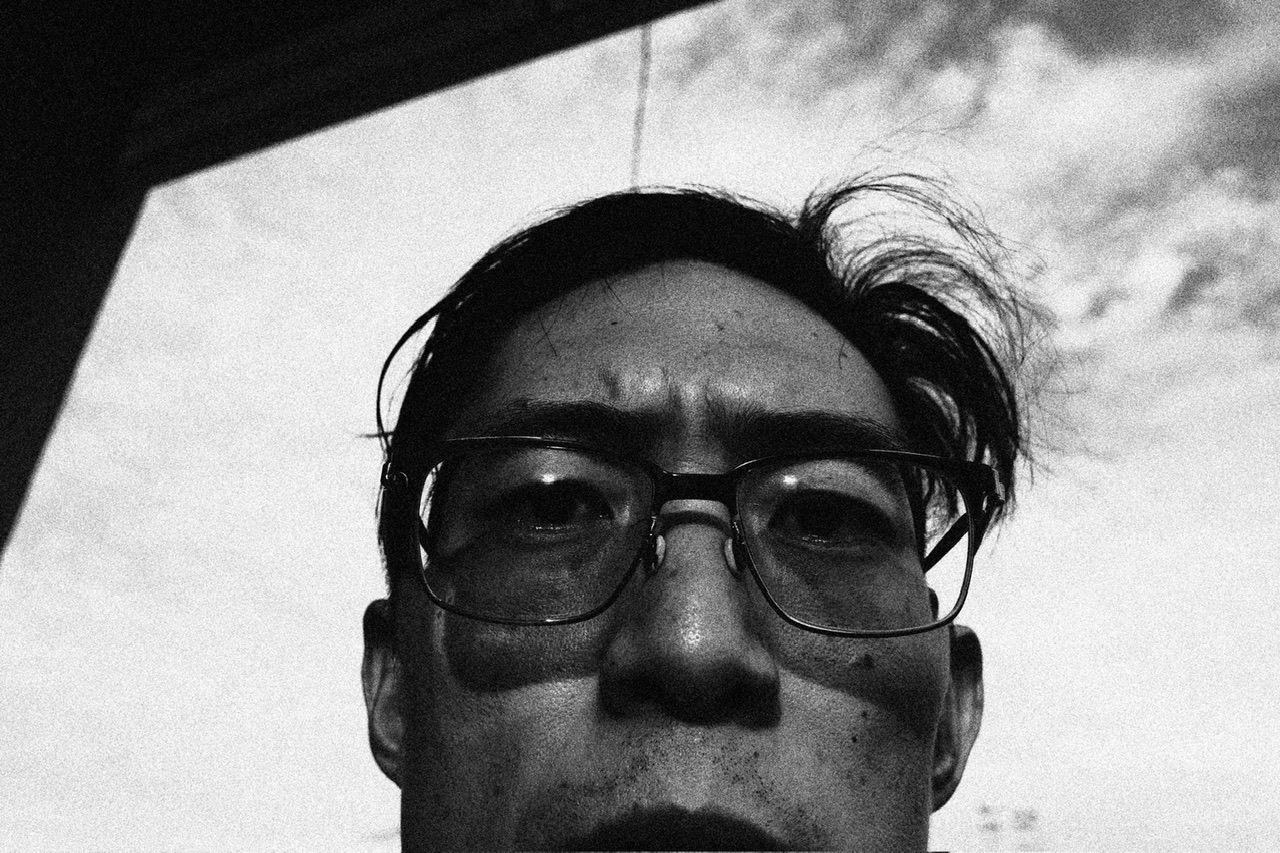
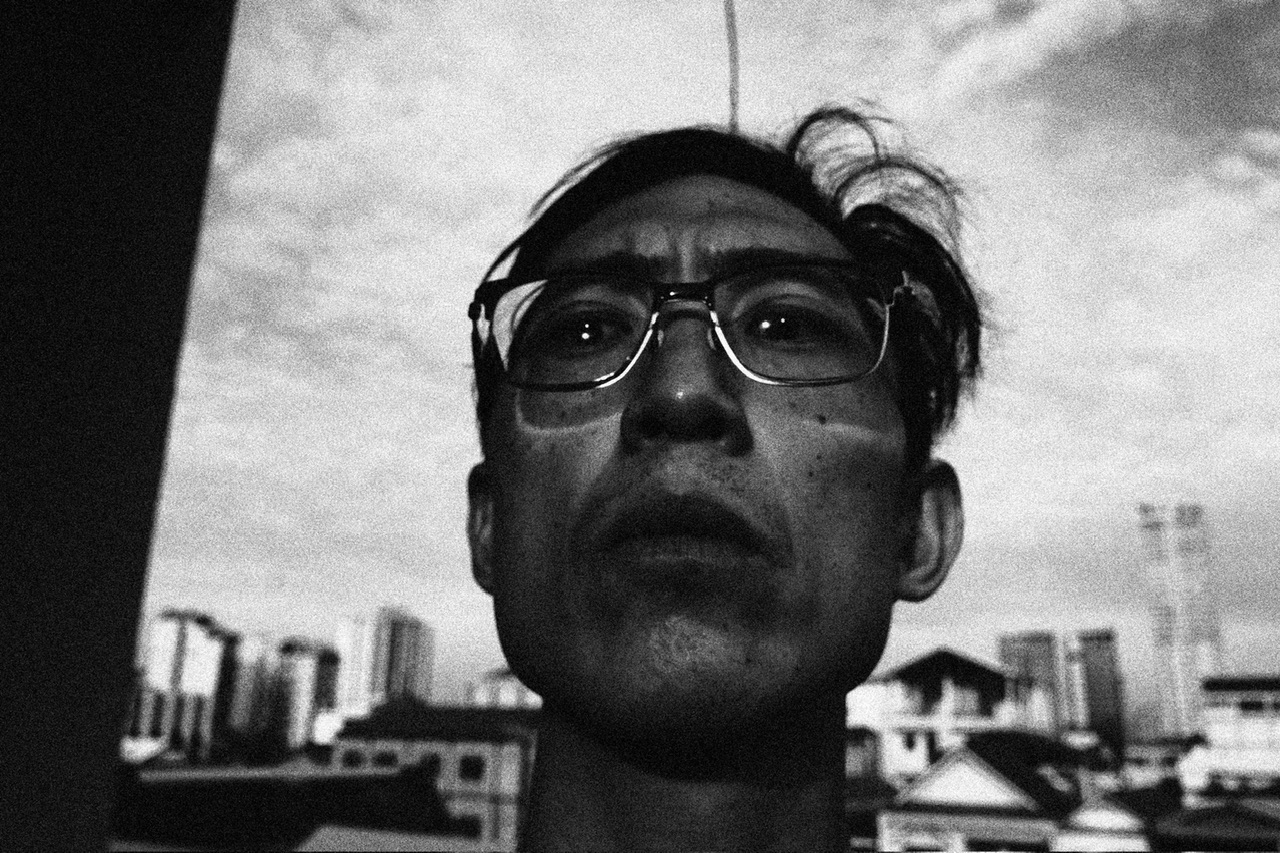







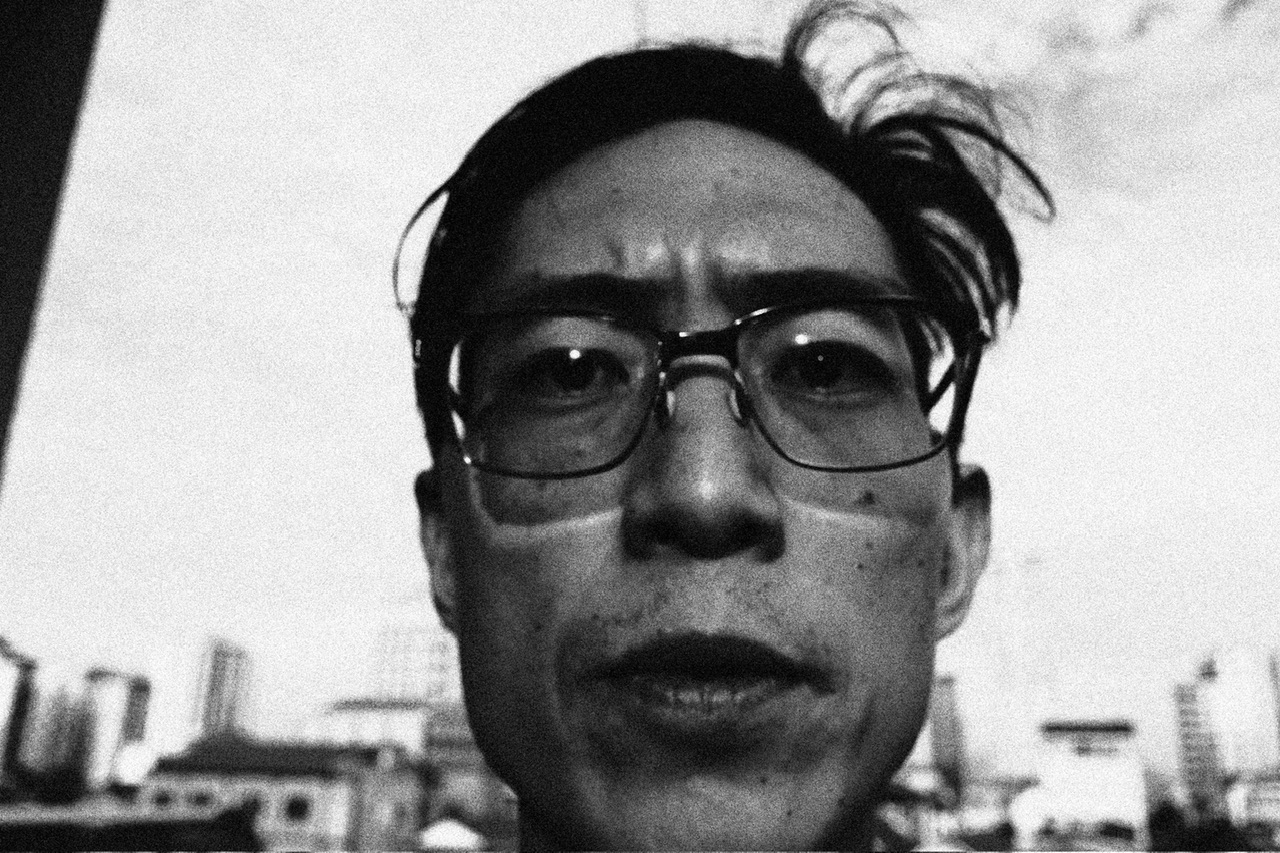



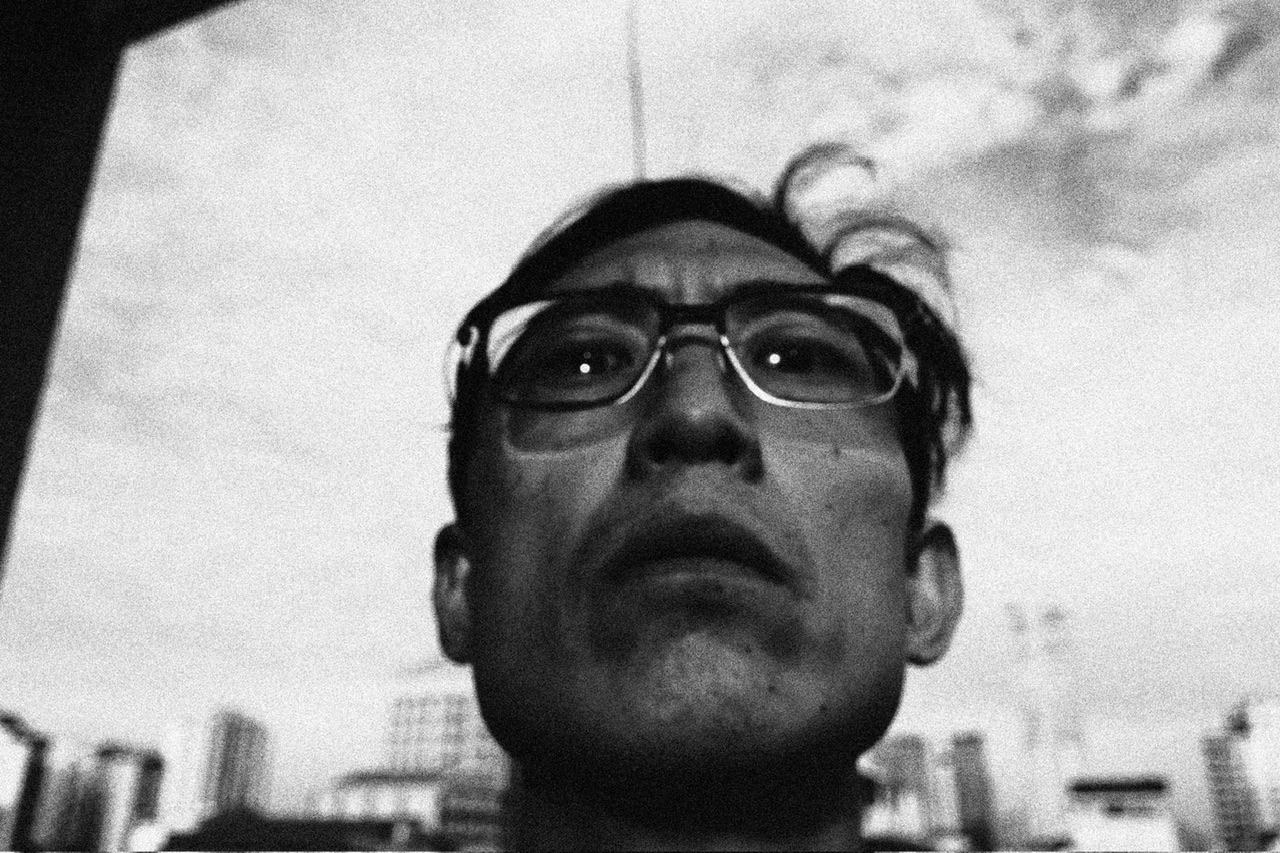



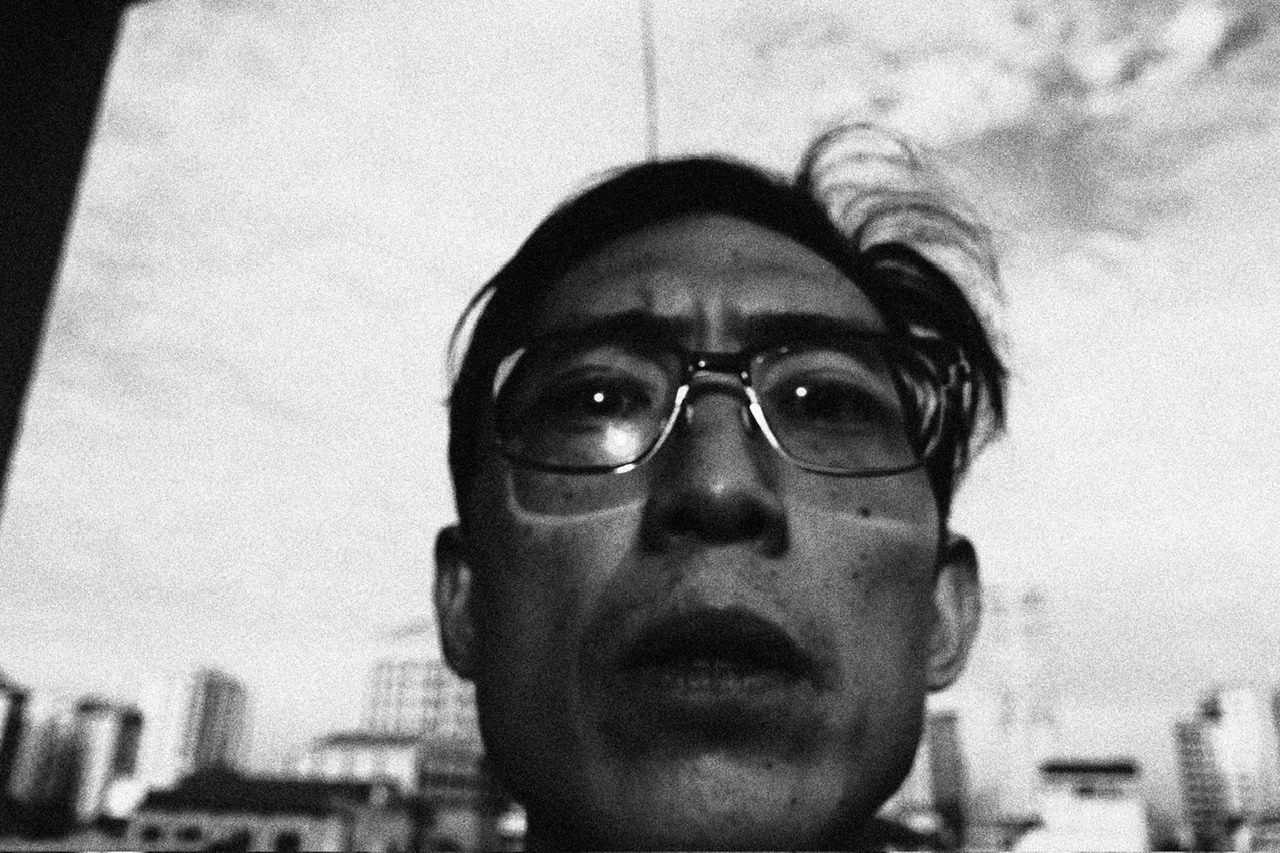
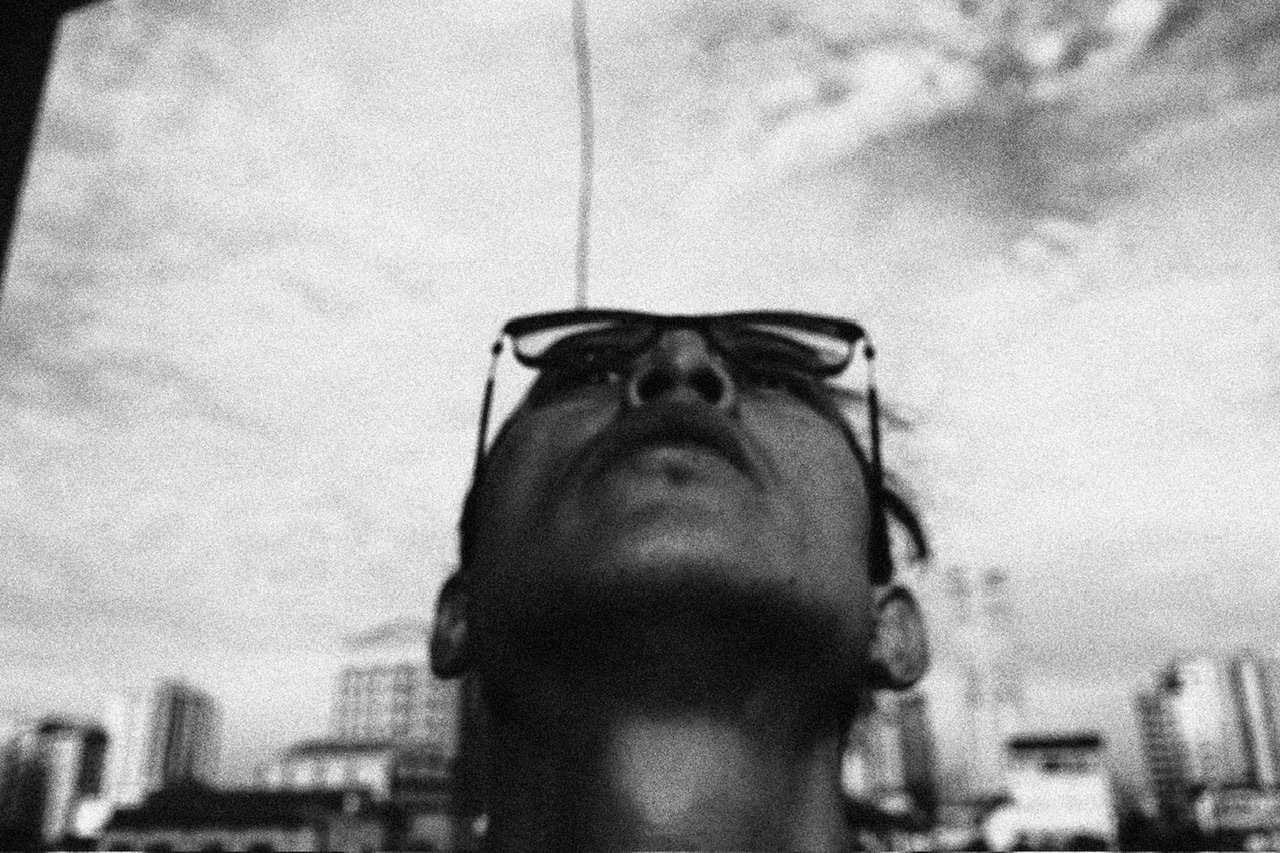














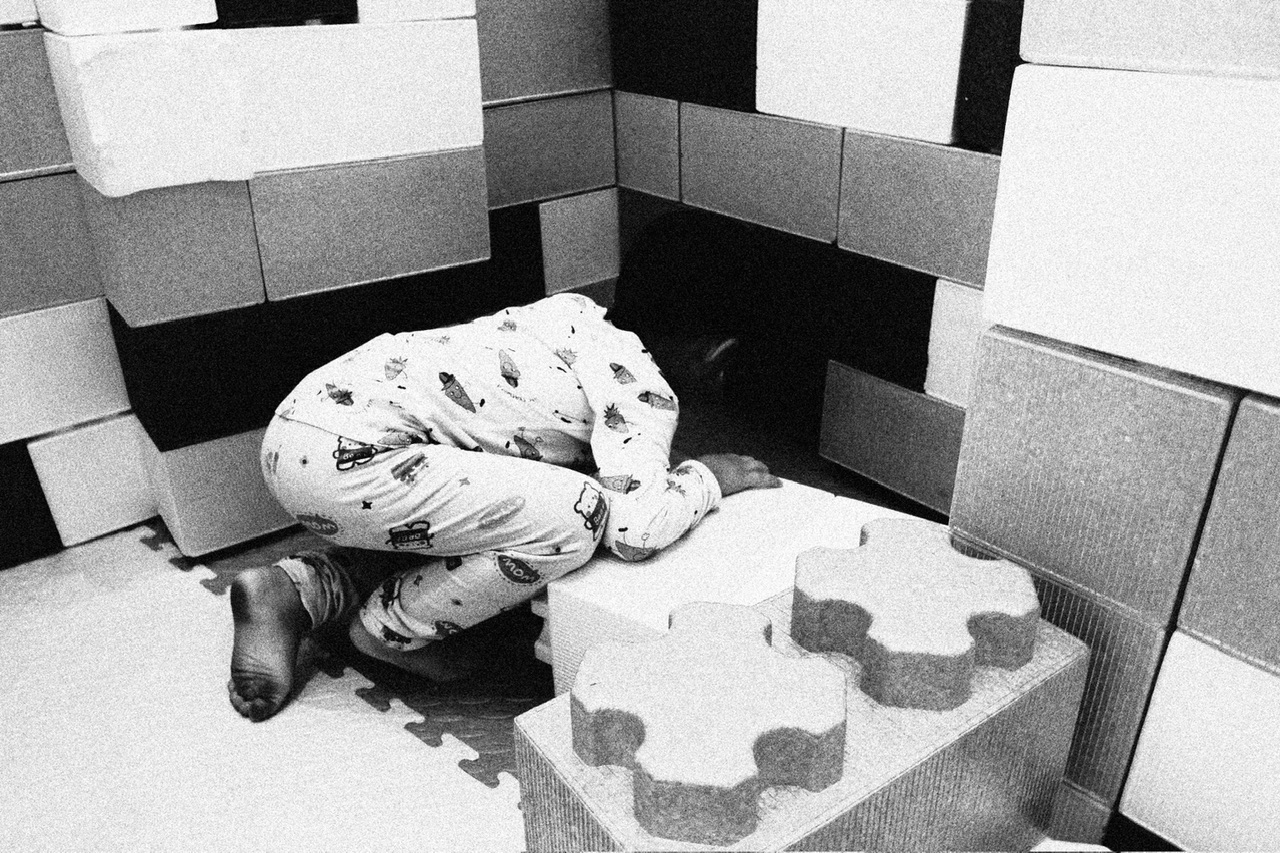













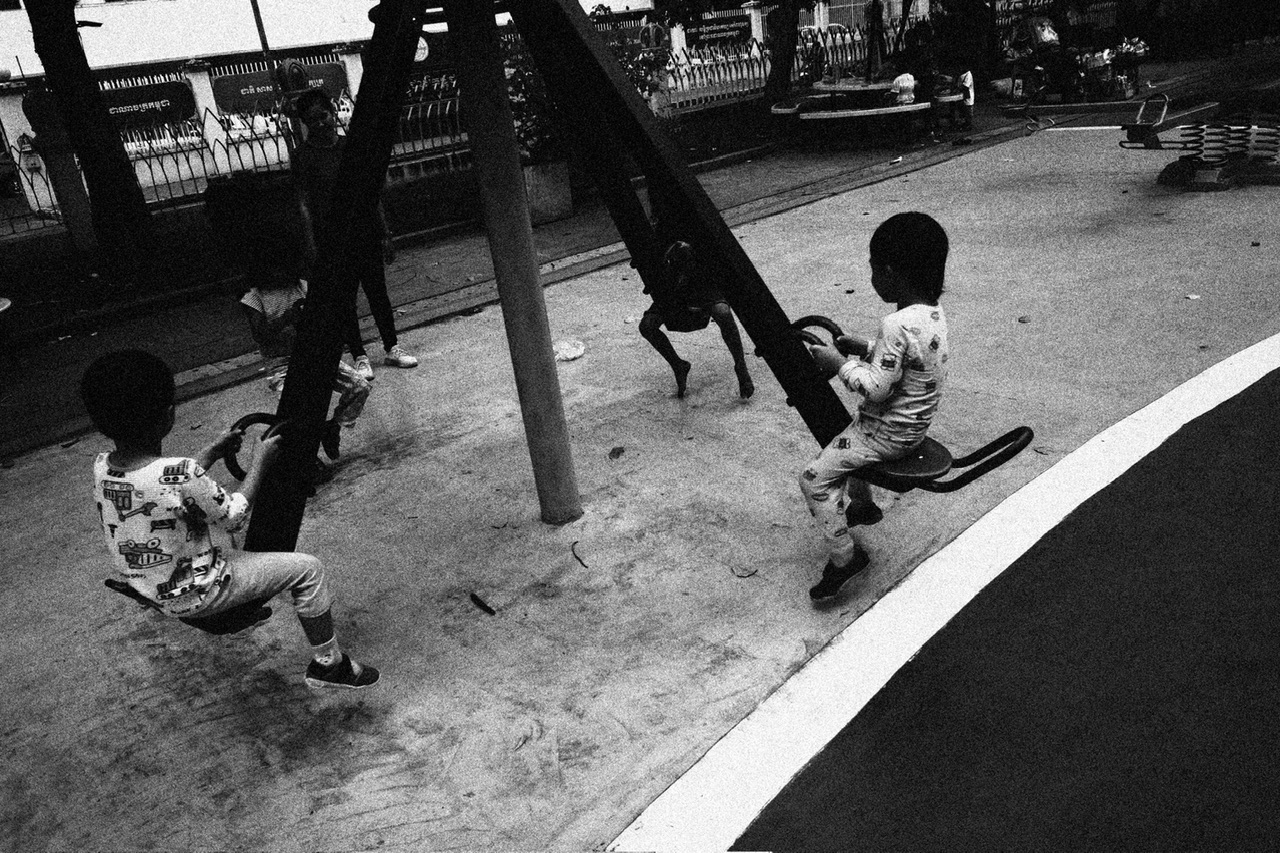














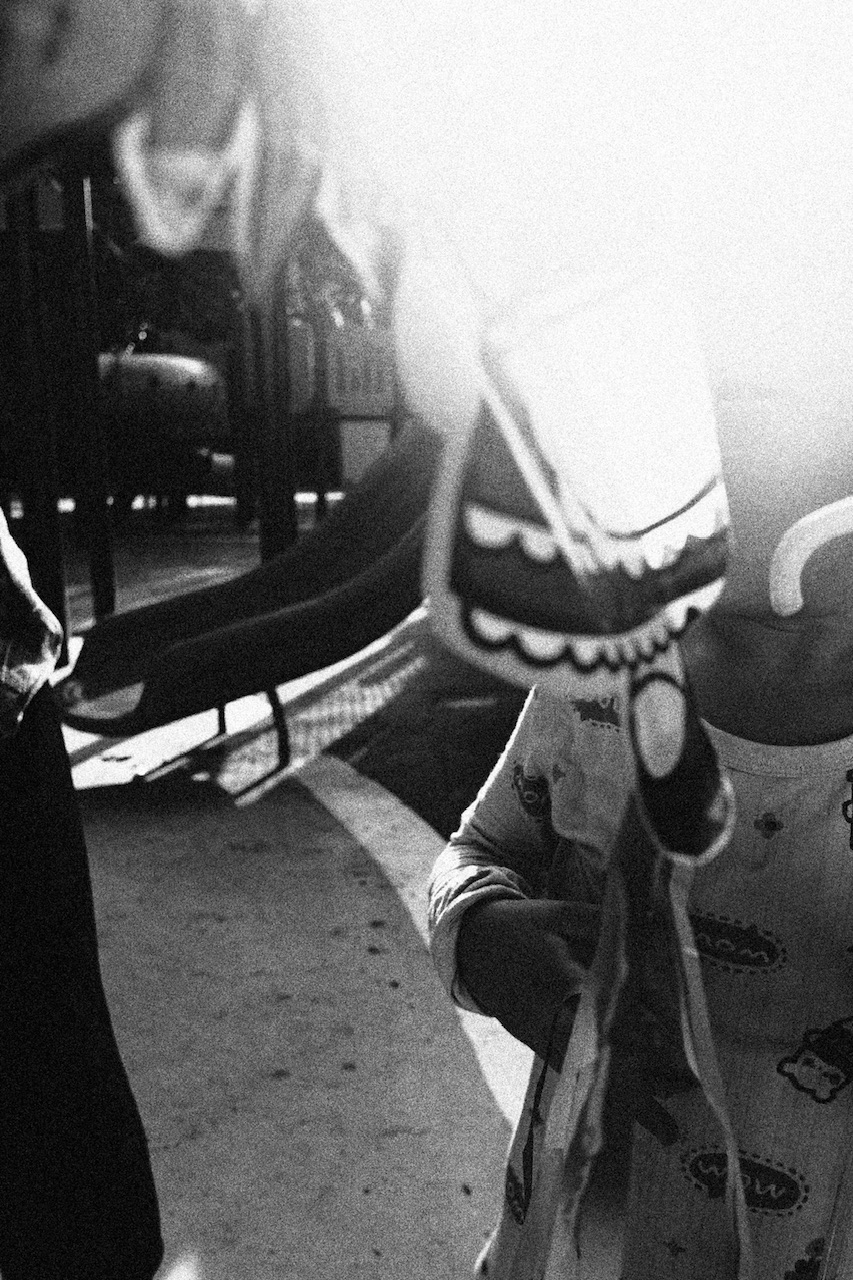














































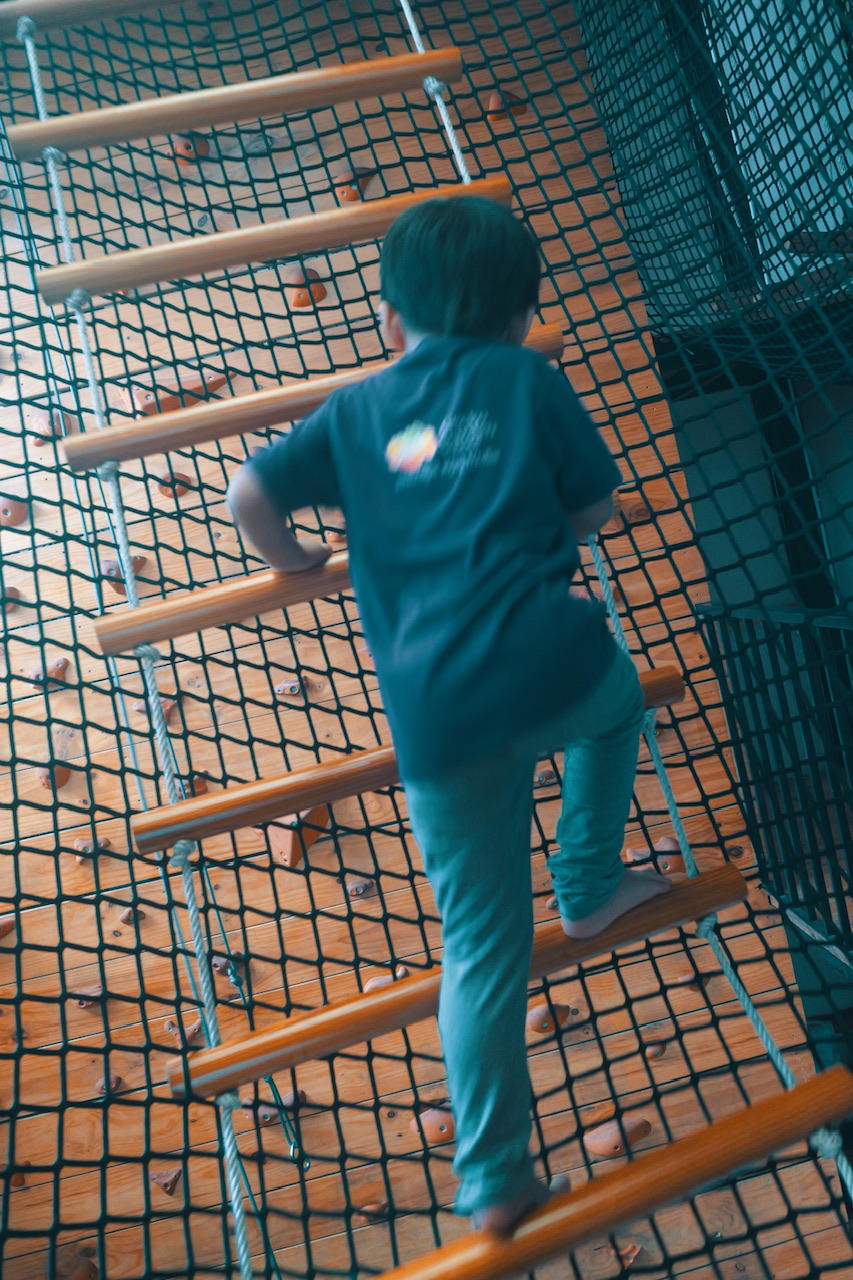









-
True warriors don’t battle with no one
The funny irony is that if you think about like the Apex of Warrior, Achilles… He had like zero interest in battle. He was weird from battle, he was tired and sick of it, and just wanted to go back home to his own home, his own food field, and just chill with breisis his prize .
She was only unsuspectingly lured back into battle, with Hector, and truth be told he didn’t even care to care to kill all those Trojans. Rather, she just killed all those Trojans in order to get to Hector, in order to get his sweet sweet revenge. Just as good old homer says, sweeter than honey.
I think the strange thing is in today’s world, to be or become a hero is worshiped. Everyone wants to be like a Captain America or some sort of marvel superhero. This becomes a little bit problematic because now that Disney owns everything, but that that means is, all of these fake notions of being a warrior is commoditized into some sort of Package. And as a consequence, none of it is actually very unique nor powerful.
Also, this also then becomes problematic because everyone wants to become some sort of hero, and in order to stake their claim, what they then need to do is find some sort of cause to fight for. And as a consequence, people get roped into all these weird movements, all these strange battles to fight for, like fighting for the planet, animals, human rights, poverty and inequality etc. but once again, what if the world doesn’t need your help? What if the world is just fine the way it is, or actually… What if in fact, the world is genuinely superior without you meddling in it. ?
Then I suppose then, the next logical step is to just focus on yourself, and just leave other people alone and let them do their weird stuff. As time goes on, I am becoming less opinionated about the degenerate activities of others, just let them be, And also a funny thought to is, a lot of who I consider to be bad and degenerate, there is some sort of hidden wisdom to what they are doing and I just don’t know it?
I suppose this is then a humbling thing because what that that means is that, other people might be more wise than me without me even knowing it?
Then the idea is to respect the wisdom of others, and realize that in fact, you may be the fool? 
-
Why Cambodia makes sense
So assuming that you’re like a foreigner, I’m like pretty certain that Cambodia is like the best place to be. This is my thinking and rationale:
First, it’s kind of like harmony of man and nature. Something that is like not promoted in the traditional world.
Second, people are just like way happier. I think it’s the effect of Buddhism, as well as the rich cultural heritage of Khmer culture.
Third, it’s like extremely well equipped. Everyone speaks English, everyone uses US dollars, and telegram is like the new amazing game changing messaging app. I really don’t not like iMessage, but telegram is like super insanely awesome.
Also, Internet connectivity here is great. And it will keep getting better.
For example, I’m sure that soon, 5G penetration will happen soon.
Also, even though politics seems chaotic, I actually think that the Prime Minister of Cambodia, is very intelligent incurring an independent economic future for Cambodia. It is my vision that Cambodia actually embraces bitcoin and creates a bitcoin strategic reserve in order to bolster the strength of the Khmer riel, instead of the US dollar.
-
Interesting leverages
So I’m currently here in siem reap, the closest Cambodian city to in Orwat, and a very interesting observation: the general idea is that like, most Cambodians, Cambodian locals, who are from here in the province is the countryside, what they will do is against their own will, head into Phnom Penh, the capital city, for work and job opportunities. But the truth is they would all prefer to probably stay in their own hometown village.
I think it’s also super interesting is that like, even for foreigners, most of them have to work at the embassy or some sort of an organization which is also based in the city, and as a consequence, are stuck there.
But assuming that you’re like already bitcoin, bitcoin wealth independent, and that you don’t actually need to be anywhere in specific, the truly optimal strategy is to live somewhere in which, you can maximize your economic power and leverage to your benefit, without concern about like having to be somewhere specific.
So for example here in siem reap, it is pretty insane: the level of luxuries you’re able to enjoy in terms of tranquility peace, no street noise, as well as nature. Nature peace and quiet is the ultimate luxury.
-
great
thank god for the French






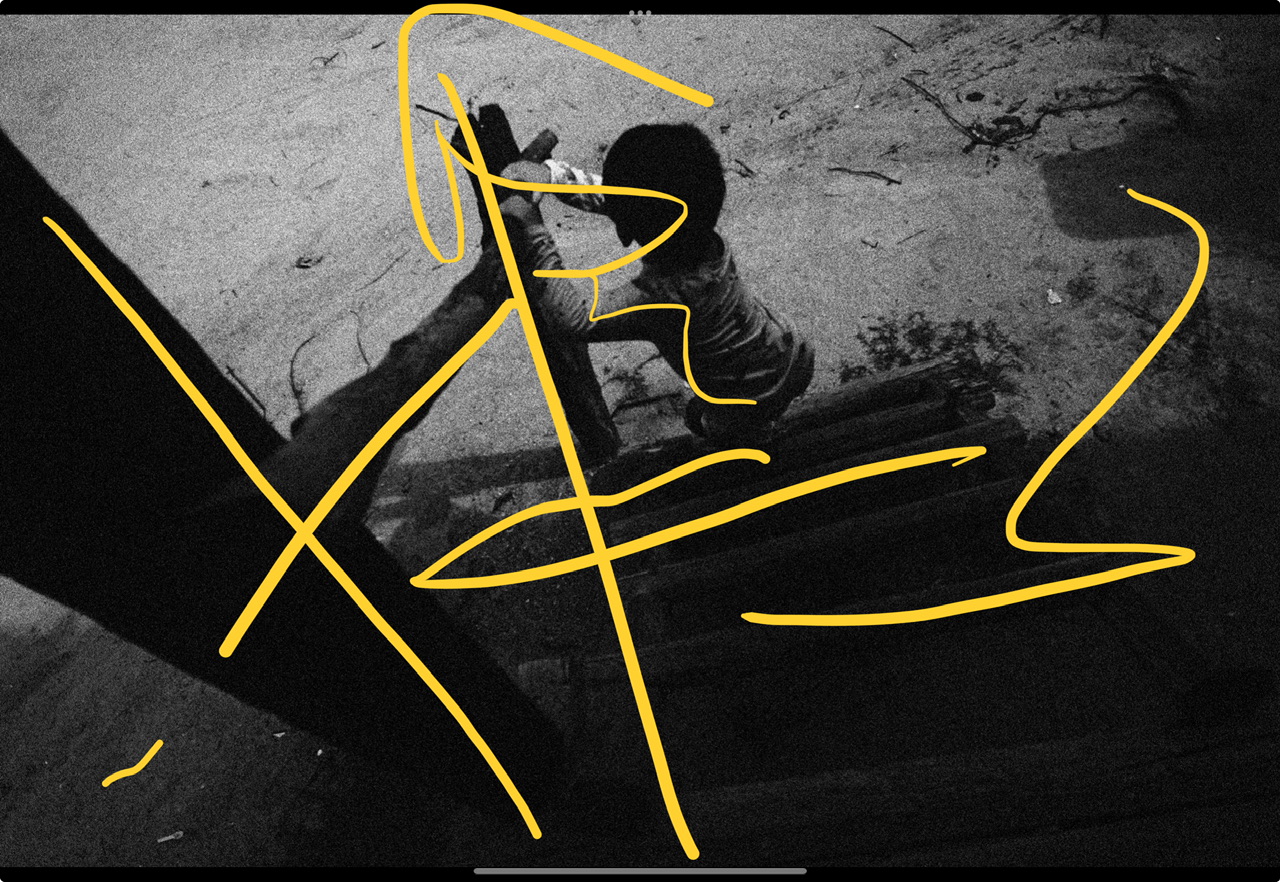


























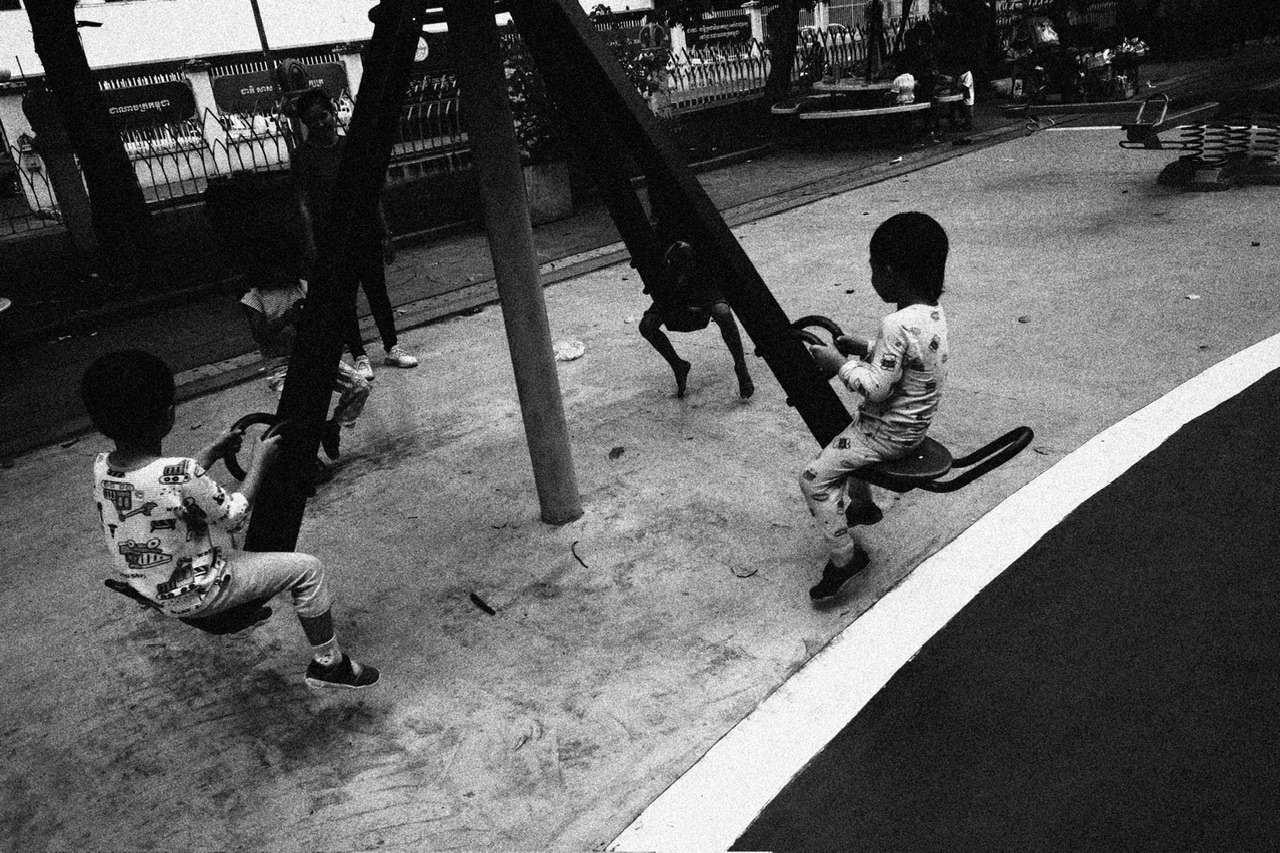























































-
bitcoin prevents war
OK so this is becoming kind of more of a moral imperative… How and why bitcoin can prevent war.
Mutual cooperation
No more borders
so like in the case of Thailand and Cambodia… In many many countries, Israel etc.… There will always be border conflicts. Even the silly case of South Korea and dokdo— people will always always always try to gain more territory.
even consider the case of Vietnam and Cambodia, when the Khmer rogue Took over Cambodia and the Vietnamese came in to restore order, one of the benefits towards Vietnam was that, Vietnam was able to resecure her borders, expanding her empire.
-
It seems futile to try to beat the best?
So for example, in Asia, grab is like by far the most dominant. All of these competitors trying to grab market chair seems like a waste of time.
Also, ABA ABA PAY here is like a gazillion fold the dominant payment portal. All these other second-tier banks, trying to grab market share, also kind of a waste of time.
I don’t think the world needs another YouTube, it doesn’t need another Facebook, it doesn’t need another messaging app.
Also, MSTR, is like light years ahead, and will never be surpassed.
I’m also going to make the bold prediction that at least for the next 250 years, no other nation will surpass America in dominance.
So any nation trying to surpass America, is also a waste of time.
Also bitcoin is like 1 trillion fold more powerful than anything else, the same thing goes with the US dollar. Why try to surpass it when you will never? 
It’s also kind of like Apple, there will never be a greater technology company, and ChatGPT… There will never be a better AI.
So the question is like why is it that everyone wants to try to beat the best?
I think maybe people are doing some sort of poor economic calculus. They see the large market share of the Titan, and everyone wants to just slurp up some of the market chair and they think it will be an easy strategy. Once again, we have to consider that essentially Apple and iPhone created the market, so if you think about the whole smartphone thing, Apple is the smartphone market. 
Also what a lot of people forget, bitcoin was the first and the only cyber cash thing invented. Everything else including Ethereum is simply just an offshoot or a fork from bitcoin.
The funny thing is there is nothing wrong with bitcoin it is perfect. So why is it that people try to make it more perfect? Once again it’s like people who knock on your door, when your child and your family and your body is already like 100% healthy, and they offer you a solution to make you even more healthy, ending up injuring you along the way.
-
It seems futile to try to beat the best?
So for example, in Asia, grab is like by far the most dominant. All of these competitors trying to grab market chair seems like a waste of time.
Also, ABA ABA PAY here is like a gazillion fold the dominant payment portal. All these other second-tier banks, trying to grab market share, also kind of a waste of time.
I don’t think the world needs another YouTube, it doesn’t need another Facebook, it doesn’t need another messaging app.
Also, MSTR, is like light years ahead, and will never be surpassed.
I’m also going to make the bold prediction that at least for the next 250 years, no other nation will surpass America in dominance.
So any nation trying to surpass America, is also a waste of time.
Also bitcoin is like 1 trillion fold more powerful than anything else, the same thing goes with the US dollar. Why try to surpass it when you will never? 
-
Cover the downside and the best shall take care of itself
A simple life strategy is thinking and considering, always having safeties in place, back ups, double back up triple back up, and then… The upsides are infinite.
Once again, once you limit the downside, you can moonshot the upsides forever
For example, thinking about like monthly expenses for your rent your mortgage, habitation whatever; stripping away the superfluous until you achieve crime simplicity is key.
For example, here in Phnom Penh Cambodia, we have lived in different living quarter styles, and ironically enough… What I best prefer is actually, the cheapest, most bare-bones simple option in which we are in a more traditional Khmer neighborhood with no foreigners, the building we live in doesn’t have any amenities, and I think I prefer it that way.
Amenities typically are bloat; and actually something that I realize that I really enjoy is like having a big ass patio, kind of up but kind of low to the ground. Like the 4th to 6th story is good,
 also a funny observation is top side of not being in a tall condo is that getting in and out of the building is like 1 trillion times faster. And also, streamlines your life.
Having amenities is a good selling point but not critical and also, slow you down? 
-
MSTR is the god stock 
So the reason why I think MSTR is so obvious is that consider, at this point is like essentially like a new avalanche on the planet. It has the virtuous flywheel effect: because the mass is so massive now, ain’t no stopping it. Soon, 700,000 bitcoin, 800,000 bitcoin, eventually 1 million bitcoins and beyond. 
Also that means then, any derivatives built off of MSTR like MSTU MSTX, are also virtuous. They will continue to snowball forever, in a positive upwards trajectory. 
-
Becoming the ruler of all men 
So this is kind of a funny thought… Would you or would you want to, or do you desire to become ruler of all men?
Nietzsche quotes Plato:
Once, all men desire to become ruler of all men, that ethos must be reinstated.
So then… Maybe I am the immoral one, for myself, yeah sure why not… Actually kind of like the idea of becoming the ruler and leader of all men on the planet.
I think also spending time here, when you thought I’m starting to have is actually… Perhaps I am the tyrant. Perhaps I am the immoral one, perhaps, I am the one that makes all the rules?
Respect and hierarchy
Maybe I am the one with the emperor syndrome, I see myself as the emperor, like in traditional ancient Korean fashion. And as a consequence, whenever anyone advises me, speaks up against me, it invokes extreme anger.
For example, I’m almost starting to wonder, moving forward, I’m gonna start making a big deal out of everything, and even when I suspect the smallest sense of disrespect or badness, Time for me to get mad.
I think the issue here is that everyone is I think… Secretly, out bull me.
The notion of a bully, being a bully, it just arises from the stem word bowl, and it is funny because in the world of finance, being a bull is virtuous. But to bully somebody else, that is like you’re a mega bull, and somebody else is smaller than weaker than you, you use your power against them in a bad way, is seen as bad.
The funny thing is people often say that bullies have low self-esteem or whatever, I actually don’t think that is the case. Sometimes people like to assert their dominance for fun, for entertainment.
Zeus syndrome
If I could give myself a new name, it would definitely be like Zeus or Achilles. Why? My morality is like ancient Greek, I see myself as Zeus or Achilles, a complex, multifaceted character.
As a consequence, all the traditional rules of morality do not work for me. Not Buddhism not Christianity, none of these work for me.
Ironically enough and funny enough, maybe actually the new morality which is becoming much more interesting to me is actually mainland Chinese. Why? They really just do not give a F.
Also what is very refreshing about Chinese men: they are unapologetically masculine, and women are also just very feminine. None of the silly gender bending nonsense we have in the states.
In fact, in some ways I think about it, the Chinese are just like much more honest. And what is also interesting is it seems like out of all the cultures, they have the most conscience. What that means is like they never feel bad about anything because the truth is, nothing is bad or good.
What now
Being at the crossroads, Cambodia… To me is the Apex pivot point. Why? 
First, it is like the ultimate confluence of all the different countries in Asia, and also, the best pivot point or connection point between east and west. To me almost like being in Cambodia especially being in Phnom Penh is like the new Geneva Switzerland. It’s like kind of the most neutral place to be because Cambodia is intelligent; let us consider that there is massive support for the Chinese government, yet the economy is dollarized, everyone speaks English, and everyone uses telegram.
Much of the foreign investment is also from China Japan, a tiny bit from Korea.
Also considering that American English is supreme, being American in Cambodia is extremely advantageous . No no no, nobody cares about the French, the Australians, certainly not the Canadiens. Not even Singapore.
It still seems that the big bully on the planet is America. The big bull. Certainly I see America as number one, for at least the next 30 years.
China versus America
It seems that China needs more than America needs China. Certainly we Americans love our iPhones made in China, but when it comes down to it, we Americans don’t really need an iPhone, great to have, but you will not die without an iPhone. 
Does China need America
I guess not. It does seem that China has their own thriving internal economy but still, all things considered, the average Chinese person is not as rich as the average American.
So the question… Why is the average American much richer?
First, America has a smaller population. Second, think geography, America is like one super mega huge island, with access to all the best ports on the planet. Strategic military dominance and physician; what helped us win World War II.
Global dominance
So then I think the next step is like thinking about global dominance
The obvious one is bitcoin. The more bitcoin you own or hold or acquire or accumulate, the more of the globe you control and have power over.
-
Strategic Plan for the United States to Accumulate 4 Million Bitcoin
Executive Summary
The United States is embarking on a bold, 15-year strategic initiative to accumulate 4 million Bitcoin (BTC) as a national asset. This visionary plan spans short-term (1–3 years) foundational actions, mid-term (4–7 years) expansion, and long-term (8–15 years) consolidation. It mobilizes all sectors – federal and state governments, private corporations, financial institutions, the tech industry, and individual citizens – in a coordinated effort. The strategy is funded through innovative, budget-neutral mechanisms (leveraging existing reserves, redirected budgets, public-private investment, and blockchain-related revenues) and emphasizes ethical, legal acquisition methods (mining, market investment, ETFs, voluntary pooling, and international partnerships). Strategic objectives include enhancing economic resilience, diversifying national reserves, cementing blockchain technology leadership, and strengthening national security. This plan anticipates and addresses challenges such as market impact, global competition, regulatory frameworks, and environmental sustainability. The following report details a roadmap for this initiative, with clear milestones, roles for each stakeholder, and an inspirational vision of American leadership in the digital asset era.
Introduction: A New Frontier in National Economic Strategy
Bitcoin, often dubbed “digital gold,” has matured from a niche experiment into a credible strategic asset on the global stage . With its permanently capped supply of 21 million BTC, Bitcoin’s scarcity and security present a unique opportunity for nations that move early to incorporate it into their reserves . Just as the U.S. historically accumulated gold and foreign currency reserves, the time has come to thoughtfully manage national ownership of digital assets for prosperity .
Other countries and forward-looking leaders have begun to recognize Bitcoin’s potential. The United States itself holds a significant amount of Bitcoin from forfeitures, but until recently had no comprehensive strategy to leverage these holdings . A turning point came with high-level proposals and actions in 2024–2025, including calls for a U.S. Strategic Bitcoin Reserve and legislation to acquire substantial BTC for the Treasury . These moves signaled that Bitcoin is entering the halls of U.S. fiscal policy as a long-term store of value and hedge against inflation .
Why 4 million Bitcoin? This ambitious target – roughly 20% of Bitcoin’s eventual supply – would position America as the world’s largest Bitcoin holder, securing a dominant stake in the digital asset that could shape the future of finance. Holding such a reserve over decades is envisioned to strengthen the dollar’s resilience, hedge against economic volatility, and even help address the national debt by capitalizing on Bitcoin’s historical growth trajectory . While bold, this goal is in line with America’s tradition of thinking big and leading in new frontiers, from the space race to the internet revolution.
Core Values and Principles: This strategy aligns with U.S. values of innovation, free enterprise, and individual liberty. It relies on voluntary, market-driven participation rather than coercion – there will be no forced appropriation of private Bitcoin holdings. Instead, the government will incentivize and inspire collective action. Transparency, rule of law, and respect for property rights will be upheld at every step. By embracing Bitcoin within a legal and ethical framework, the U.S. will demonstrate how democratic societies can innovate responsibly in the blockchain era.
The following sections lay out the strategic objectives guiding this plan, the stakeholders involved and their roles, a phased roadmap across short, mid, and long-term horizons, funding sources and mechanisms, and considerations to mitigate risks. This comprehensive approach ensures that by 15 years from now, the United States will have not only accumulated 4 million BTC, but also solidified its position as the global leader in the digital asset economy – fostering prosperity, security, and technological leadership for generations to come.
Strategic Objectives
1. Economic Resilience and Inflation Hedge
Build a more resilient economy by holding Bitcoin as a hedge against inflation and macroeconomic uncertainty. Bitcoin’s provable scarcity makes it akin to a digital commodity that cannot be inflated at will . By allocating a portion of national reserves to BTC, the U.S. can protect wealth against currency debasement and reduce reliance on any single foreign creditor or currency. Over time, Bitcoin’s long-term appreciation (historically averaging ~55% annually ) offers the potential to strengthen the national balance sheet and even help pay down public debt as its value grows . This financial buffer would enhance stability during economic downturns or crises, providing a store of value that is uncorrelated to traditional markets and immune to foreign political influence .
2. Digital Reserve Diversification
Complement traditional reserves (such as gold and foreign currencies) with digital reserves. Establishing a Bitcoin reserve diversifies the nation’s holdings into a 21st-century asset class . Just as gold bolsters confidence in a country’s financial footing, Bitcoin – with its decentralized, transparent network – can serve as a trust anchor in an increasingly digital global economy. A U.S. Strategic Bitcoin Reserve would be a portfolio diversifier and innovation signal , reducing dependence on dollar-centric systems while positioning the nation for a future where digital assets play a key role in global finance . This diversification is pragmatic: it hedges against potential weakness in other reserves and embraces the evolving monetary landscape.
3. Technological Leadership and Innovation
Assert American leadership in blockchain technology and the emerging digital economy. A national effort to accumulate Bitcoin goes hand-in-hand with promoting innovation in the underlying technologies – from cybersecurity and cryptography to financial technology. By actively engaging with Bitcoin, the U.S. signals that it is the best place to develop and deploy blockchain innovations, attracting talent and investment. Strategic Bitcoin accumulation is a “statement of alignment with a digitally native economic future,” providing a blueprint that encourages private sector adoption and innovation . This objective includes fostering a robust domestic cryptocurrency industry, supporting research in energy-efficient mining and scalability, and setting global standards for blockchain use. Ultimately, it’s about ensuring the next generation of tech companies and protocols are made in America, securing our role as the global hub of blockchain development.
4. National Security and Geopolitical Influence
Enhance national security by preventing strategic adversaries from dominating the crypto realm and by leveraging Bitcoin as a geopolitical asset. In the 21st century, economic security is national security. If Bitcoin and other digital assets become integral to the world financial system, the U.S. must not fall behind. A substantial BTC reserve gives America greater influence over the future of decentralized finance, much as our gold reserves bolstered our clout in the 20th century. It also acts as a neutral reserve asset that could reinforce alliances (for example, through coordinated accumulation or exchange agreements with allies) and provide options in sanction regimes or international aid (using BTC for humanitarian payments where traditional systems fail). By leading in Bitcoin ownership, the U.S. can help set global norms (for transparency, anti-money-laundering, cyber defense) and ensure that open societies, not authoritarian regimes, shape the rules of digital finance. As Senator Cynthia Lummis noted, Bitcoin’s strategic importance for the country is such that some call it “manifest destiny for the United States” – a new frontier to secure for the nation’s freedom and prosperity.
These objectives are interlocking and mutually reinforcing. Economic strength supports security; technological leadership fuels economic growth; reserve diversification aids resilience; and all enhance America’s standing in the world. With the “why” established, we now turn to the “how” – the stakeholders and strategies that will deliver on these objectives.
Key Stakeholders and Their Roles
Achieving a goal as ambitious as accumulating 4 million BTC requires a “whole-of-America” approach, engaging public and private sectors as well as individual citizens. Each stakeholder group has unique strengths to contribute:
Stakeholder Role in the National Bitcoin Strategy Federal Government Leadership & Coordination: Set national strategy and policy (e.g., through executive actions and legislation). Establish the Strategic Bitcoin Reserve as a custodian for government-held BTC . Redirect existing assets (forfeited BTC, gold reserves, etc.) into accumulation . Ensure regulatory clarity to foster innovation and protect investors. Fund R&D in energy-efficient mining and blockchain security. Integrate Bitcoin into economic planning (Treasury, Federal Reserve cooperation) as a long-term reserve asset. State Governments Local Innovation & Investment: Pilot state-level Bitcoin reserves and crypto-friendly policies. For example, Texas’s new law created a state Bitcoin reserve fund for long-term investment . Other states like Arizona and New Hampshire have also authorized state crypto reserves . States can leverage local resources – inexpensive energy for mining, tech hubs for startups – to support the national goal. They may also accept tax payments in crypto or create sandbox regulations to attract blockchain businesses. Healthy competition among states will drive creative approaches, all contributing to the national accumulation indirectly. Private Corporations Treasury Investment & Innovation: Companies are encouraged to hold Bitcoin in corporate treasuries as a hedge and growth asset, following pioneers like MicroStrategy and Tesla. Normalization of Bitcoin as a corporate asset will significantly boost national holdings . Industry consortia might form to share best practices for corporate Bitcoin custody and investment. Energy firms can partner with miners to utilize excess power, while tech firms develop new Bitcoin applications (payments, security, financial services) that grow the ecosystem. Corporate America’s financial might and innovative spirit are crucial for scaling Bitcoin accumulation. Financial Institutions Infrastructure & Capital Mobilization: Banks, asset managers, and financial firms integrate Bitcoin into the mainstream financial system. This includes offering exchange-traded funds (ETFs) and other regulated investment vehicles that make it easy for pensions, endowments, and individuals to invest . By providing custody, insurance, and compliance frameworks, institutions enable large-scale investment in BTC with confidence. Some institutions may allocate a portion of their own reserves to Bitcoin, and pension funds or insurance companies could follow suit under prudent guidelines, adding enormous buying power to the national effort. Tech Sector R&D and Sustainability: The tech community – from Silicon Valley giants to startups – drives innovation to support this plan. This means developing better blockchain infrastructure (e.g., scaling solutions like Lightning Network), improving wallet security and usability, and pioneering green mining technologies. U.S. chipmakers and data center firms can lead in designing next-gen ASIC miners and energy-efficient computing for Bitcoin. Renewable energy and grid companies can collaborate with tech firms to ensure mining is sustainable and even beneficial to grid stability (for instance, miners buying surplus renewable power to boost profitability of green energy projects ). The tech sector’s role is to make Bitcoin technology faster, safer, and more eco-friendly, aligning digital progress with American environmental values. Individual Citizens Grassroots Adoption & Support: Americans at large play perhaps the most important role – by learning about and responsibly using Bitcoin, they democratize the ownership of this asset. Citizens are encouraged to save and invest in Bitcoin as part of their personal finance (much like buying savings bonds or contributing to retirement accounts). Grassroots initiatives could include community Bitcoin education programs, voluntary pooling or crowdfunding of BTC for local development, and participating in public-private investment opportunities. When millions of Americans hold even small amounts of BTC, it not only boosts the national total, but also builds a constituency that understands and values digital assets. Public enthusiasm and patriotic pride in America’s crypto leadership will be key to sustaining this long-term project. All these actors will coordinate under a shared vision. A National Digital Assets Task Force can be established to ensure communication and synergy between federal agencies, state governments, industry leaders, and community representatives. Regular summits and progress reports will keep everyone aligned. The message is clear: every American can be part of this endeavor, and everyone stands to benefit from the innovation, wealth creation, and security enhancements it will bring.
Strategic Roadmap by Timeframe
The journey to 4 million Bitcoin is mapped out in three phases – short-term, mid-term, and long-term – each with specific initiatives and milestones. This phased approach ensures steady progress while allowing assessment and course-correction at each stage. Importantly, actions are designed to minimize market disruption (accumulating gradually and via multiple avenues) and remain flexible to technological and economic developments.
Short-Term (1–3 Years): Laying the Foundation
Goals (1–3 years): Establish the legal, institutional, and infrastructural groundwork for large-scale Bitcoin accumulation. Kickstart the reserve with existing assets, enact supportive policies, and galvanize private sector involvement – all while raising public awareness. Early moves are budget-neutral or low-cost, relying on reallocated resources and voluntary participation to avoid burdening taxpayers.
- Federal Actions: The federal government leads with bold but careful first steps. A Presidential Executive Order (or action) formally establishes a Strategic Bitcoin Reserve under the U.S. Treasury , consolidating all BTC the government already holds (e.g. from law enforcement seizures). This reserve is placed under strong custodial controls and transparency requirements, so the public knows these assets are held for the nation’s benefit . Crucially, policy directs that these holdings not be sold but retained long-term as strategic assets .
Alongside, Congress pushes forward legislation like the proposed BITCOIN Act (Boosting Innovation, Technology, and Competitiveness through Optimized Investment Nationwide) . This bill authorizes the Treasury to acquire Bitcoin over coming years using funding sources that require no new taxes – for example, Federal Reserve dividends/remittances and revalued gold reserves . In practical terms, the Treasury can revalue the U.S. gold stock (updating outdated book values) and capture the gain to purchase Bitcoin without printing new money . Similarly, any annual profits remitted by the Federal Reserve (which normally go to general funds) could be earmarked for Bitcoin acquisition. These measures keep the strategy budget-neutral, as Senator Lummis and others have emphasized .
Regulatory agencies are mobilized to clear roadblocks: The SEC and CFTC coordinate to approve robust Bitcoin ETF products and clarify that digital assets like Bitcoin are commodities, not securities – removing ambiguity that hindered institutional investment. Banking regulators provide guidance so banks can custody crypto and count it in certain reserve calculations, under sensible risk management rules. The message from Washington is one of embrace and enable: encouraging innovation while policing fraud and illicit use. The short-term also involves the Treasury and Commerce Department studying legal frameworks for digital asset management and storage , ensuring that as the reserve grows, it’s managed prudently and securely. - State Government Initiatives: On the state level, the pioneering actions of places like Texas become a model. Texas established a Bitcoin Reserve Fund with an initial $10 million allocation in 2025 – a largely symbolic but important first step. In the next 1–3 years, we expect several states to launch their own pilot crypto reserve programs, allocating a small percentage of budget surplus or rainy-day funds into Bitcoin. States such as Wyoming (already a blockchain trailblazer), Florida, or others rich in energy resources might join Texas, Arizona, and New Hampshire in this club of “Crypto-Forward States” .
Additionally, states encourage Bitcoin mining and blockchain businesses to set up shop. For example, providing tax incentives or cheap leases for mining farms in areas with energy abundance (wind in the Midwest, natural gas in Texas and Pennsylvania, hydro in the Northwest). Some states may experiment with accepting Bitcoin for state services or taxes, immediately converting to BTC reserves or to dollars as needed. The aim is to integrate Bitcoin gradually into state financial operations. Education initiatives at state universities (funded by grants) will focus on blockchain tech, ensuring a skilled workforce. By the end of year 3, we envision a nationwide network of pro-blockchain states, all contributing a patchwork of BTC holdings (perhaps a few thousand BTC collectively) and, more importantly, creating an environment where Bitcoin-related activities flourish. - Private Sector (Corporations and Financial Institutions): In the foundational stage, the government uses moral suasion and incentives to get the private sector on board. High-profile summits are held with Fortune 500 CEOs, urging them to consider holding a small allocation of their corporate treasury in Bitcoin as a long-term reserve asset (just as companies hold cash or gold). Success stories like MicroStrategy – which converted a large portion of its corporate treasury into Bitcoin – are highlighted to illustrate potential gains and strategic rationale . To support this, accounting standards are updated (the Financial Accounting Standards Board can move to allow fair-value accounting for crypto assets, so companies aren’t penalized on their balance sheets for holding BTC). The federal government could also offer tax breaks on capital gains for corporations that hold Bitcoin for a minimum period (e.g., 5+ years), reinforcing a long-term mindset and reducing fears of short-term volatility.
Major financial institutions, for their part, roll out the red carpet for Bitcoin investment. By year 1 or 2, we anticipate at least one spot Bitcoin ETF approved in the U.S., allowing retail and institutional investors to buy BTC conveniently in brokerage accounts . Fidelity, BlackRock, and other asset managers, who have already signaled interest in Bitcoin funds, will aggressively market these as part of diversified portfolios. Banks like JPMorgan and Bank of America, which have already dipped into crypto services, expand offerings: custody solutions for high-net-worth individuals, Bitcoin savings accounts, and Bitcoin-backed loans for businesses. The presence of regulated, insured custodians addresses security concerns and makes large institutions comfortable to invest.
In parallel, public-private investment vehicles are created. For example, a “U.S. Digital Reserve Fund” could be launched where government seed funding (say $1 billion) is matched by private investment to purchase Bitcoin and hold it for the long term. Such a fund could operate like a sovereign wealth fund for digital assets, managed by professionals with oversight from both government and private investors – aligning interests and sharing expertise. By the end of the short-term phase, the private sector’s Bitcoin holdings (corporate treasuries, ETFs on behalf of clients, etc.) should be on a clear uptrend, adding tens of thousands of BTC into American hands. - Tech Sector and Mining: The first 3 years focus on ramping up Bitcoin mining capacity in the U.S. as a direct acquisition mechanism. With roughly 900 new BTC mined per day globally (pre-2024 halving, then ~450/day after 2024), mining is a source of “fresh” bitcoins that does not push up market price in the way large open-market buys would. The United States is already a global leader in mining – North America (led by the U.S.) accounts for a large share of the global mining industry – thanks to abundant land, energy and a stable rule of law. This advantage will be expanded. The Department of Energy (DOE) and private energy companies collaborate to launch renewable-powered mining farms. We will see more projects like retired coal plants converted to solar or natural gas facilities powering mining rigs, with agreements that miners can shut off during peak grid demand (to stabilize the grid) and run during off-peak times . Such symbiosis can even incentivize more renewable energy projects by providing a buyer for excess power that would otherwise be wasted .
Innovation in mining tech is spurred by grants and competitions. For instance, the government might fund R&D for advanced ASIC chips and cooling systems, possibly through DARPA or the National Science Foundation, emphasizing energy efficiency and low-carbon footprint. American tech giants could enter the mining hardware space – for example, Intel announced energy-efficient mining chips in 2022; further advancements could be commercialized at scale. The goal is twofold: increase the U.S. share of global hash power (ensuring a steady inflow of mined BTC to U.S. entities) and do so sustainably. By year 3, we aim for the majority of U.S. mining to be from sustainable sources or waste energy. A recent Cambridge study already found that over 52% of Bitcoin mining’s energy worldwide comes from sustainable sources (including 9.8% nuclear and 42.6% renewables) , a figure that has been rising rapidly. U.S. initiatives can push this even higher, making American Bitcoin some of the “greenest” Bitcoin – in line with our climate goals. - Individual Citizens: In the foundational phase, a major push is made to educate and involve the public. The government, together with nonprofit organizations and industry, will launch a “Digital Asset Literacy” campaign, akin to financial literacy programs. This will demystify Bitcoin, promote safe practices (like using reputable exchanges or wallets, understanding volatility), and highlight the long-term benefits of holding a small amount as savings. Inspiration and inclusion are key: Americans should feel they are part of a historic mission – much like buying war bonds in the 1940s or participating in Victory Gardens, but for the digital age.
One idea is to introduce “Bitcoin Savings Bonds” or patriotic crypto bonds. While the U.S. Treasury cannot take citizens’ Bitcoin, it can offer bonds or Treasury certificates whose proceeds are explicitly used to buy BTC for the national reserve. These bonds would pay a modest interest and perhaps a bonus indexed to Bitcoin’s price over a number of years, giving citizens a safe, government-backed way to indirectly be part of Bitcoin’s growth. It’s a voluntary program: those who wish to support the initiative and invest in America’s future can participate with as little as, say, $50 – lowering the barrier for ordinary Americans. This not only funds reserve purchases but also broadens public buy-in.
Additionally, policies might exempt small Bitcoin holdings from capital gains tax after a certain holding period (for example, no tax on gains for holdings under $1000 if held 5+ years), to encourage long-term saving in Bitcoin. Employers could be encouraged (but not required) to offer salary or 401(k) options in Bitcoin for employees who are interested, following the example of some city mayors who opted to take paychecks in BTC as a show of confidence . By the end of this phase, millions of Americans should have had exposure to Bitcoin, either directly or via ETFs/retirement accounts, firmly integrating Bitcoin into the fabric of American investment culture.
Milestones for Phase 1:
- Creation of the U.S. Strategic Bitcoin Reserve office and initial seeding with government-held BTC (targeting at least 50,000+ BTC from forfeitures and small market buys).
- Passage of supportive legislation (e.g., BITCOIN Act) or inclusion of Bitcoin reserve funding in budget processes, ensuring no new taxes are levied for these efforts .
- At least 5-10 states initiating state Bitcoin funds or mining projects, signaling broad state-level engagement .
- Approval of a U.S. spot Bitcoin ETF and rollout of crypto custody by major banks, leading to an influx of institutional and retail investment (with a goal of adding hundreds of thousands of new U.S. Bitcoin investors).
- Significant expansion of U.S. mining capacity with a focus on sustainable energy – aim for U.S. entities to consistently account for a large share of new BTC mined (with >50% sustainable energy mix for U.S. mining ).
- Launch of at least one public-private Bitcoin investment fund and a patriotic savings bond program, raising public participation and funding for further BTC purchases.
- National sentiment shift: by year 3, Bitcoin is increasingly seen not as a fringe speculation, but as a mainstream strategic asset – with government officials, CEOs, and news outlets discussing it in the context of national interest and future prosperity.
With the foundation laid and early momentum achieved, the stage is set to accelerate into the mid-term phase.
Mid-Term (4–7 Years): Scaling Up and Integration
Goals (4–7 years): Rapidly scale the accumulation efforts while integrating Bitcoin more deeply into U.S. economic structures. In this phase, the aim is to go from hundreds of thousands of BTC to millions of BTC under American ownership. The federal government, having proven the concept and established trust in phase 1, can expand its holdings more aggressively (market conditions permitting), and the private sector’s involvement becomes self-sustaining. This phase will likely coincide with greater global attention – both cooperation and competition – which the U.S. must navigate wisely.
- Federal Actions: By year 4 or 5, the U.S. Treasury – via the Strategic Bitcoin Reserve mechanism – begins systematic accumulation of Bitcoin. Depending on market liquidity, a target rate could be set (for example, acquiring 200,000 BTC per year for 5 years, as one proposal outlined ). These purchases will be executed with minimal market disruption: through OTC (over-the-counter) trades, strategic buys during market dips, and possibly through algorithmic “smoothing” that buys small amounts continuously to avoid spikes. The Treasury can also use Bitcoin price weakness to its advantage – similar to how the Strategic Petroleum Reserve buys oil when prices are low.
Funding for these purchases continues to emphasize budget neutrality. By now, the earlier gold revaluation and Fed remittance strategies may have created a pool of dollars earmarked for Bitcoin (potentially tens of billions of dollars over several years). If Bitcoin’s price has risen, the Reserve’s existing holdings will have appreciated; leveraging that, the Treasury might issue Bitcoin-backed bonds or use the appreciated BTC as collateral to borrow funds for further purchase – effectively bootstrapping the reserve without new taxpayer funds. Additionally, savings from other budget areas could be redirected – for instance, if defense spending is streamlined by efficiencies or if there are leftover funds from winding down certain programs, those could be reallocated to the digital reserve as a forward-looking investment in national strength.
By mid-term, it’s plausible that Bitcoin will be recognized as a formal reserve asset internationally, perhaps discussed in forums like the G20 or IMF (if not officially by central banks yet, at least as part of sovereign wealth strategies). The U.S. should lead in creating a cooperative environment: for example, coordinating with allies (Europe, Japan, others) on fair guidelines so that allied nations accumulating Bitcoin doesn’t turn into a zero-sum race but rather a collective strengthening (while still staying ahead of adversaries). Diplomatic channels might be used to share best practices for custody and to ensure no single hostile actor corners too much of the supply.
Importantly, the Federal Reserve may start to acknowledge Bitcoin in its policy orbit. While the Fed might not add BTC to its own balance sheet in this period, it could work with the Treasury to treat the Strategic Bitcoin Reserve as a complementary reserve much like Special Drawing Rights (SDRs) or gold. The Fed can also study the financial stability implications of large Bitcoin reserves, ensuring any risks (like price volatility) are mitigated, perhaps by adjusting capital requirements if banks hold too much unhedged crypto, etc. The overarching federal stance in mid-term is one of normalization and integration: Bitcoin is now a fixture in government financial strategy, with regular reports to Congress on the reserve’s status and its role in the broader debt and reserve management. - State Governments: By years 4–7, what was initially symbolic state participation grows into substantive programs. States that saw success or positive publicity in phase 1 may increase their allocations – for instance, a state that put $5 million could raise it to $50+ million, especially if their initial investment has grown in value. Resource-rich states might embark on state-run mining enterprises: envision state public utilities or partnerships launching mining farms, where a portion of the BTC mined goes into state coffers to fund public services (education, infrastructure). This could be particularly appealing to states with struggling rural economies – mining operations can create jobs in areas with cheap land and power.
Additionally, some states may begin to integrate Bitcoin into pension or investment funds in a prudent manner. For example, a large state pension fund might allocate a small percentage (~1-2%) of assets to Bitcoin or Bitcoin ETFs, recognizing the asset’s long-term appreciation potential and diversifying the retirement portfolio for teachers or state employees. This would significantly boost U.S. holdings (state pension funds collectively manage trillions of dollars, so even a tiny slice is huge). However, this would be done cautiously, likely after seeing a few more years of market maturation to satisfy fiduciary duties.
On the legislative front, more states will pass crypto-friendly laws: establishing legal clarity for smart contracts, allowing corporations to hold crypto assets under state law, perhaps enabling state-chartered crypto banks (following Wyoming’s lead). By mid-term, we might even see a compact among pro-Bitcoin states – an “Interstate Blockchain Coalition” – to share strategies and maybe negotiate as a bloc for federal support or consistency in regulations. States will remain the “laboratories of democracy,” trying diverse approaches (e.g., one state might issue a Bitcoin-denominated municipal bond, another might give tax credits to crypto startups, etc.). These experiments all contribute to the national accumulation indirectly by fostering an ecosystem where more BTC flows into U.S. hands and stays here. - Private Corporations: The mid-term phase is when corporate adoption of Bitcoin could snowball. By year 5 or 6, if Bitcoin’s trajectory remains positive, holding a percentage of reserves in BTC might become a norm for forward-thinking companies. We might see a “Second Wave” of corporate BTC treasuries: beyond tech firms, mainstream companies in industries like retail, manufacturing, and pharmaceuticals taking the plunge. For example, an S&P 500 consumer goods company might put 2% of its $10 billion treasury into BTC as an inflation hedge – a conservative move individually, but across many firms this substantially raises national holdings.
The federal government can encourage this with subtle measures: publishing guidelines for corporate officers on fiduciary considerations of digital assets, perhaps even suggesting that under certain conditions it is prudent to have diversified reserves (which could implicitly endorse some BTC exposure). The legal safe harbor might be provided so boards feel safe from shareholder lawsuits if they hold a small Bitcoin position responsibly. High-profile endorsements will help too – by this time, we may have prominent billionaire CEOs or investors (the likes of Elon Musk, Michael Saylor have already, but others could join) vocally supporting Bitcoin as a key asset. Their leadership can influence peers.
In the tech sector, specifically, we expect deeper integration of Bitcoin into products and services. Major payment platforms and fintech apps will fully incorporate Bitcoin: think Paypal, CashApp, Visa/Mastercard networks all seamlessly handling BTC transactions. Apple, Google, or other giants might enable secure Bitcoin wallet features in phones or offer crypto rewards to customers – making the user experience frictionless. This drives individual adoption (increasing the count of BTC held by Americans) and signals corporate belief in Bitcoin’s value.
Furthermore, entirely new business models will emerge. For example, as Bitcoin and Lightning Network usage grow, companies might earn BTC through microtransactions (content platforms, IoT devices paying each other in satoshis, etc.). U.S. startups at the forefront of “Web3” and decentralized finance might create services where Bitcoin is locked or collateralized, indirectly bringing more BTC under U.S. influence even if the protocols are global. The private sector’s creativity will be an engine in this phase – we can anticipate services that monetize small BTC holdings (like earning yield through decentralized lending) which could attract even more people to hold some BTC rather than letting it sit idle. - Financial Institutions: By the mid-term, Wall Street and the crypto world are fully intertwined. Multiple Bitcoin and crypto ETFs, including perhaps a government-endorsed one that directly contributes to national reserves, are in the market. Institutional custodians (like Fidelity Digital Assets, Coinbase Custody, etc.) by now could be holding and managing millions of BTC for clients worldwide, with a large share belonging to U.S. investors. The U.S. financial sector may even develop new instruments: for instance, Bitcoin-backed government bonds. One concept is that the Treasury could issue bonds that pay interest in Bitcoin or are redeemable in Bitcoin at maturity – effectively blending traditional finance with crypto. This would attract crypto-native capital to finance U.S. debt while increasing the Treasury’s BTC holdings.
Another avenue: stablecoins and digital dollars. By this time, the U.S. might have a regulated stablecoin or Central Bank Digital Currency (CBDC). While separate from Bitcoin, a vibrant stablecoin ecosystem (especially one regulated under acts like the proposed GENIUS Act for stablecoins ) would complement Bitcoin by bringing more blockchain infrastructure under U.S. oversight. Banks could use stablecoins for settlement and hold Bitcoin as part of reserves to back some digital liabilities, in a modern version of the gold standard (except Bitcoin standard, perhaps informally). This interplay is complex, but the key is U.S. banks and financial firms treat Bitcoin as a legitimate asset class by mid-term – including offering Bitcoin-denominated accounts or loans to clients.
We may also see U.S. financial institutions facilitating international Bitcoin flows: acting as intermediaries when other nations or large entities want to buy or sell Bitcoin. This not only earns fees for U.S. firms but ensures that big liquidity flows pass through U.S.-regulated channels, giving some visibility and influence. By providing deep, reliable markets, U.S. exchanges and banks could attract foreign holders to trade or even custody their BTC in the U.S. for safety – effectively increasing the share of global BTC under U.S. custodianship even if not all “owned” by Americans. This soft power through financial plumbing should not be underestimated. - Technology & Sustainability: In years 4–7, U.S. technological leadership in the Bitcoin space should be evident. The country fosters a robust ecosystem of Bitcoin software developers, hardware manufacturers, and energy technologists. Possibly, a U.S. company or consortium will implement large-scale Bitcoin layer-2 solutions (like an enhanced Lightning Network infrastructure) that make transacting in BTC instantaneous and nearly free, further boosting adoption. The government can assist by adopting Bitcoin or Lightning for certain uses, e.g., foreign aid disbursements via Bitcoin for transparency, or defense contractors being paid via blockchain for speed (as pilots).
On mining, by this stage, U.S. mining operations may have expanded to cutting-edge realms. There could be mining farms co-located with solar farms in deserts, using batteries to smooth power; off-grid mining using flare gas mitigation (which not only yields BTC but reduces pollution from flaring – a win-win for environment ); and even experimental projects like ocean thermal mining or satellite-based mining if feasible (private space companies might look at using excess power in space or remote locations for mining – speculative, but not impossible in a 7-year timeframe). The environmental sustainability of Bitcoin will continue improving: the Cambridge study already noted the decline of coal to only ~8.9% of mining energy and rise of gas and renewables . By supporting these trends (perhaps implementing a carbon credit program for green miners, or a voluntary certification), the U.S. ensures that scaling up Bitcoin does not conflict with climate goals. In fact, Bitcoin can drive investment into renewables by providing a flexible demand source.
Another tech aspect is security: as national holdings grow, securing them against theft or cyberattack is paramount. The mid-term will see advanced custody solutions, like multi-signature vaults distributed across different agencies or even geographies (to guard against a single point of failure). The U.S. might employ its cybersecurity experts (NSA, CISA) to audit and harden Bitcoin storage solutions. Additionally, planning for post-quantum cryptography should start now – ensuring that if quantum computers threaten Bitcoin’s cryptographic algorithms in the future, the U.S. will be ready to upgrade keys and support the network through any transitions. All this technical groundwork in mid-term guarantees that when the U.S. holds a massive Bitcoin trove, it remains secure and resilient. - Individual Citizens: By the midpoint of the plan, the presence of Bitcoin in everyday American life could be commonplace. Many citizens might hold a portion of their savings in BTC, either directly or through funds. The government’s open support and the normalization by institutions likely means public trust in Bitcoin has grown (contrast to early skepticism). We will continue public education, focusing now on inclusive prosperity – making sure all demographics have access to the tools and knowledge to benefit from Bitcoin’s rise, not just the early adopters or wealthy. Libraries, community colleges, and online programs could offer free courses on crypto basics, sponsored by public-private partnerships.
There could also be an element of gamification or community drives: for example, a national challenge to get “Bitcoin in every home” – maybe through an airdrop or matching program for small purchases. While direct government giveaways of Bitcoin might not happen (to avoid picking winners and due to budget), partnerships with fintech companies could see promotional BTC given to new users of wallets, etc., subsidized by marketing budgets rather than taxes.
Meanwhile, the concept of voluntary pooling for national goals could take shape in charitable or investment forms. Perhaps a nonprofit “America Bitcoin Trust” is created, where private donors can gift BTC to the nation (some patriotic millionaires might do so for legacy, just as people donate art to national museums). The donated BTC could be held in the Strategic Reserve with recognition given to donors. Alternatively, community Bitcoin funds might form – for instance, a city’s residents pooling funds to invest in Bitcoin and later use gains to improve local infrastructure. If such stories emerge (imagine a town that paid for a new park or school from Bitcoin investments), they will further cement Bitcoin’s positive image domestically.
Milestones for Phase 2:
- U.S. Strategic Bitcoin Reserve surpasses 1 million BTC (cumulatively) by around year 5–6 , thanks to systematic purchases and appreciation. This would be a symbolic achievement (around 5% of total supply, depending on how much is lost/unmined).
- Passage of refined regulations: e.g., a clear tax regime for crypto, possibly lower capital gains tax rates for long-term Bitcoin holding to encourage retention, and updated securities laws to accommodate tokenized assets and Bitcoin products (while ensuring consumer protection).
- At least half of U.S. states (25+) have enacted some form of crypto-friendly legislation or investment program. A few key states have significant Bitcoin reserves (hundreds or thousands of BTC) and/or run successful mining operations funding public projects.
- Corporate adoption: Aim for 50+ major corporations holding Bitcoin on their balance sheets, and many more small and medium businesses accepting or using BTC in operations. The notion of Bitcoin as a standard reserve asset for companies becomes uncontroversial.
- Financial integration: Bitcoin ETFs and funds could collectively hold millions of BTC on behalf of U.S. investors. U.S. exchanges remain dominant in trading volume. Possibly, a U.S.-based exchange-traded product might be among the world’s largest holders of Bitcoin.
- Technological strides: U.S. share of global hash rate remains strong or grows (targeting perhaps >50% of global hash rate if environmentally sustainable, ensuring network influence). Sustainability metrics for U.S. mining improve (e.g., >70% renewable/nuclear energy usage in U.S. mining operations).
- Global cooperation: The U.S. leads an international dialogue on crypto reserves. Ideally, a coalition of democracies holding Bitcoin emerges, counter-balancing any accumulations by less friendly actors. The U.S. could have formal or informal agreements with allies about mutual support in crypto markets during crises.
- Public sentiment: By year 7, Bitcoin may be seen similarly to how the internet was by the early 2000s – an inevitable part of life and progress. Skepticism remains in some quarters, but broad understanding exists. Importantly, Americans feel ownership of this success: much like national pride in the moon landing, there’s pride that the U.S. embraced Bitcoin innovation and didn’t try to stifle it.
At the end of the mid-term phase, the U.S. should be well on its way to the 4 million BTC goal, possibly around halfway there, and the foundations of a crypto-powered economy fully laid. The final phase will focus on securing the gains and leveraging them for enduring advantage.
Long-Term (8–15 Years): Leadership, Preservation, and Prosperity
Goals (8–15 years): By this phase, the United States envisions reaching the 4 million BTC target and solidifying the permanence of Bitcoin in its national asset mix. The focus shifts from aggressive accumulation to sustainable management and utilization of the reserve as needed for the national interest (without ever undermining Bitcoin’s ecosystem). America’s leadership in the blockchain space should be unquestioned by year 15, and the strategic Bitcoin reserve serves as a foundation for economic strength, much like gold did in previous eras. This period also involves adapting to any new developments (technological, geopolitical) that could affect our Bitcoin strategy.
- Federal Actions: If the earlier phases are successful, by year 8–10 the U.S. Treasury will have accumulated on the order of 1–2+ million BTC or more (in its own reserves plus indirectly via funds), with additional millions held across the private sector and citizenry. Continuing the trajectory, the 4 million BTC mark could be hit by year 15 or earlier, depending on market availability and price (note: as Bitcoin’s price likely increases significantly over a decade, acquiring each additional BTC could become very expensive – which is why front-loading some accumulation in earlier phases is wise).
At this stage, the government’s role is to prudently manage and protect the national Bitcoin trove. Policies will likely state that the strategic reserve is a permanent holding – selling is off the table except under extraordinary circumstances (analogous to how Fort Knox gold isn’t casually sold). This instills global confidence that the U.S. is treating Bitcoin as a long-term store of value. However, leveraging the reserve for national benefit is possible without selling: for instance, the government could borrow against its Bitcoin in a crisis rather than sell it, or use it in swap agreements with other nations in tightly controlled exchanges.
The federal government also monitors and mitigates any systemic risks. By year 10+, Bitcoin could be a multi-trillion-dollar asset; a sharp swing in its value might have economy-wide impacts if everyone is exposed. The Fed, Treasury, and financial regulators would develop tools akin to today’s stress tests – ensuring banks or funds aren’t over-leveraged on Bitcoin, and the economy can weather volatility. If Bitcoin’s volatility dampens as it matures (which is possible if it becomes as broadly held as gold), it might be less of an issue . In any case, integrating Bitcoin into the fabric of macroeconomic policy will be an ongoing task. We might see, for example, the Fed including crypto market analysis in its reports, or even using blockchain data as economic indicators.
The U.S. could also consider establishing a formal sovereign wealth fund for digital assets if not already done – an entity that manages part of the reserve and possibly invests in related technologies or yield opportunities in a controlled manner. For instance, a fraction of the national BTC could be deployed in ultra-secure lending platforms to earn interest, which is then turned back to public coffers. Any such activity would be cautious to avoid losing the principal, but given Bitcoin’s programmability, there could be novel ways to put holdings to work without selling them (like the concept of “Lightning channel pools” to earn transaction fees while helping the network – technical but feasible).
Geopolitically, by year 15 Bitcoin might feature in international agreements. The U.S. may leverage its leadership to promote global stability in crypto markets. Perhaps treaties or accords ensure nations don’t use state-owned Bitcoin to manipulate markets maliciously. If adversaries have acquired BTC, the U.S. holding a larger amount acts as a deterrent to any attempts to destabilize the crypto economy (similar to nuclear deterrence logic, though economic). The U.S. can also use some Bitcoin diplomatically: for example, extending aid in BTC to allies under sanction (imagine bypassing certain financial blockades to provide relief, which Bitcoin can enable) – thereby using our reserve in support of freedom and humanitarian values. - State Governments: In the long run, states that invested early in Bitcoin might find themselves with significantly strengthened finances. For example, if a state’s $10 million pilot reserve became $100 million or more after a decade of Bitcoin’s growth, that’s a windfall that can bolster pension funds, infrastructure budgets, or allow tax relief. Success stories will prompt even late-adopting states to join in. By year 15, it’s conceivable that every state has some form of digital asset holdings or involvement, even if symbolic. State governments also integrate blockchain tech more fully: perhaps using Bitcoin or other blockchains for transparent budgeting and expenditures (citizens could monitor where funds go in real-time on a blockchain ledger). Some states might launch state-backed stablecoins or use tokens for local governance.
Importantly, the interstate collaboration could lead to harmonized regulations – making it easy to use Bitcoin across state lines (no patchwork of contradictory laws). States will also continue to be incubators for technology: their universities producing blockchain experts and their local policies trialing innovations (like DAO-based governance for some public functions, or digital ID systems, etc.).
States rich in natural resources could by now have integrated Bitcoin mining into their energy grid management fully. For instance, Texas might have formal programs where during energy surplus, state-sponsored miners soak up the excess, and during shortages, miners shut down to free capacity – creating an efficient market that also yields Bitcoin for the state. Environmental agencies at the state level will have established guidelines making sure mining operations meet emissions or land use standards, proving that the environment and Bitcoin growth can coexist. - Private Sector: In the long-term horizon, we anticipate Bitcoin and blockchain to be as common in business as internet technology is today. Corporations might not even discuss holding Bitcoin as something unusual – it could be just another line item in financial reports, akin to foreign currency holdings. Many companies could be partially or wholly transacting in crypto, especially if global trade starts seeing Bitcoin or stablecoins as common settlement media.
The combined holdings of U.S. publicly traded companies could easily reach into the millions of BTC if trends continue. For perspective, companies like MicroStrategy acquired over 150,000 BTC by 2023; extrapolate to dozens of companies and the number soars. Moreover, new American millionaires and billionaires created by the crypto boom would invest in the U.S. economy, start new ventures, or endow philanthropies – a virtuous cycle of wealth creation feeding innovation and social benefit.
The tech giants of 15 years from now might be those who mastered blockchain. It’s possible that by then, some of today’s big players (Google, Amazon, etc.) have deeply integrated blockchain for cloud services, or new giants have arisen specifically from crypto (maybe a future “Crypto Amazon” that operates a decentralized marketplace). The U.S. private sector’s agility and creativity ensure that the nation continuously capitalizes on blockchain innovations, from AI-integrated smart contracts to perhaps even biotech or supply chain systems running on blockchains. All of this reinforces the value of the national Bitcoin reserve by maintaining the relevance and utility of the Bitcoin ecosystem.
Private financial institutions by year 15 would have gone through and refined at least one Bitcoin market cycle (since historically Bitcoin has booms and corrections). They will have risk management perfected for this asset class. Bitcoin might even be used in cross-border interbank settlements if it proves efficient (somewhat replacing a portion of what is done via SWIFT or forex exchanges, especially between allied countries who trust Bitcoin’s neutrality). U.S. banks could be the global clearinghouses for crypto transactions, extending America’s financial dominance into the crypto age. - National Security & Defense: A unique aspect by this time might be the direct consideration of Bitcoin in national defense planning. For example, the Department of Defense might hold some Bitcoin to potentially fund operations outside of normal channels in emergencies (since BTC can be moved globally quickly). Cyber defense units will actively protect not just government crypto but also watch for attempts to attack the Bitcoin network itself (51% attacks, etc.), since it would be considered critical infrastructure. The U.S. could even contribute to Bitcoin network security by running government-operated full nodes around the world and maybe mining in secure locations (ensuring that no hostile entity can easily dominate mining).
There’s also the realm of intelligence: understanding who else holds significant BTC and their intentions becomes strategic. The transparency of Bitcoin (every transaction is visible on-chain) paradoxically can aid law enforcement and intelligence in tracking illicit finance more easily than cash. So by 15 years, the U.S. may have turned what some saw as a tool for criminals into a powerful tool against criminals, through advanced blockchain analytics. This further underpins why holding and controlling a good share of Bitcoin supply is beneficial – it gives the U.S. both visibility and leverage in the new digital financial order. - Individual Citizens: In the long run, the American people stand to reap the benefits of this strategic shift. By year 15, if Bitcoin’s global success continues, many early individual adopters could find their modest holdings grown substantially, contributing to increased household wealth. More broadly, the national reserve’s gains could be used to strengthen the economy that citizens live in – possibly reducing the tax burden or funding social programs from the proceeds of Bitcoin investments rather than from debt. For instance, there could be a future where a portion of Medicare or Social Security is sustained by returns from the national digital asset portfolio – truly converting digital innovation into social dividends.
Culturally, the stigma or uncertainty around Bitcoin will likely diminish. Young Americans in 2040 (those born in the 2020s) will have never known a world without cryptocurrency. They might find it completely natural that their country took this path, just as earlier generations took the dominance in internet and tech for granted. We foresee a population that is financially savvy and tech-forward, comfortable using digital wallets as easily as credit cards. The inspirational aspect cannot be overstated: seeing America lead in a new domain will instill confidence and optimism. The narrative will be that the U.S. didn’t fear the future – we faced it and shaped it.
Citizens will also benefit from thousands of new companies and jobs created in the blockchain sector – from software developers to legal experts to energy technicians maintaining mining farms. This industry’s growth keeps America economically competitive and provides high-paying jobs, many in rural or economically challenged areas (since mining can be located anywhere with power, it’s more geographically flexible than many industries).
Milestones for Phase 3:
- The United States (government + private sector + citizens) achieves aggregate holdings of ~4,000,000 BTC, representing a significant share of circulating Bitcoin. This includes, ideally, at least 1–1.5 million BTC in the Strategic Reserve alone (the rest distributed among corporations, financial institutions, and individual holders).
- Bitcoin is formally acknowledged in national financial statements and reports. For example, annual Treasury reports list the BTC reserve alongside gold holdings. The Federal Reserve perhaps incorporates digital assets in its flow of funds accounting.
- The U.S. leads an international agreement or framework on digital asset reserves, promoting responsible state behavior with crypto (preventing market manipulation, ensuring transparency of state holdings to build trust, etc.).
- Technological resilience: By year 15, Bitcoin’s infrastructure is even more robust – U.S. has contributed to implementing quantum-resistant solutions if needed, and the network has proven secure against threats. U.S. research labs and companies may have pioneered these next-gen security measures.
- Environmental goal: Bitcoin mining is no longer seen as an environmental villain. Through U.S. innovation and leadership, the global Bitcoin mining industry might approach carbon-neutrality. Perhaps 90%+ sustainable energy use is achieved, with mining being an integral part of balancing and funding renewable grids (a success story of turning a challenge into an opportunity).
- Economic impact: If Bitcoin’s value has grown as expected, the U.S. may use some of the value appreciation to dramatically improve its fiscal position. There could be scenarios by 15 years where the national debt is reduced not by austerity, but by the windfall from early Bitcoin investments – a truly remarkable outcome that earlier seemed far-fetched . Even if not fully eliminating debt, the interest from Bitcoin-backed funds or strategic sales at opportune moments (very limited) could fund critical projects (infrastructure, space exploration, etc.) without burdening taxpayers.
- By the end of this period, Bitcoin (and perhaps select other digital assets) would be firmly embedded in the U.S. economic and strategic paradigm. Future policymakers will treat it as a given component of reserves, much like foreign currency reserves or gold. The initial controversies will have faded, replaced by a bipartisan consensus that America did the right thing by embracing innovation. The country stands as the undisputed leader in the global digital economy, much to the benefit of its citizens.
Funding Sources and Mechanisms
A variety of funding sources and mechanisms are employed across these phases to finance Bitcoin accumulation in a sustainable, ethical manner. Below is a summary of key funding approaches, emphasizing creativity and public-private collaboration:
Funding Source / Mechanism Description & Rationale Example / Status Existing Government Reserves Redeploy value from current assets to Bitcoin. This includes revaluing underutilized assets (like gold) or using foreign currency reserves strategically. Because U.S. gold is carried at a historic fixed price, an update to market value yields a significant accounting gain, which can be converted into BTC without new debt . Ex: Revalue gold certificates (from $42/oz to market $2000/oz) and use the windfall ($500 billion potential) to buy Bitcoin . Treasury already studying optimal legal channels for such transfers . Redirected Federal Budgets Identify federal programs or funds that can be reduced, optimized, or concluded, and redirect a portion of those savings to Bitcoin acquisition. Also allocate a small % of annual budget specifically as an investment in the Strategic Bitcoin Reserve, framing it as intergenerational asset investment. Keep allocations modest to avoid crowding out current needs, and emphasize long-term return. Ex: A 1% efficiency saving across a $1 trillion budget section (e.g., discretionary spending) yields $10B/year for BTC. Also, if defense tech advances allow cost cuts, a portion of the “peace dividend” could fund digital reserves – aligning future security investment. Tax Revenues and Fees Without creating new taxes, leverage incremental revenues from the crypto sector itself. As the industry grows, tax receipts from crypto capital gains, corporate profits of blockchain companies, and sales tax from crypto-related commerce will rise. Earmark a fraction of these new revenues for reinvestment into Bitcoin. Additionally, consider small transactional fees: e.g., a minuscule excise fee on large crypto transactions or exchange activities, funneled to the reserve. The key is any fee should be low enough not to stifle innovation (pennies per $100, potentially). Ex: Suppose crypto-related economic growth yields an extra $5B in federal tax receipts annually; direct 20% of that ($1B) to BTC purchases. Some countries fund sovereign wealth funds from natural resource taxes – here, the “digital resource” of blockchain innovation can analogously fund a reserve. Public-Private Investment Vehicles Create investment funds or vehicles where government seed capital attracts larger private co-investment to buy Bitcoin. This spreads risk and engages market expertise. The government can act as a minority partner or guarantor, nudging private capital to join national goals. Such funds could also invest in Bitcoin infrastructure (mining facilities, blockchain startups) with a portion of profits accruing in BTC. Ex: A National Bitcoin Trust is formed with $10B from Treasury and $30B from pension funds, tech companies, and allied sovereign funds, collectively targeting to acquire e.g. 200,000 BTC over several years. The fund’s structure ensures professional management and that the government’s share of BTC cannot be sold without consensus, reinforcing long-term holding. Blockchain-Related Revenues This innovative category involves the government directly earning Bitcoin through blockchain participation. Two main avenues: (1) Mining revenues – government or public-private mining operations produce BTC at near cost. (2) Staking / Node incentives – although Bitcoin doesn’t have staking, if the U.S. engages with other networks (like Ethereum post-merge, if relevant to strategy) any earned crypto could be converted to BTC. Another idea is leveraging U.S. technological prowess to capture transaction fees: running Lightning Network nodes or other service nodes that earn small BTC fees, scaled nationally. Ex: A federal renewable mining initiative deploys mining rigs at hydro plants; it mines, say, 5,000 BTC a year, which are sent to the Reserve. Additionally, the U.S. Postal Service could run Bitcoin Lightning nodes in its offices (hypothetical scenario) earning fees that accumulate to a national wallet – symbolically letting everyday transactions feed the reserve. These approaches also improve network decentralization. Voluntary Citizen Contributions Mechanisms for Americans to voluntarily contribute to the national Bitcoin accumulation. This taps into patriotic sentiment and the appeal of being part of a big mission. Options include special savings bonds (where individuals’ money is used by government to buy BTC, and they get a guaranteed return plus a Bitcoin-pegged bonus), charitable donations to government-held funds (with recognition or minor tax benefits), or crowdsourced initiatives where communities invest together for local/national benefit. While contributions won’t cover the bulk of 4 million BTC, they promote public ownership of the effort and can still raise significant amounts. Ex: The Treasury issues “Freedom Bitcoin Bonds,” $500 minimum, 10-year maturity. The money raised buys BTC for the Reserve. At maturity, holders get back their $500 plus interest, and a bonus that is a percentage of the BTC price increase (if any). Alternatively, a “Donate Bitcoin to America” program could see philanthropic gifts – imagine a tech billionaire donating 10,000 BTC to the national reserve as a legacy project, which is not inconceivable in a culture that celebrates such contributions. All these funding sources share a common theme: they are ethical, transparent, and largely voluntary/market-driven. The plan pointedly avoids any coercive measures like forced confiscation or heavy new taxation that would contradict the values of a free economy. By tapping into existing value, future growth, and willing participation, the U.S. can accumulate Bitcoin in a way that strengthens rather than burdens the nation.
It’s worth noting that as Bitcoin’s price potentially grows, the dollar cost of reaching 4 million BTC will increase. Thus, early funding (short-term) gets more “bang for buck” in BTC terms, while later on the focus might shift to maximizing value of holdings rather than chasing a numeric BTC total at any cost. Flexibility in funding strategy will be maintained – if Bitcoin’s market is overheated, the U.S. can pause buys and rely more on mining or wait for corrections, for example.
Ethical, Legal, and Security Considerations
A plan of this magnitude raises important ethical and legal considerations, which are addressed proactively to ensure the initiative upholds American values and the rule of law:
- Legal Framework: The accumulation strategy operates within existing U.S. law and seeks new legislation only where necessary. The BITCOIN Act and related executive actions provide the legal basis for Treasury to hold and manage crypto assets . All acquisitions of Bitcoin by the government will be done through lawful means – purchases on open markets, partnerships, or mining – with full accounting. No private holdings will be taken or nationalized; this is a voluntary wealth-building exercise, not an expropriation. As new laws are passed (e.g., clarifying tax treatment, allowing state investments, etc.), they will be debated democratically and made transparent. The judiciary would maintain oversight as needed, and any disputes (such as regulatory turf battles between agencies) will be resolved through established legal processes. Essentially, we treat Bitcoin like any strategic asset, subject to checks and balances.
- Ethical Acquisition: The plan emphasizes ethical means of acquiring Bitcoin. This means no market manipulation, no exploitation of other nations, and no compromising on principles. For instance, if the U.S. enters bilateral agreements involving Bitcoin, it will be in the spirit of mutual benefit – say, helping a developing country build a renewable mining industry so they earn income in BTC, while the U.S. might get a portion of that BTC or a stake in the operation. Such arrangements can be win-win and transparent, avoiding any neo-colonial overtones. Domestically, if voluntary citizen programs are launched, they will come with clear disclosures of risks (since Bitcoin can be volatile) and entirely optional participation. The government’s role is to facilitate and maybe match contributions, not pressure anyone to convert their savings.
- Market Impact and Fairness: A critical ethical aspect is ensuring the U.S.’s large-scale buying doesn’t unduly distort the market to the detriment of others. The phased, multi-channel approach is our solution: by spreading accumulation over many years and relying partly on mining (new supply) and organic private uptake, we mitigate sudden price spikes. Large purchases will be done discreetly via OTC with cooperation from major exchanges to prevent front-running or flash crashes. If despite precautions U.S. actions seem to be driving up price too fast, the strategy can adjust (pause buys and focus on mining for a period, for example). We want a stable growth in Bitcoin adoption, not a bubble. Fairness extends globally – smaller countries or investors should not feel locked out by U.S. dominance. In fact, U.S. leadership can bring stability that benefits all Bitcoin holders (government participation tends to legitimize and stabilize ). The U.S. could also assist allies to start their own modest reserves, as long as it doesn’t jeopardize our goals, fostering a collaborative atmosphere.
- Transparency and Accountability: The management of the Strategic Bitcoin Reserve and any related funds will be highly transparent. Regular reports to Congress and the public will detail how much BTC is held, how it was acquired (while perhaps keeping exact timing/trade details confidential to protect strategy), and how it’s stored. An auditable public-facing ledger might be maintained for certain portions of holdings, so citizens can actually observe transactions on the blockchain to the extent possible . This level of transparency would far exceed that of many traditional reserves and could build trust (imagine being able to verify the nation’s Bitcoin holdings 24/7 on-chain – a powerful tool against corruption or mismanagement). Oversight bodies, including a possible advisory board of public, private, and academic experts, will keep the execution ethical and on track.
- Security Measures: The ethical imperative to protect what has been entrusted (taxpayer funds, citizens’ contributions, etc.) means top-tier security is non-negotiable. The U.S. will employ state-of-the-art cybersecurity for all Bitcoin custody. This likely involves multi-signature wallets requiring sign-off from multiple agencies (e.g., Treasury, Federal Reserve, and an independent trustee) to move any funds, reducing single-point insider threats. Cold storage (offline wallets) will be used for the bulk of holdings, with physical vaults and layered defenses similar to gold storage but updated for digital assets. Disaster recovery plans will be in place: multiple backups of keys (sharded perhaps) in secure locations across the country. The government can also leverage the National Security Agency’s expertise in cryptography to safeguard keys against any advanced threats. As mentioned, planning for quantum computing threats will begin well in advance – maybe even sponsoring development of quantum-resistant encryption that could be adopted by the Bitcoin community if needed, thereby protecting everyone’s BTC, not just ours (which underscores a value: contributing to the global good while securing ourselves).
- Preventing Abuse and Illicit Activity: Another ethical facet is ensuring that our push for Bitcoin leadership doesn’t inadvertently shield bad actors. On the contrary, the U.S. can use its position to strengthen anti-money laundering (AML) and anti-crime efforts in crypto. With regulatory clarity and cooperation from exchanges, law enforcement will more effectively track and clamp down on illicit use of crypto (which is already a small fraction of activity, but still important). The government’s stance will be zero-tolerance for using cryptocurrency for terrorism, child exploitation, or sanctions evasion. We will continue international partnerships to share intelligence on crypto crimes. By being in the arena rather than outside, the U.S. will actually have more influence to make Bitcoin’s network a safer place (for instance, discouraging rogue states from hacking exchanges or stealing crypto, since that would directly conflict with U.S. interests once we’re a big stakeholder). We will seek to “ring-fence” illicit actors – using blockchain’s transparency to isolate stolen or crime-tainted coins, working with miners and exchanges globally to not process those (this could be controversial in purist terms, but a level of transaction monitoring will likely become standard as sovereign adoption grows). All these efforts aim to ensure that growing the crypto economy doesn’t mean tolerating crypto-crime; rather, we integrate it into the rule of law.
- Environmental Stewardship: Ethically, we also owe it to future generations to implement this strategy in an environmentally conscious way. As detailed earlier, the U.S. is prioritizing sustainable mining – turning Bitcoin’s energy consumption into a driver for renewable energy expansion and innovation. We acknowledge the concerns and will continue transparently publishing data on the energy mix and efficiency improvements (like the Cambridge study showing trends ). If certain mining operations are found to be excessively polluting or harming local environments, state and federal regulators will step in to enforce standards (just as they would with any data center or industry). We believe that by harnessing American ingenuity, Bitcoin’s footprint can be mitigated significantly, perhaps making it a largely clean industry by the end of the 15-year period. This balances the economic and strategic benefits with our responsibility to combat climate change – showing the world that the U.S. can innovate while upholding environmental values.
In summary, the ethical and legal framework surrounding this strategy is robust: voluntary, transparent, lawful, and responsible. The plan is designed to amplify the best of American capitalism and democracy – using open markets and free choice to achieve a national goal – while putting checks in place to curb excesses or missteps. This strategic journey will be one carried out in the public eye, inviting input and scrutiny, which will only strengthen its execution.
Conclusion: A Future-Focused Vision for American Prosperity
Fifteen years from now, Americans will look back on this initiative as a pivotal chapter in our nation’s economic story – the moment we seized the opportunity of a digital frontier and made it our own. By accumulating 4 million bitcoins, the United States positions itself not only to benefit from the growth of a revolutionary asset but also to steer that revolution in accordance with our values of freedom, transparency, and innovation.
This comprehensive plan harnesses the collective power of federal resolve, state creativity, private sector dynamism, and individual enthusiasm. It is inspirational and optimistic by design: it says that America’s best days are not behind us, but ahead on a new horizon of blockchain technology and digital finance. Just as past generations rallied to ambitious national endeavors – building the transcontinental railroad, landing on the moon, inventing the internet – we too rally to make the U.S. the guiding light in the crypto era.
By pursuing this strategy, the U.S. will enjoy a more resilient and diversified economy, new waves of tech entrepreneurship, and a strengthened geopolitical hand. We will have shown that embracing change, rather than fearing it, is the surest path to long-term prosperity and security. The strategic Bitcoin reserve, once a novel idea, will become a cornerstone of national strength – a digital complement to Fort Knox, symbolizing American ingenuity in the 21st century.
There will undoubtedly be challenges along the way: market fluctuations, technical hurdles, perhaps political debates. But as laid out, we have plans to navigate these – cautiously, transparently, and boldly when needed. The involvement of all stakeholders means this vision does not belong to one party or administration, but to all Americans. It can and should unite us in common purpose, much like great infrastructure or exploration projects of the past.
In conclusion, this strategic plan is more than an economic play – it’s a statement to the world that America remains the land of forward-looking visionaries, unafraid to invest in the future. It invites every citizen, entrepreneur, and public servant to be a part of forging a new legacy. Together, we are not just accumulating coins; we are building a foundation of economic freedom, technological leadership, and national renewal that will support the American Dream for generations to come.
Let us proceed with confidence, creativity, and unity on this path. The digital frontier is ours to lead – and in doing so, we will secure the blessings of prosperity and security for ourselves and our posterity, in the true spirit of the United States of America.
Sources:
- White House Executive Order – Establishment of the Strategic Bitcoin Reserve (Mar 6, 2025)
- BITCOIN Act proposal – Sen. Cynthia Lummis (Apr 2025)
- State-Level Adoption – Texas Bitcoin Reserve Act (2025)
- Chainalysis Analysis – Bitcoin Strategic Reserves (May 2025)
- Cambridge Centre for Alternative Finance – Bitcoin Mining Sustainable Energy Study (Apr 2025)
- The Defiant – Summary of Lummis Proposal (2024)
- StateScoop – Commentary on U.S. leadership vision in crypto
- Additional insights from industry experts and public statements .
- Federal Actions: The federal government leads with bold but careful first steps. A Presidential Executive Order (or action) formally establishes a Strategic Bitcoin Reserve under the U.S. Treasury , consolidating all BTC the government already holds (e.g. from law enforcement seizures). This reserve is placed under strong custodial controls and transparency requirements, so the public knows these assets are held for the nation’s benefit . Crucially, policy directs that these holdings not be sold but retained long-term as strategic assets .
-
bitcoin
don’t lose your focus https://creators.spotify.com/pod/profile/erickim/episodes/bitcoin-bitcoin-bitcoin-bitcoin-bitcoin-e35t52g
bitcoin bitcoin bitcoin bitcoin bitcoin
bitcoin bitcoin bitcoin bitcoin bitcoin https://erickimphotography.com/wp-content/uploads/2025/07/Bitcoin-focus.m4a
there is only one truth to the universe
-
first principles bitcoin
-
Why annoyance is often a good motivator
So another big thing… Annoyance, can actually be a positive motivating factor, especially when pain and annoyance are connected.
Let me get example… Be the change in which you wish to see in the world, and or… Be the change and or change the stuff that really really annoys you very very deeply, and that you care deeply enough to try to change.
The truth is simply by talking to another human being or posting a video or writing a blog post or sending out a single email… Yes yes yes you will change somebody in the world. But even changing a single person to change the world and the planet in the universe. There’s actually this funny ancient Greek saying, maybe by publilius syrus:
Even people who are sleeping, not doing anything… Are kind of indirectly helping change the world in a positive way without even knowing it.
And that’s a funny thing… Often we can propel the planet without even knowing it. 
-
Why most people are ignorant of health
OK some big thoughts:
First, it seems that like people are almost like universally wrong or foolish when it comes to health physiology etc.
First, almost everyone is in extremely poor health. Even Healthy Fit people are not. A lot of people who do yoga, are chronically stressed, not happy. People who do CrossFit are like constantly plagued with injuries.
Also weightlifters… Most of the bodybuilders are on steroids, and also injured, or on some sort of strange supplement deck. Seems par lifters are all universally on steroids, all the strong men are on steroids. Your favorite marvel superhero or X-Men is on steroids.
As a consequence, ain’t nobody to know anything about health. Not yet. Even most people don’t even know the word physiology.
I think we need to bring deep criticality to the world of health.
I’ll give you an example everything on ChatGPT the web, modern day science of health is wrong. And we are at a certain inflection point in which the misinformation feeds the misinformation, and as a consequence, it continues to stay wrong forever. I am actually a little bit concerned about the next generation, even using ChatGPT and deep research, once again all the information it gives me is like perpetually wrong.
The reason why this is concerning is that most children are just spoonfed the same information and knowledge, without any deep critical inquiry. My next generation of students, my vision is that it will have to deal with deep criticality, as well as ruthless trial and error, first principles thinking, obeying your body, and pain.
Who are the teachers
I’ll give you an example… All of your favorite physical trainers, they are also fools. None of them know anything.
Also funny enough… A lot of these fitness trainers and nerds, the biggest issue here is that actually, most of them are actually not that fit. Even in CrossFit I found that a lot of the trainers, are not that fit, and should be told I’ve never really met a CrossFitter who looks that fit?
Another example, Greg Glassman, the skinny fat loser who apparently studied every single exercise handbook on the planet yet never lifted a single barbell, apparently created this whole new exercise paradigm, yet I don’t think he actually does it? 
No this is problematic because it’s like having a 40-year-old virgin, watch every single intercourse video on the internet, yet never having actually done it… Teaching like a sexual workshop?  even worse, creating a global affiliate based network, promoting his methods?
Anyways, whatever. Just ignore all of the fools and creature your own path.
-
Bitcoin Philosophy: Imagine that there’s only 21 million Dragon balls left on the planet
audio https://erickimphotography.com/wp-content/uploads/2025/07/Bitcoin-philosophy.m4a
Imagine that there’s only 21 million Dragon balls left on the planet
-
The power of bitcoin
I think the true amazing awesome power of bitcoin is that once you are bitcoinized, in your life runs on bitcoin rails, anything and everything is possible. Your wildest dreams and beyond, even better yet, the dreams and hopes and aspirations of all other 8 billion people in the planet are now possible.
I think this is a hard to imagine because we have been so jaded with negativity and pessimism. Once again. If you could take all the world pour and automatically 10x their income, even poor farmers in Sudan, … wouldn’t this profoundly change the planet? 










